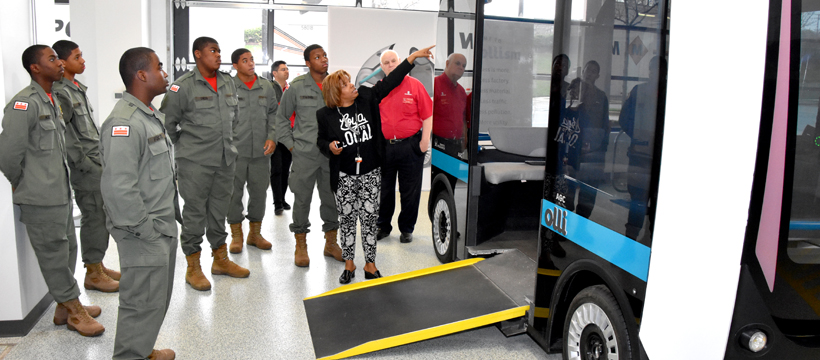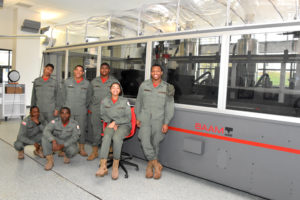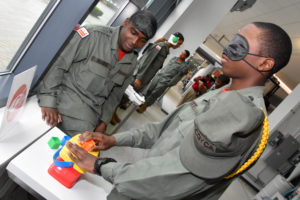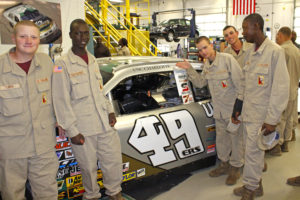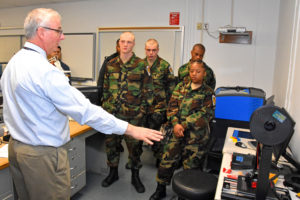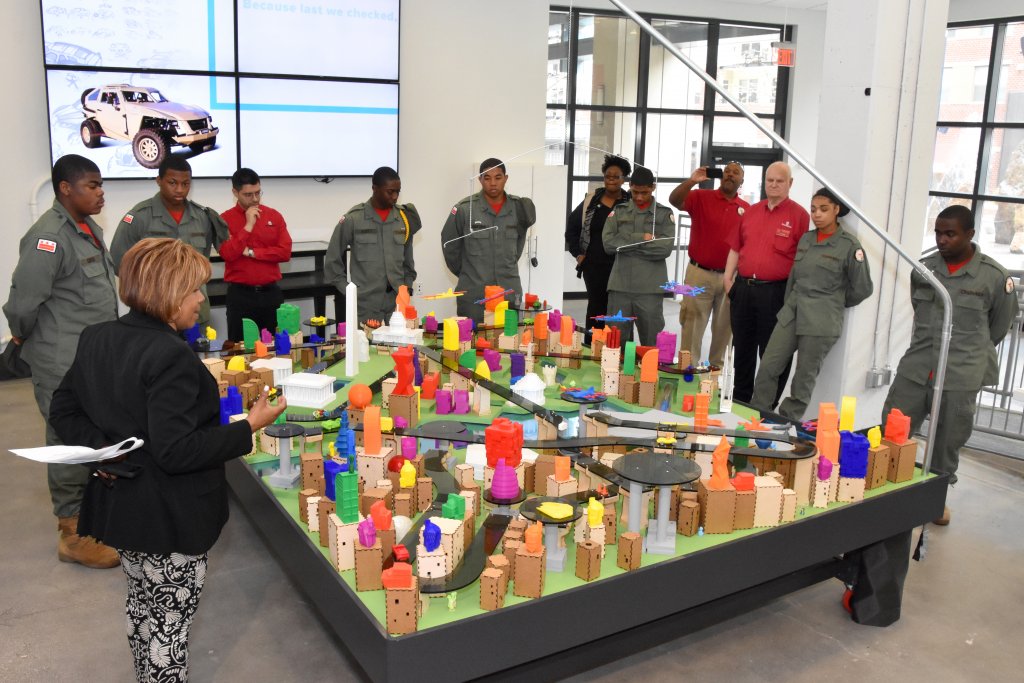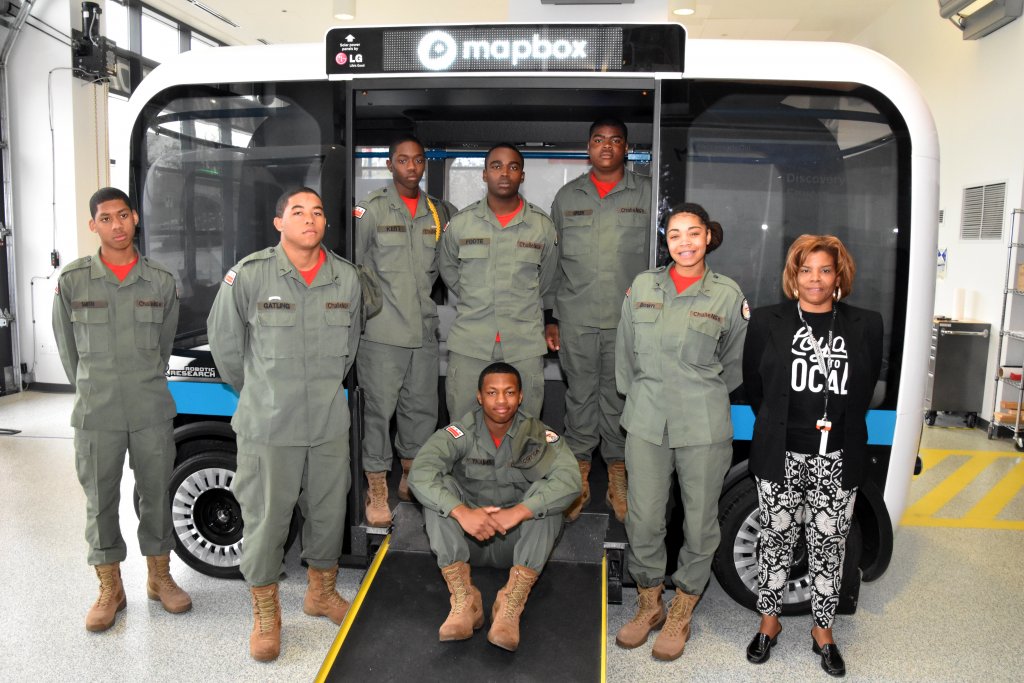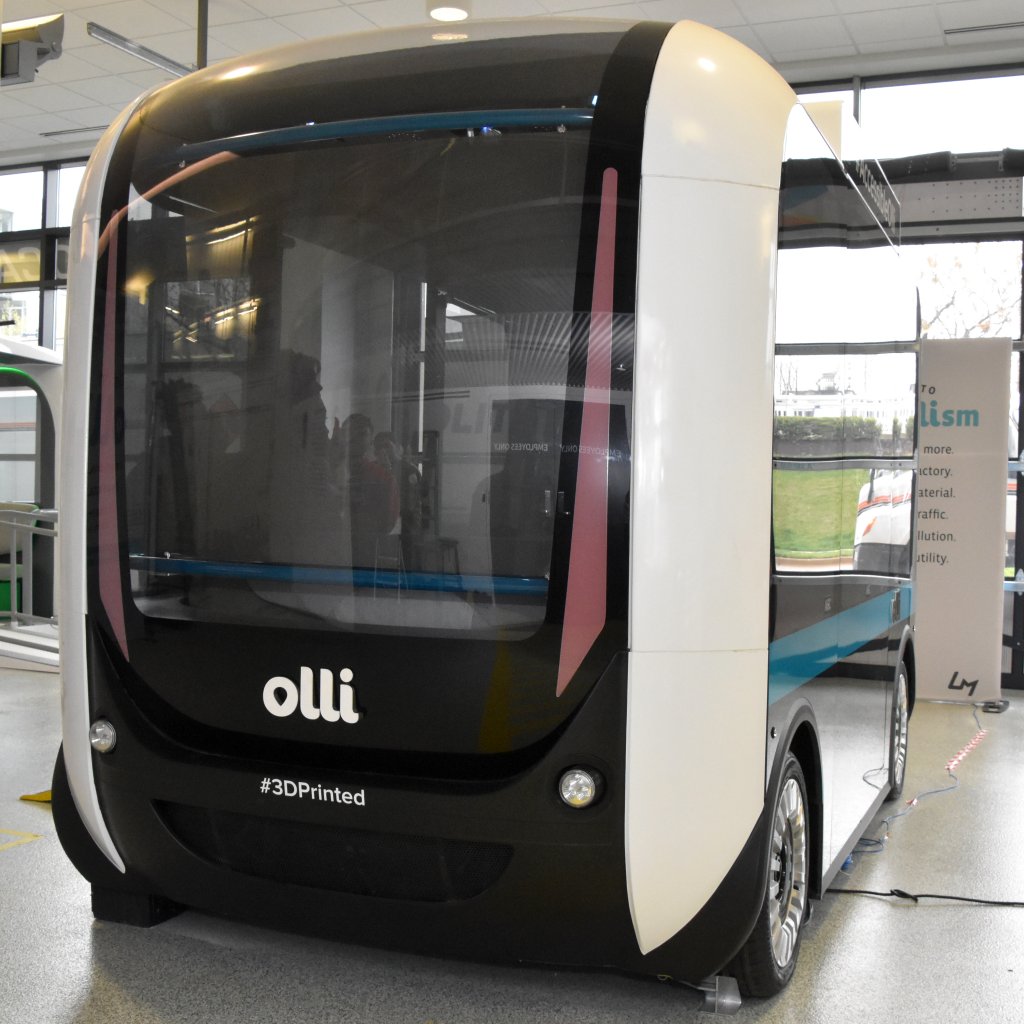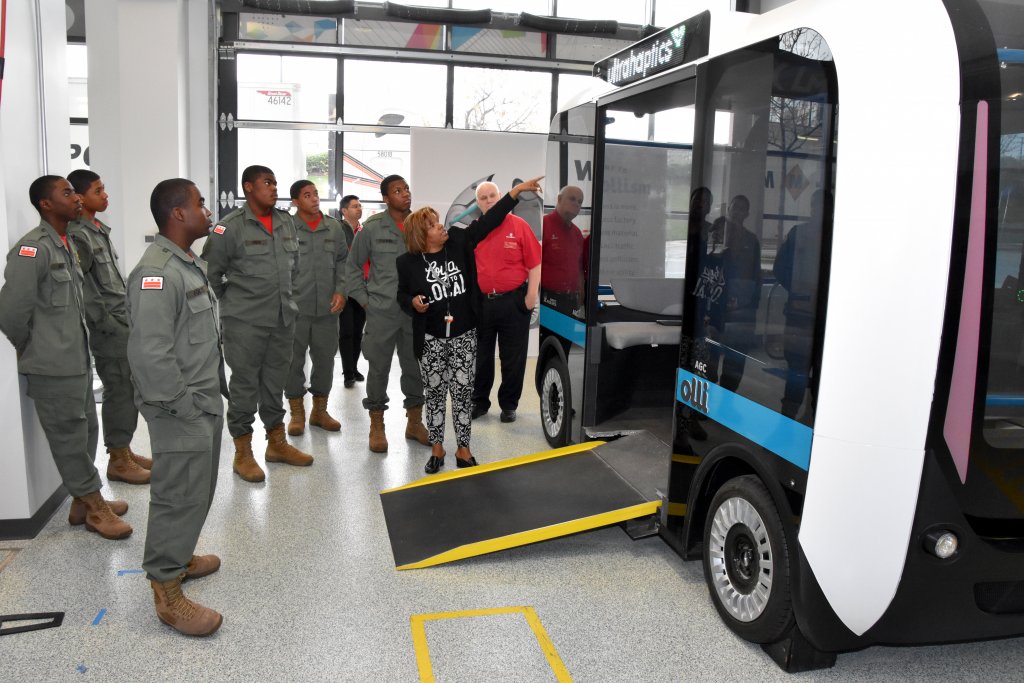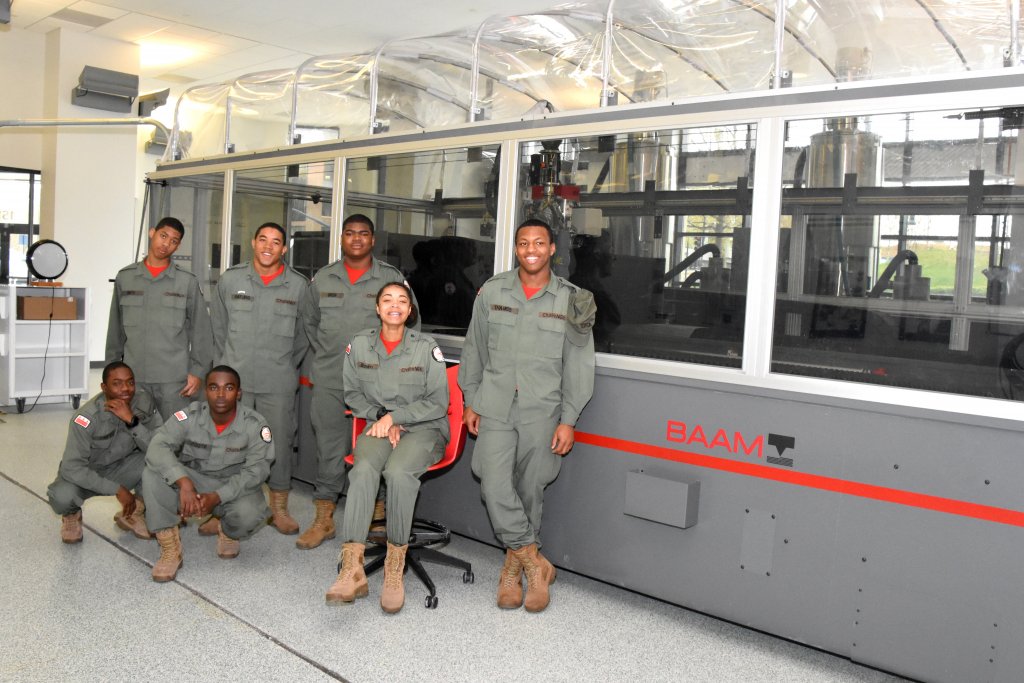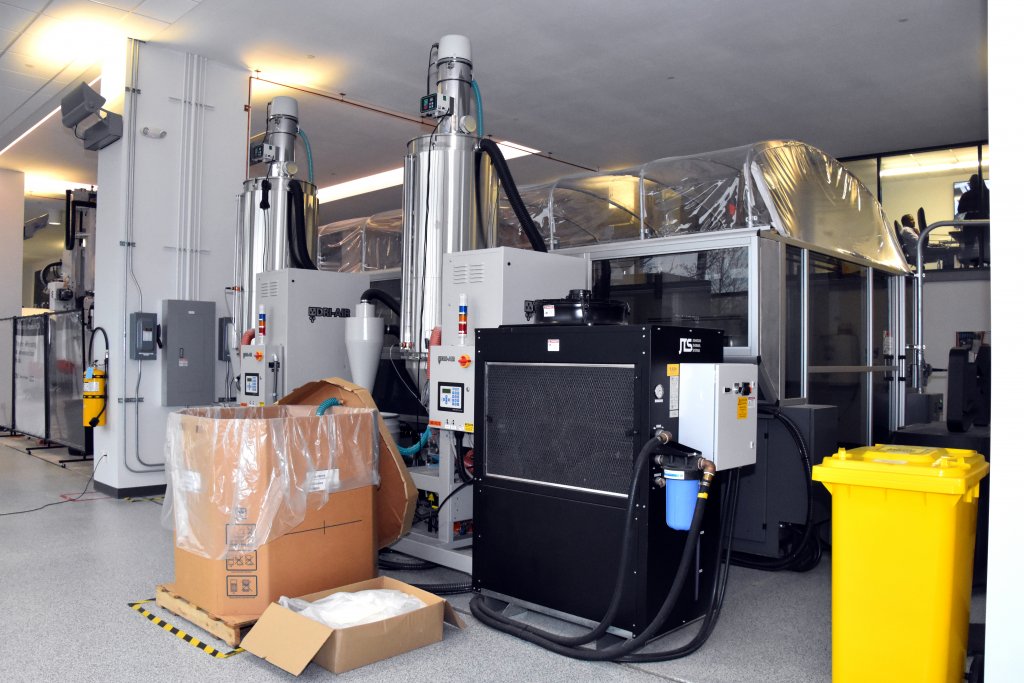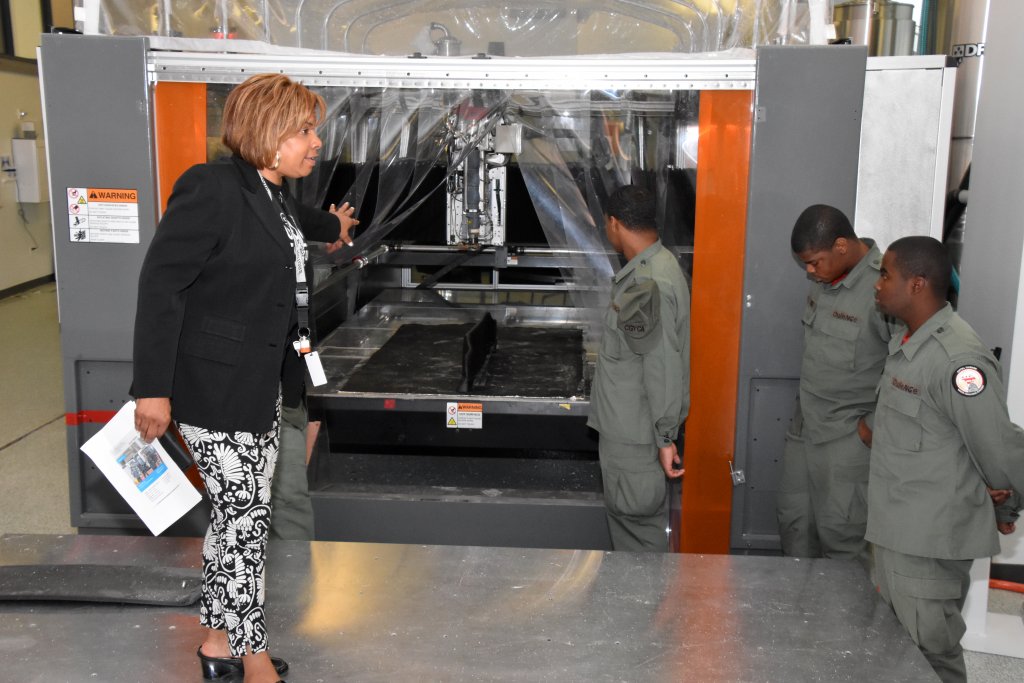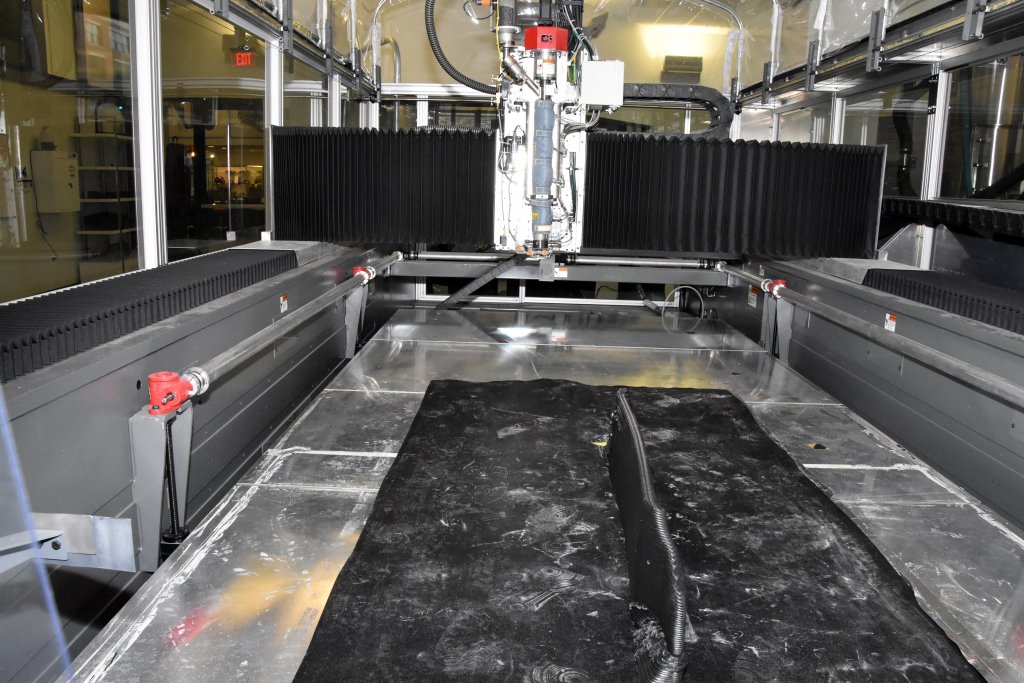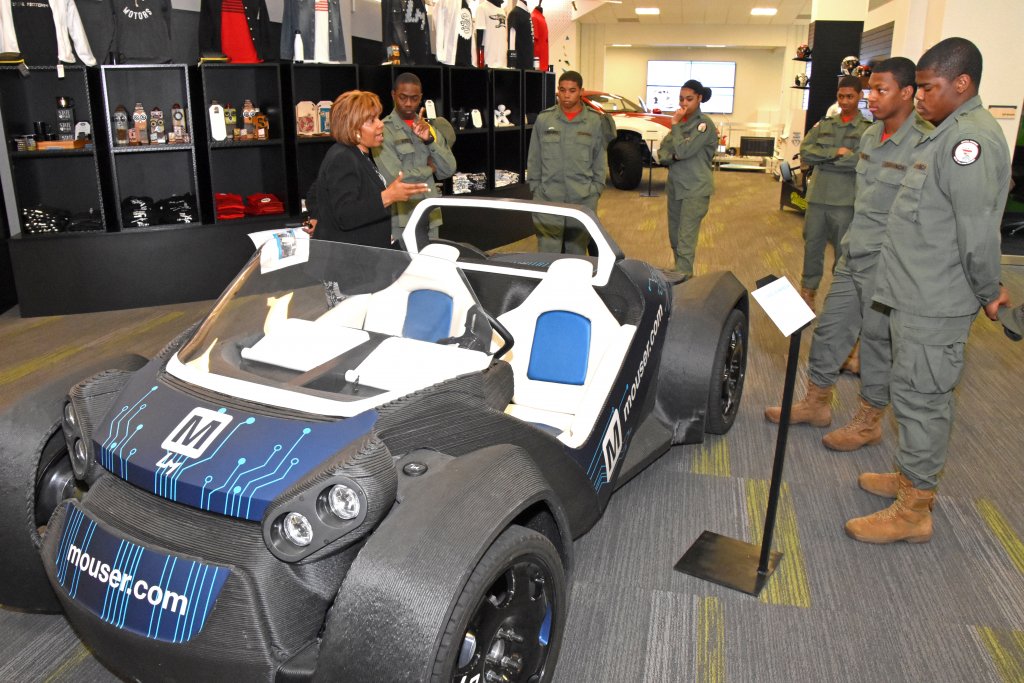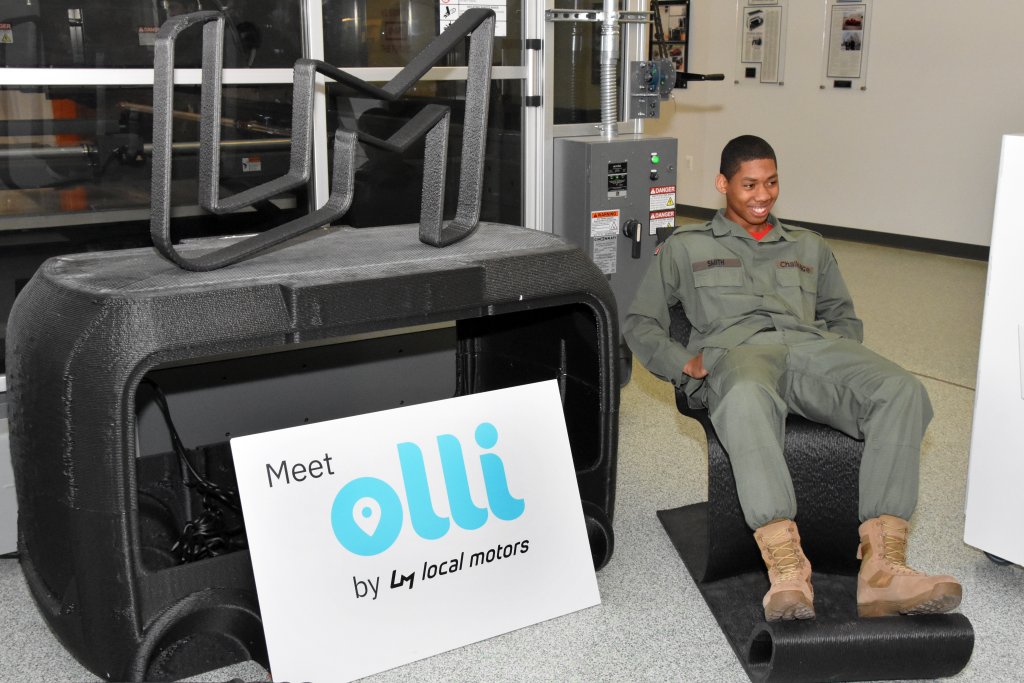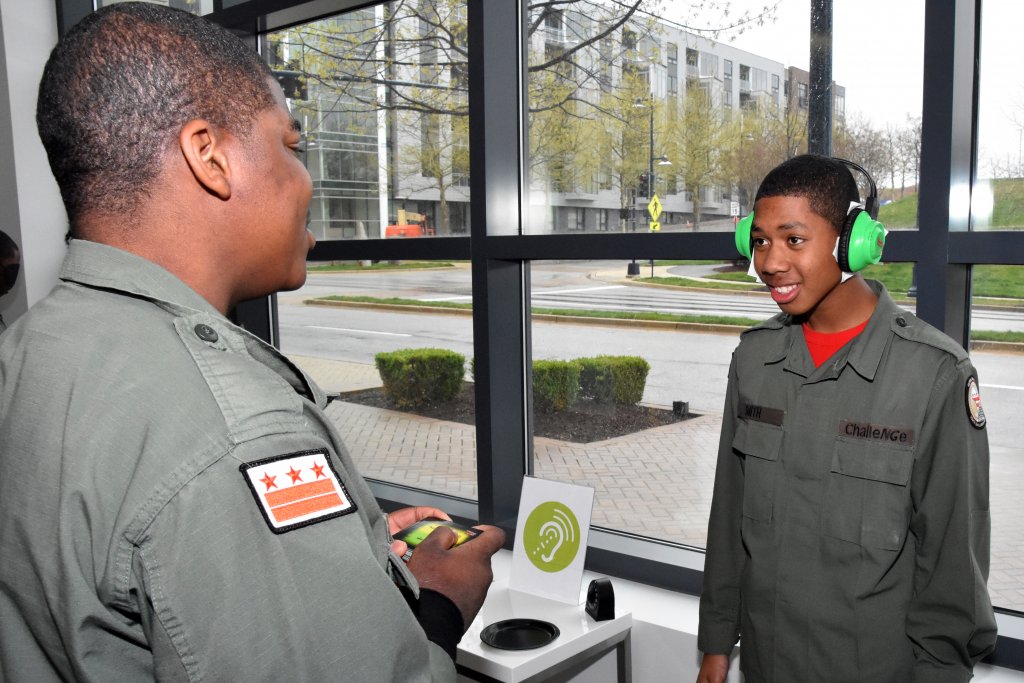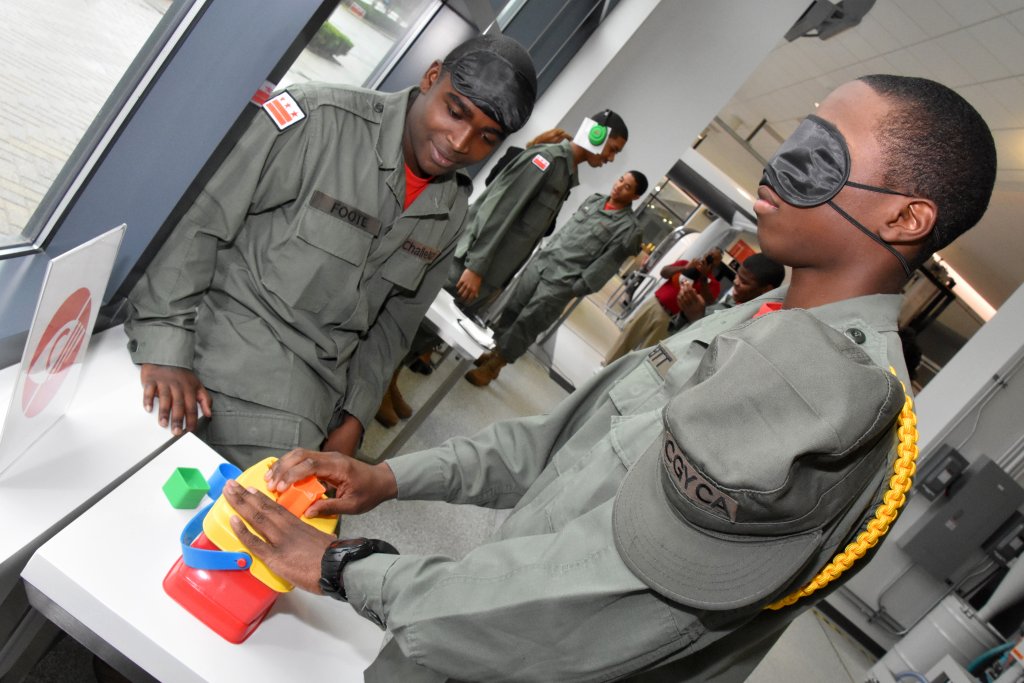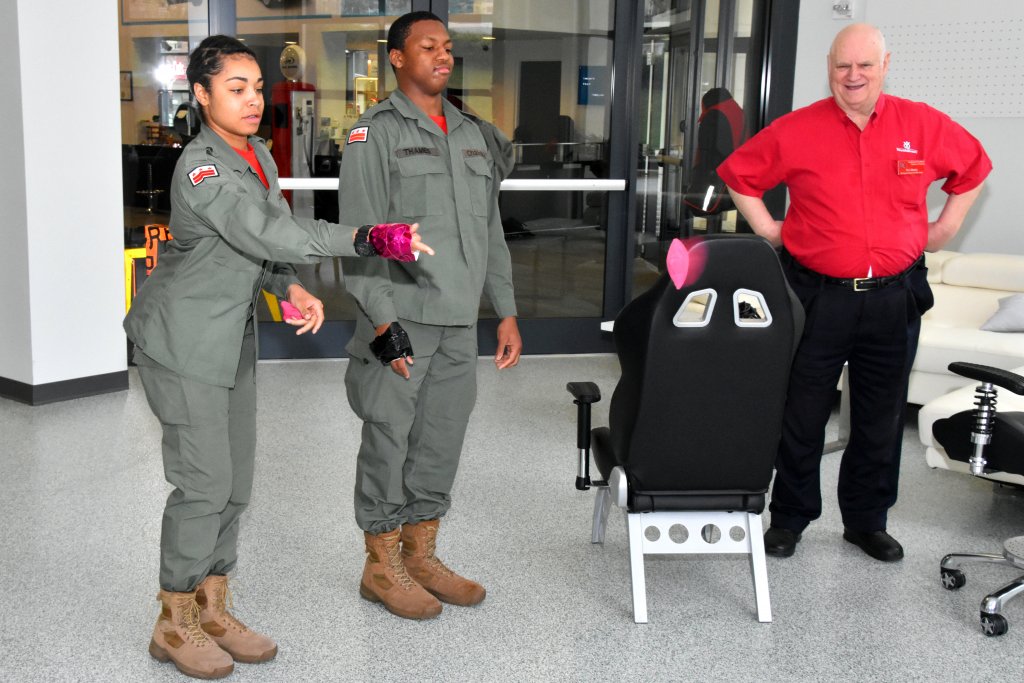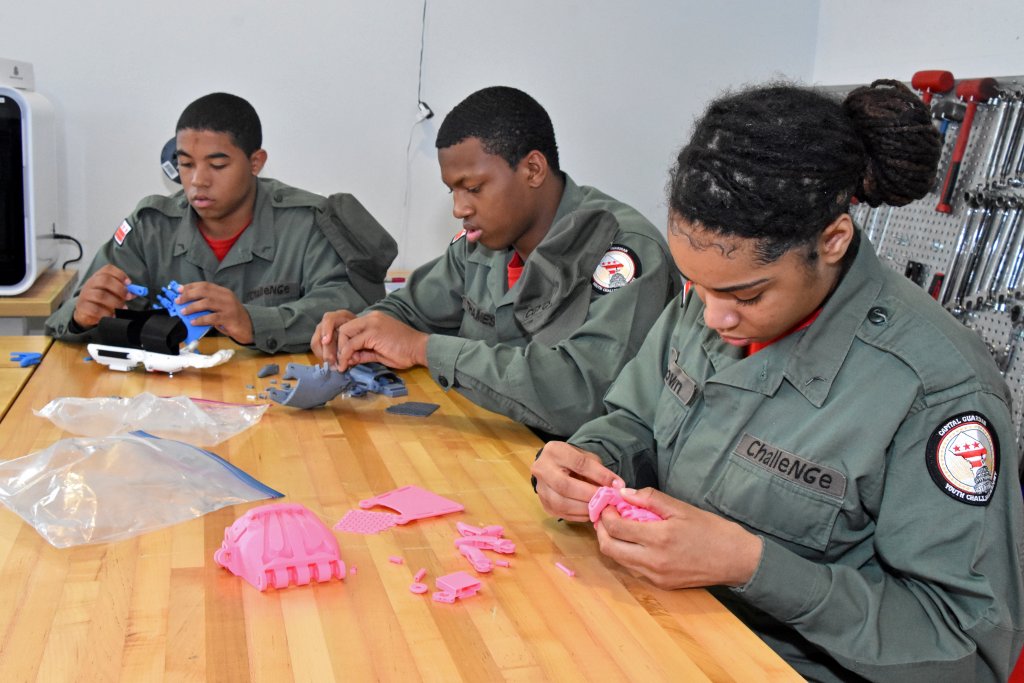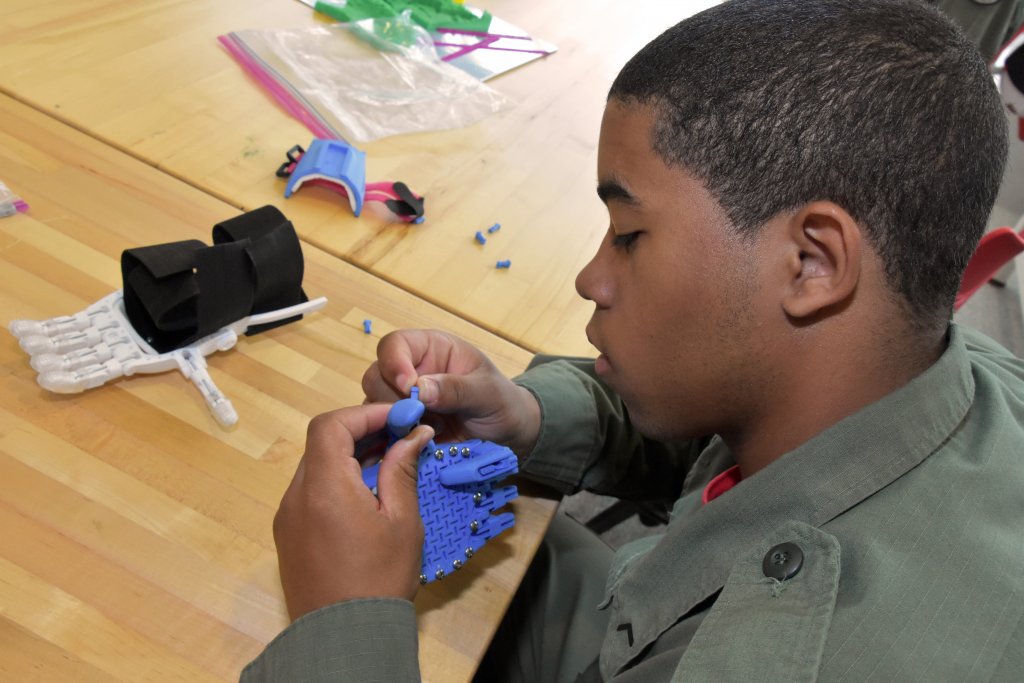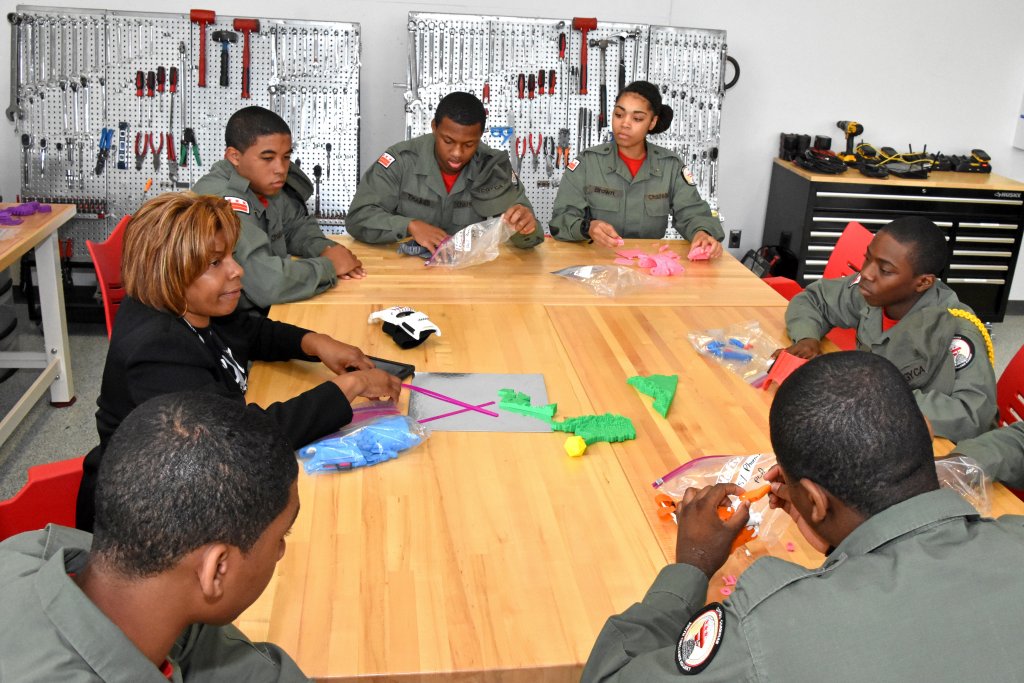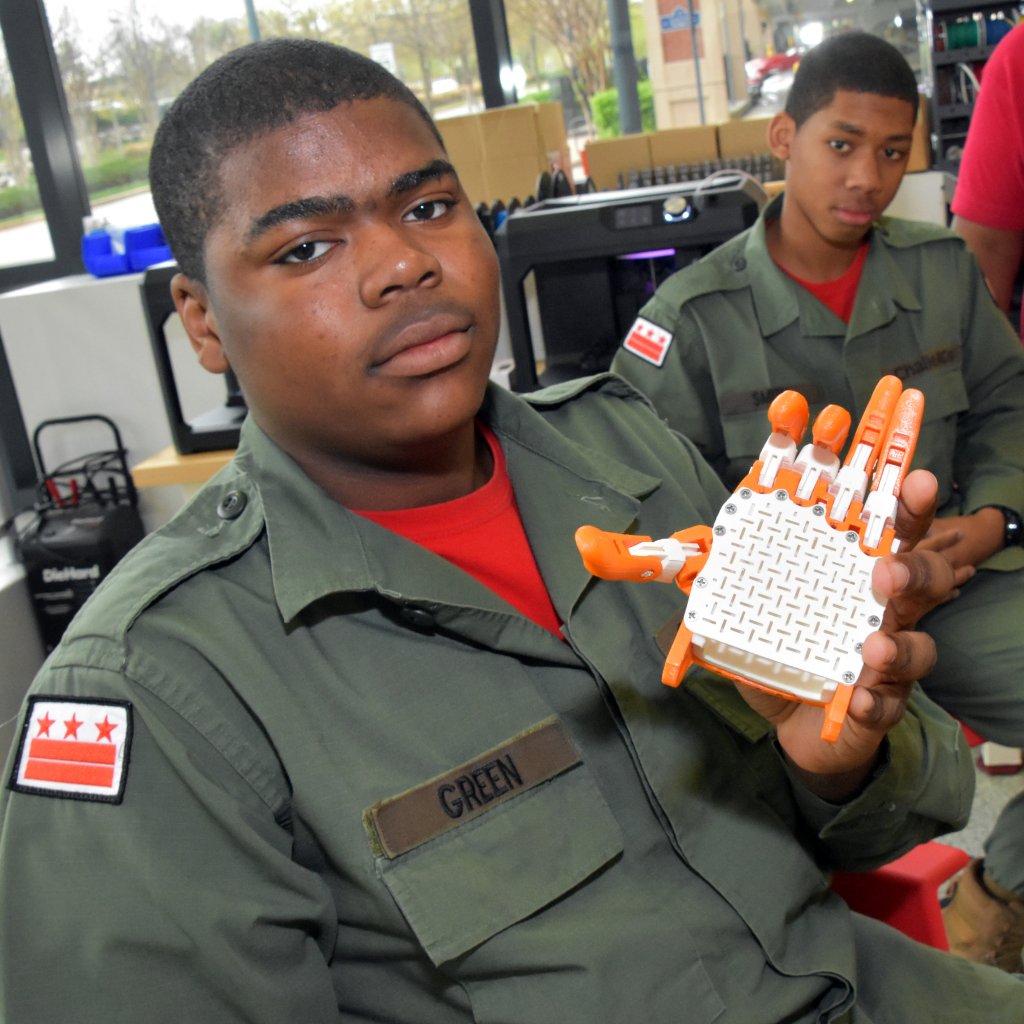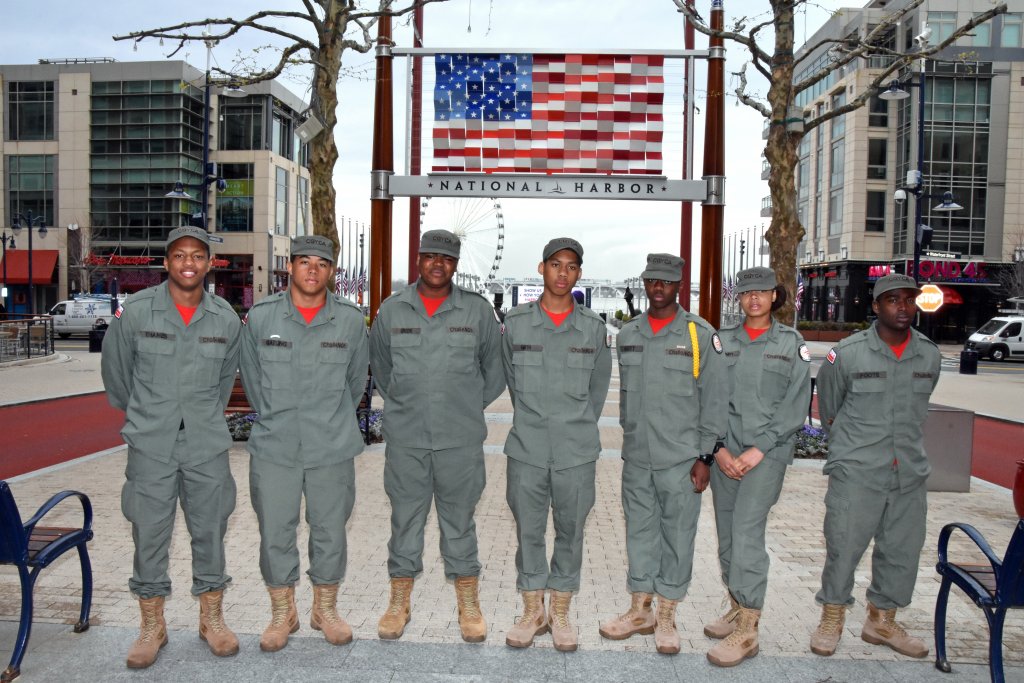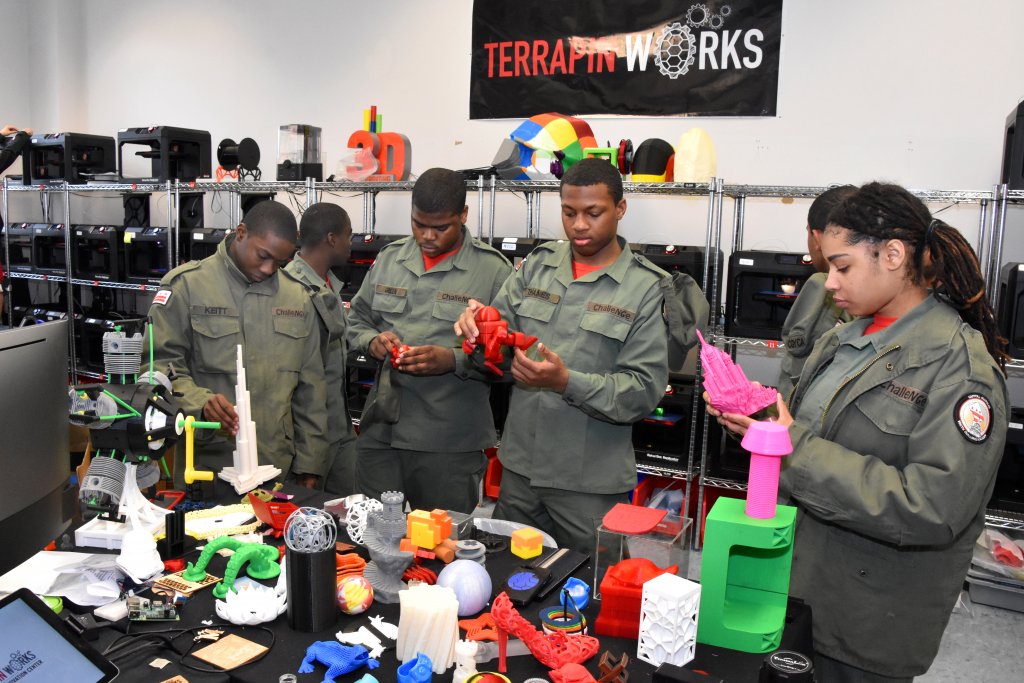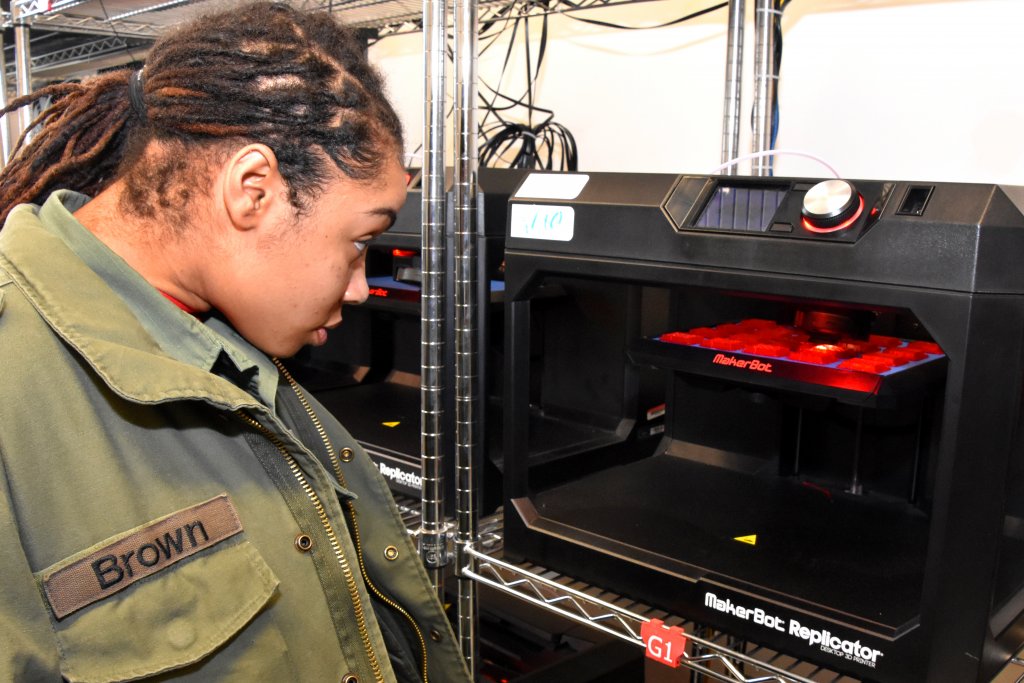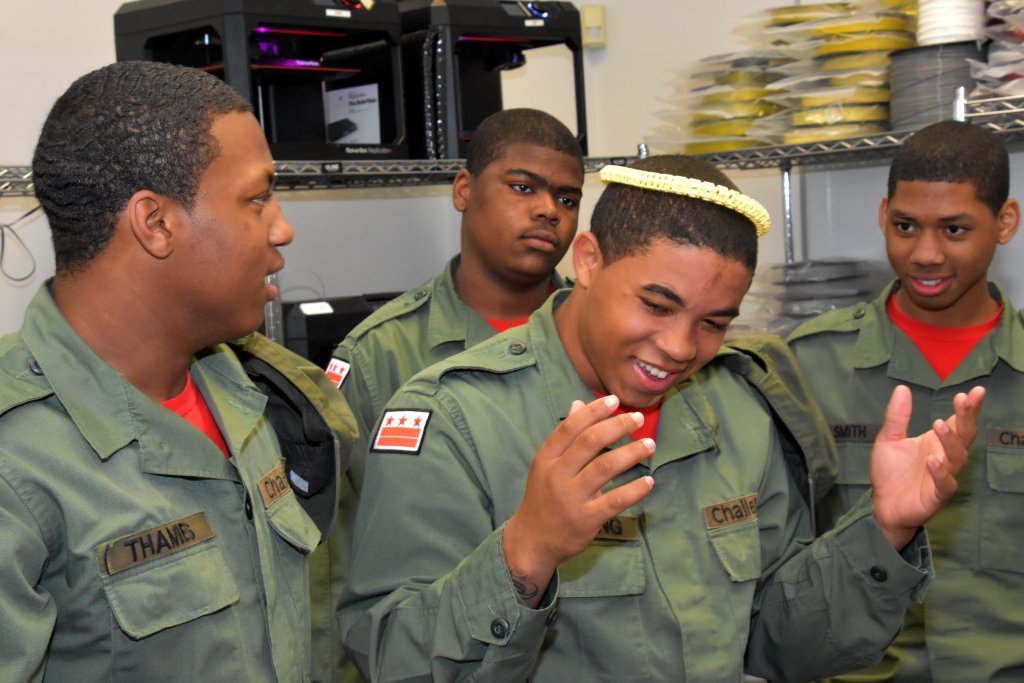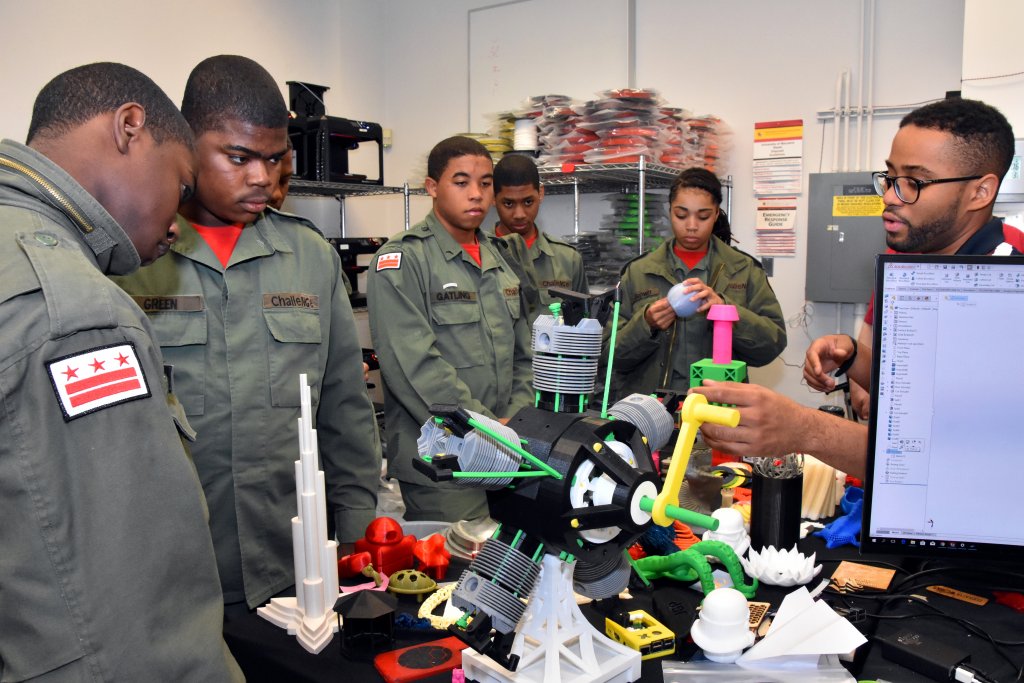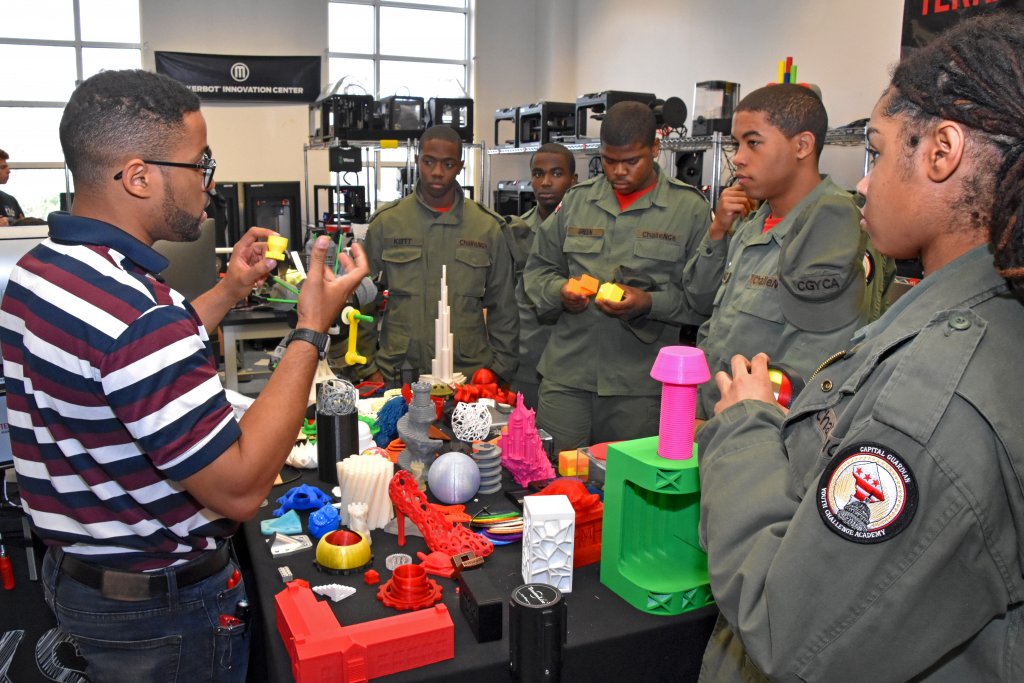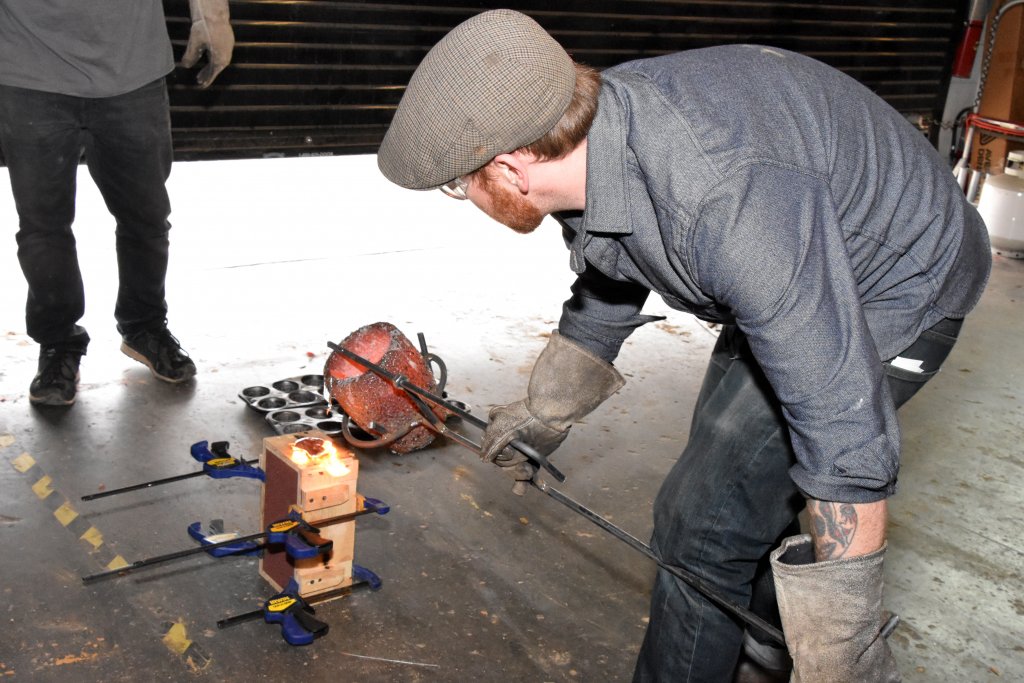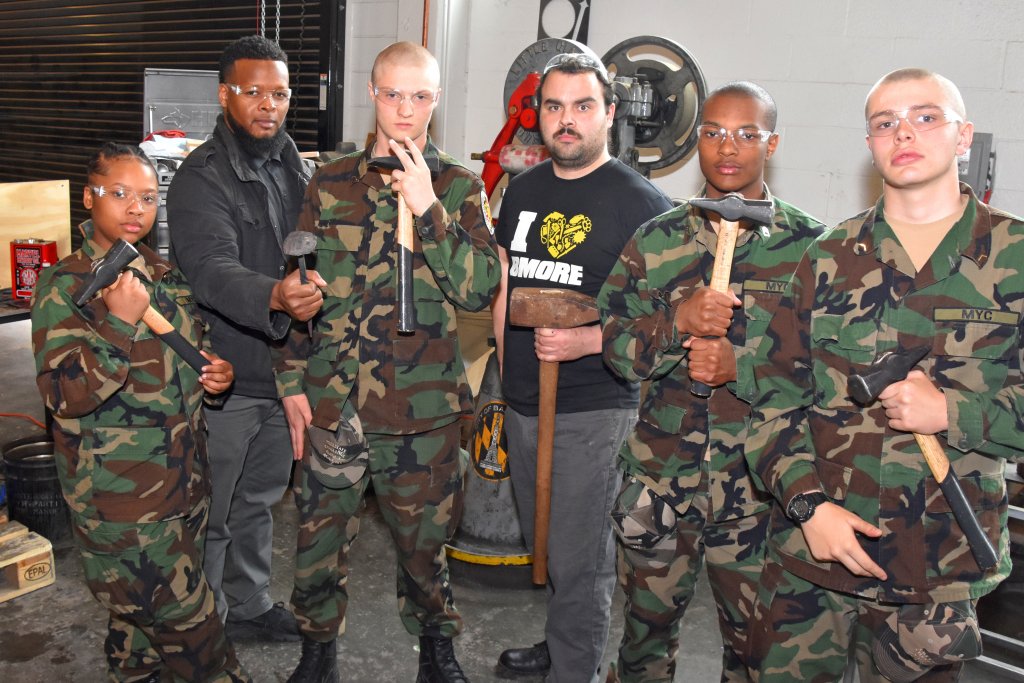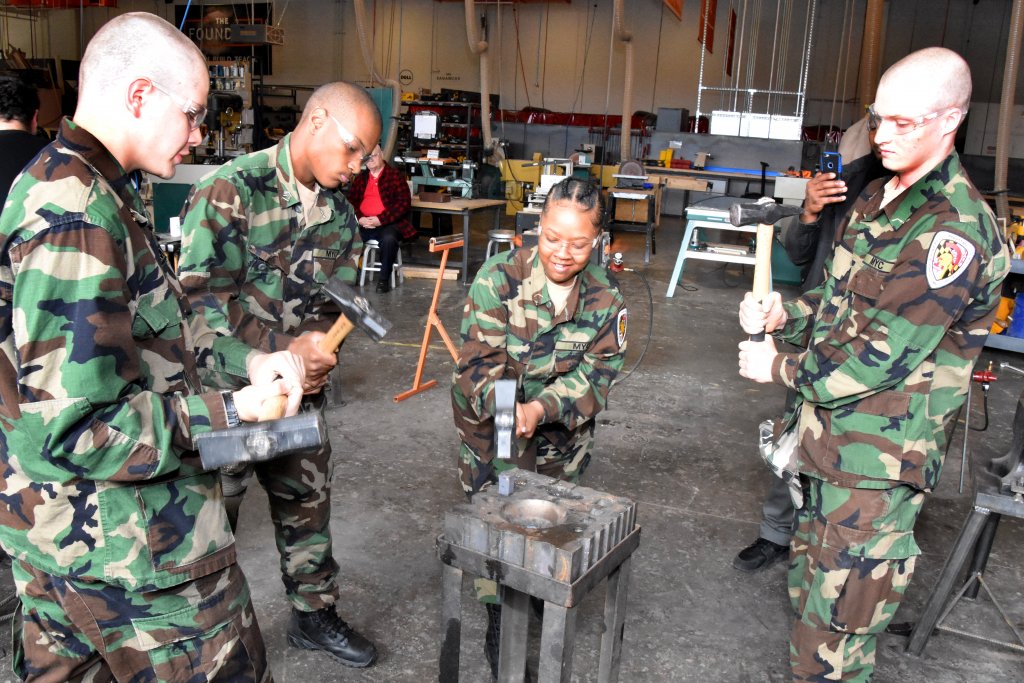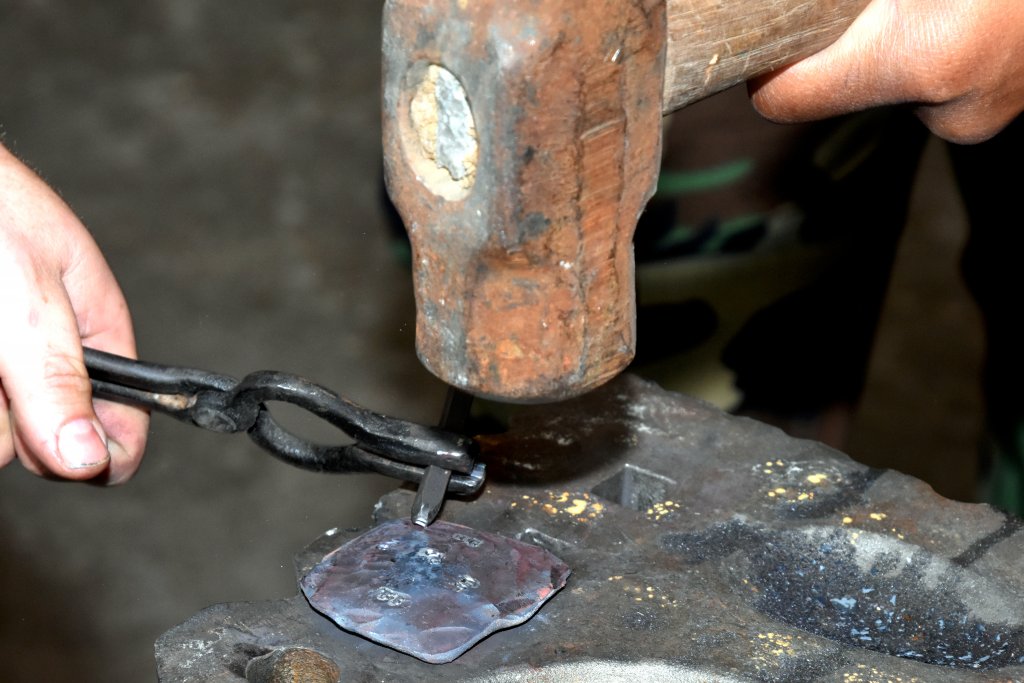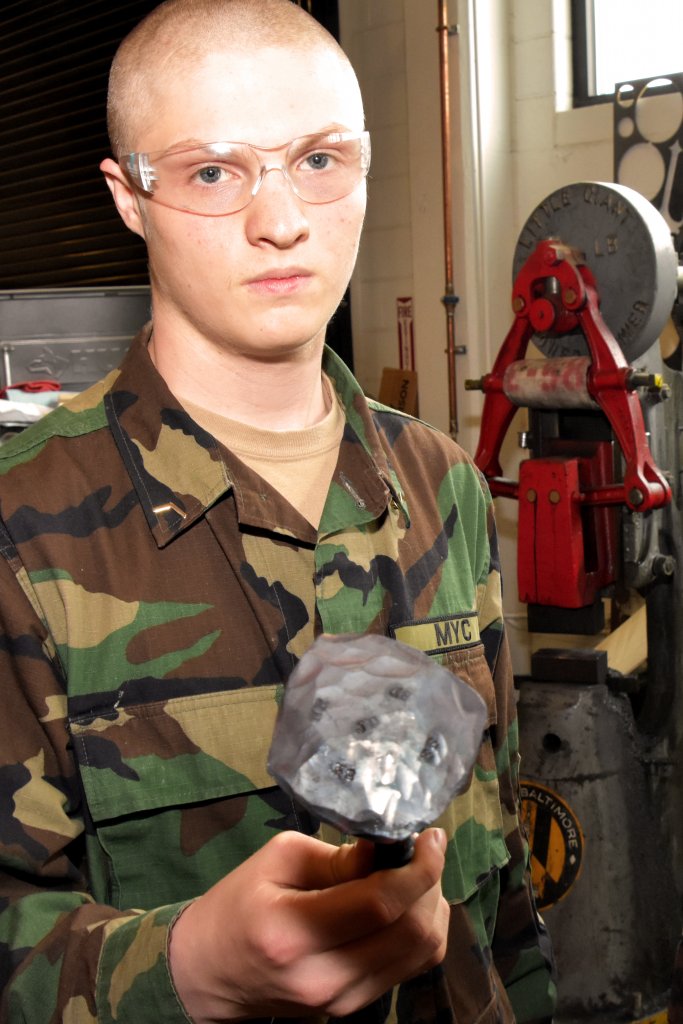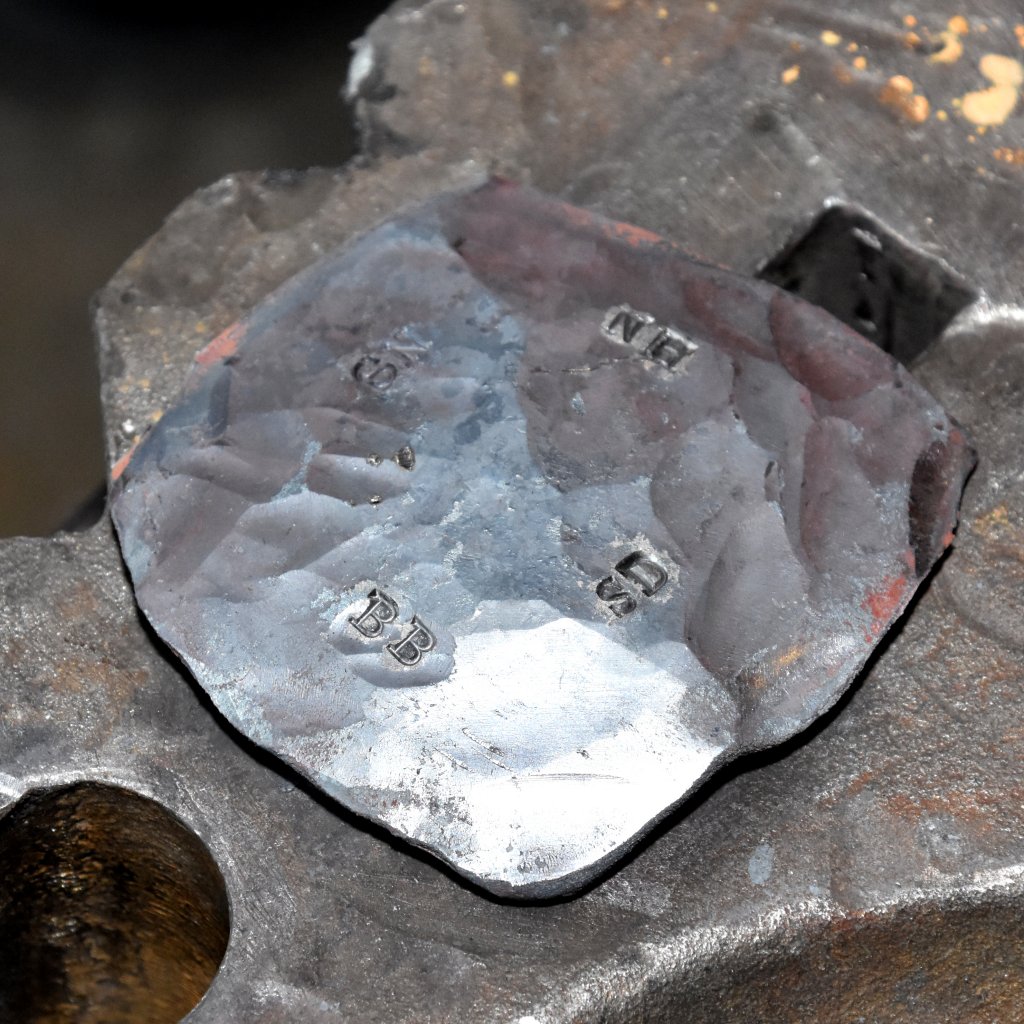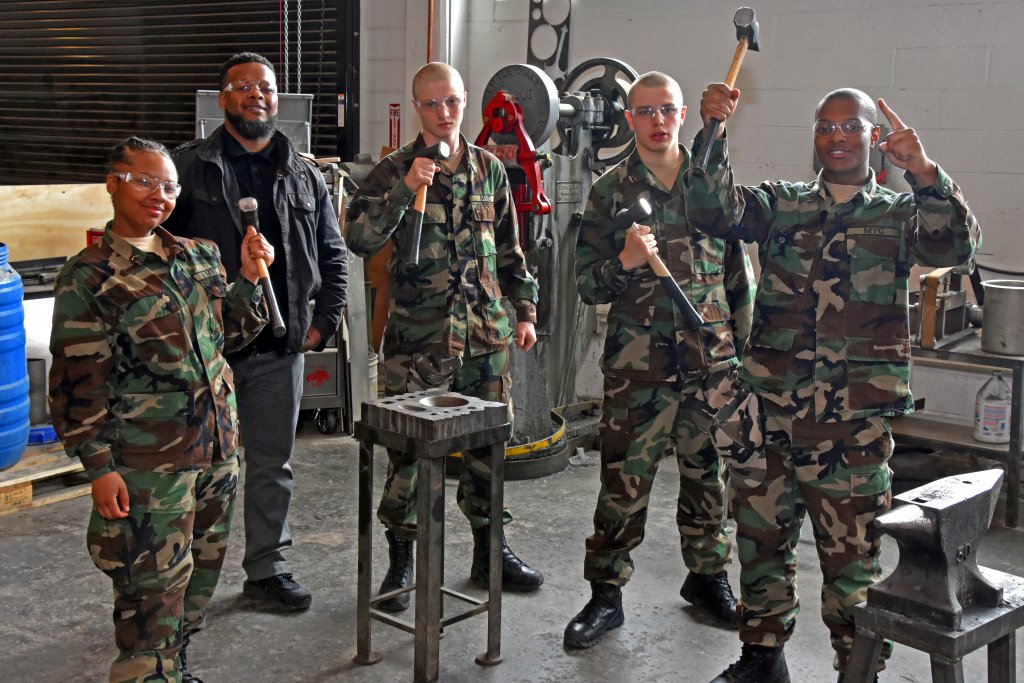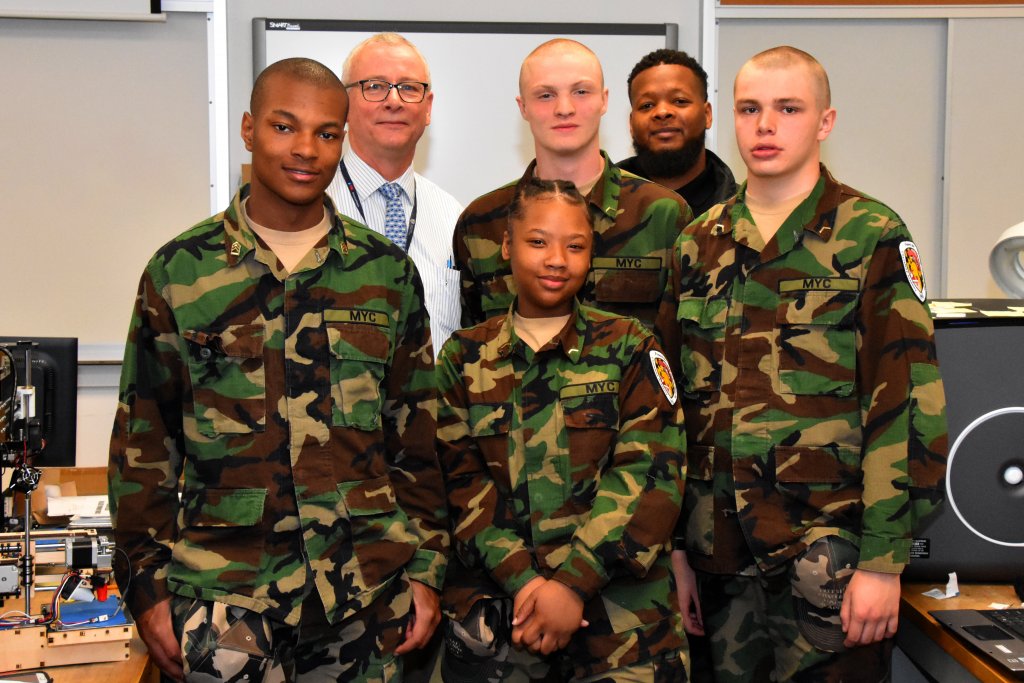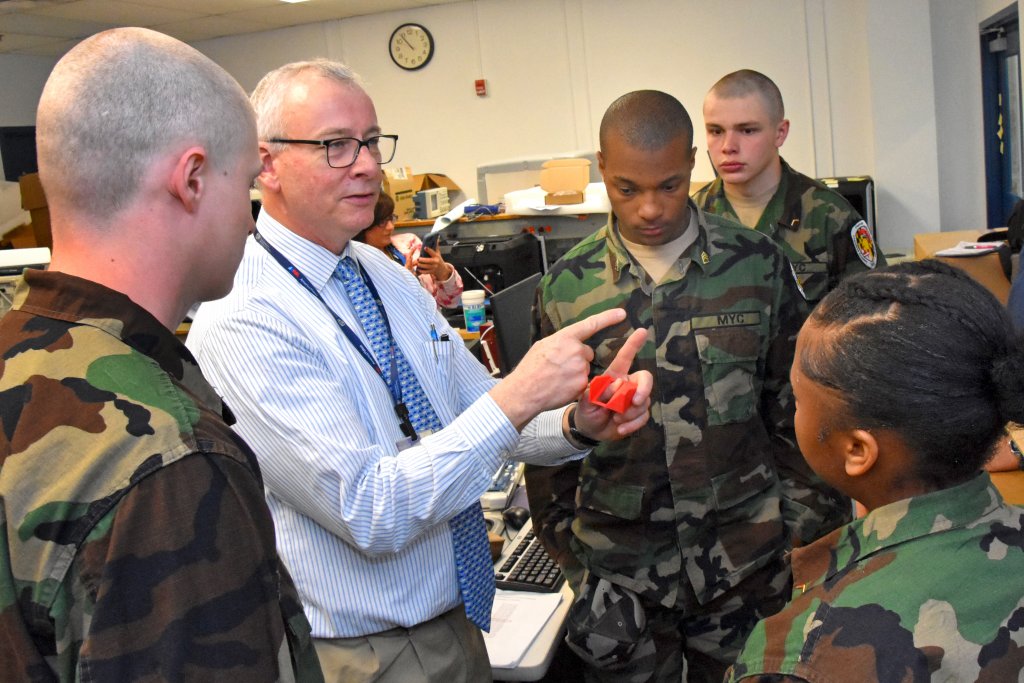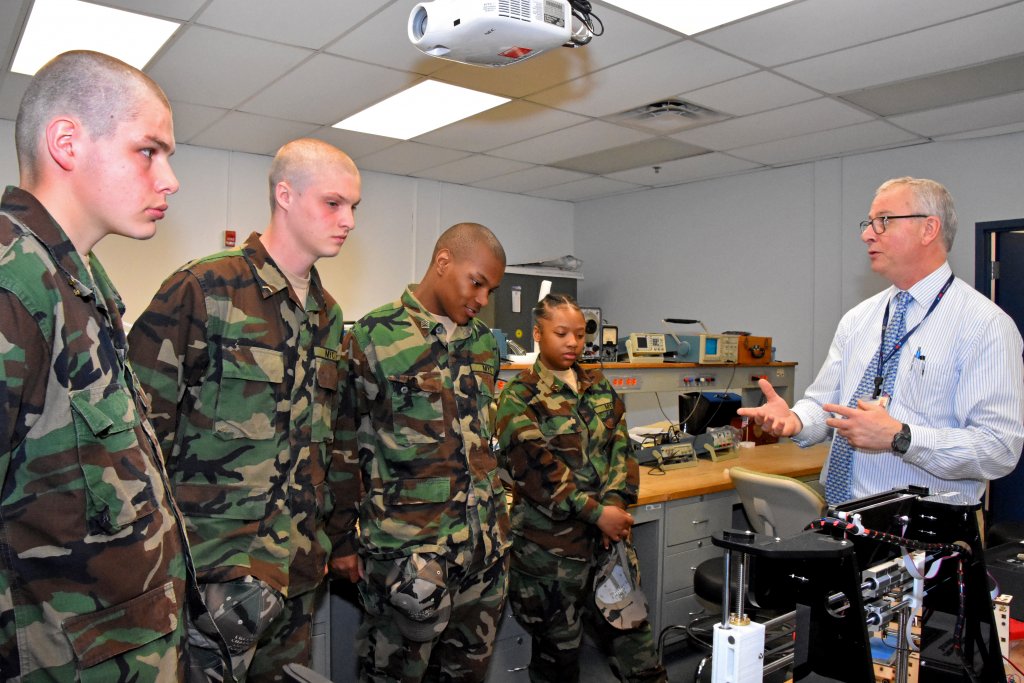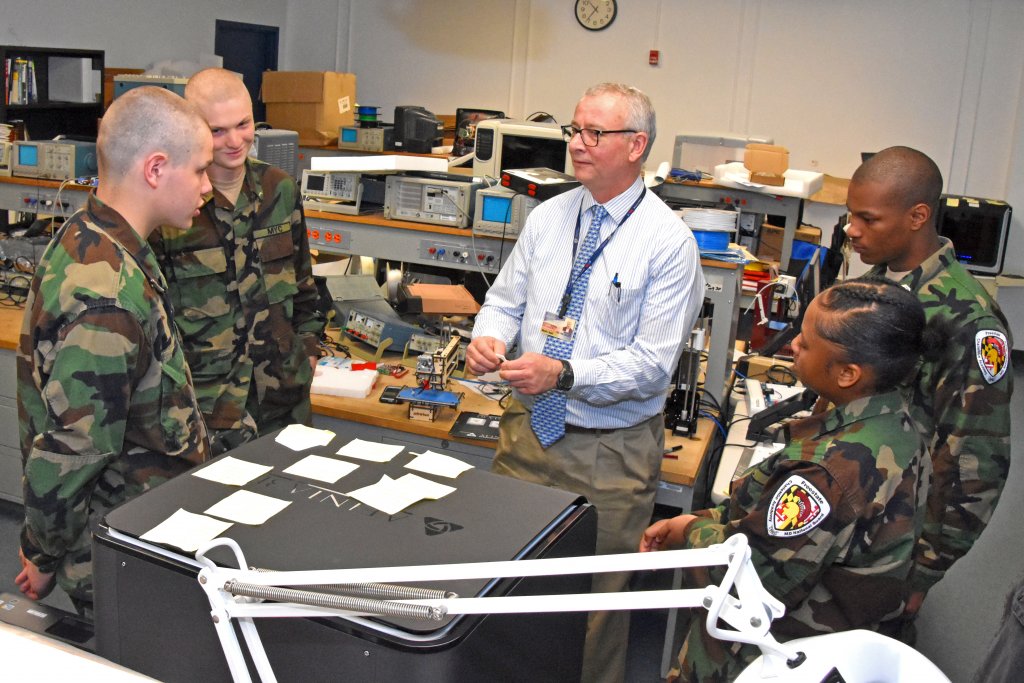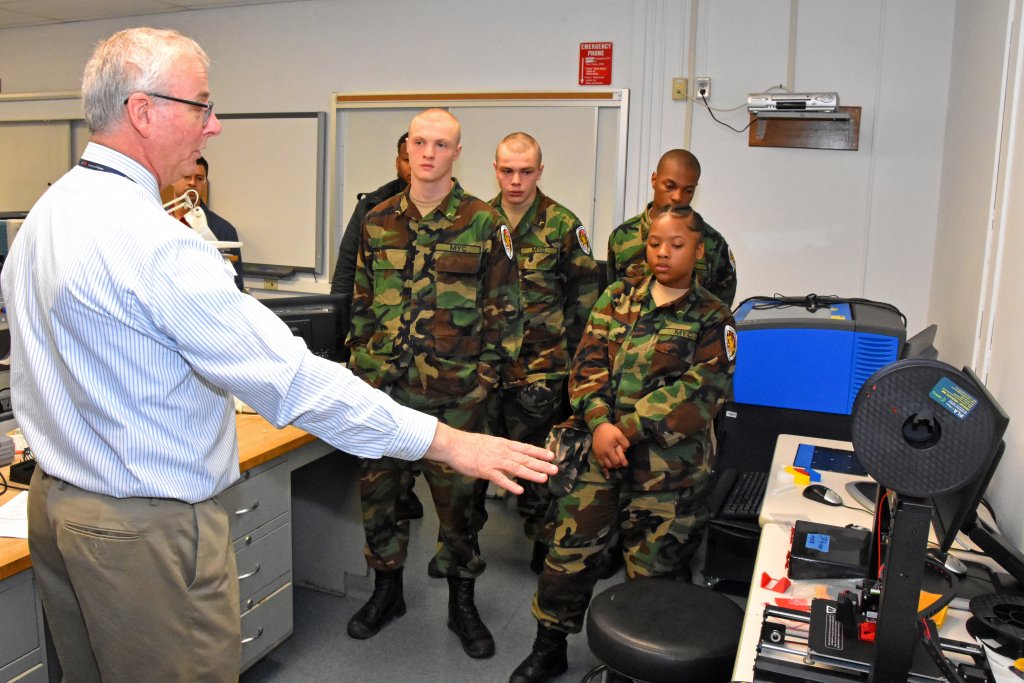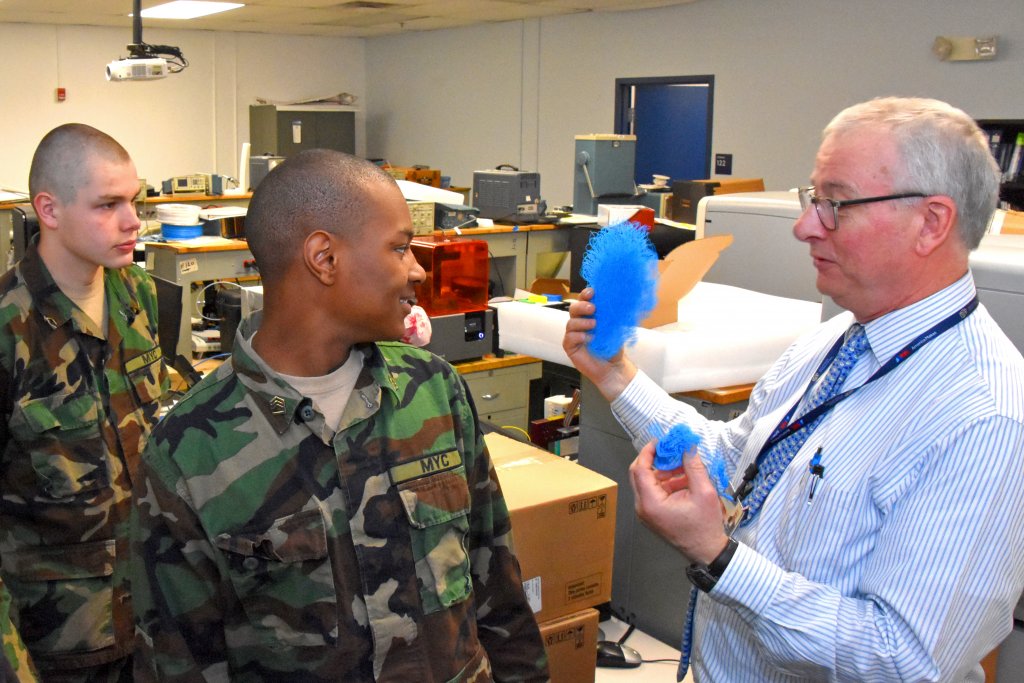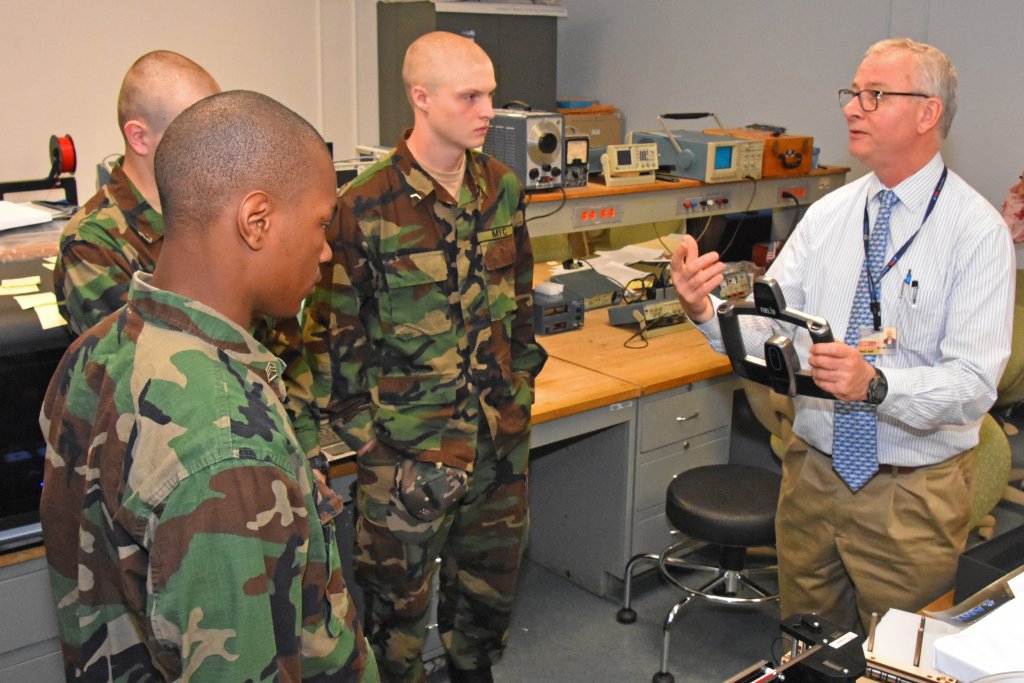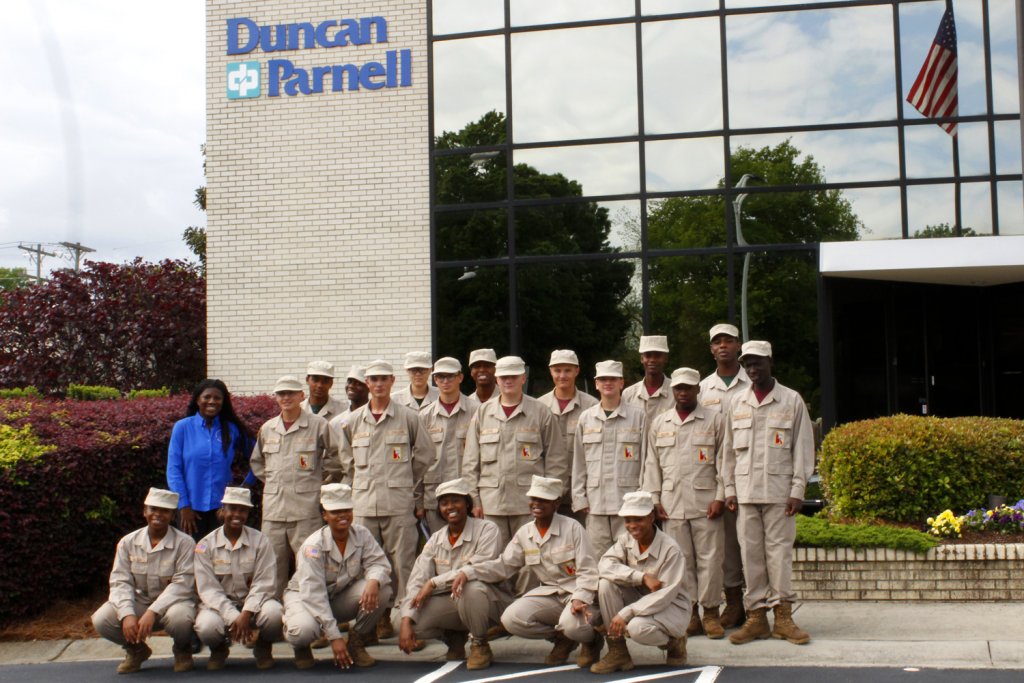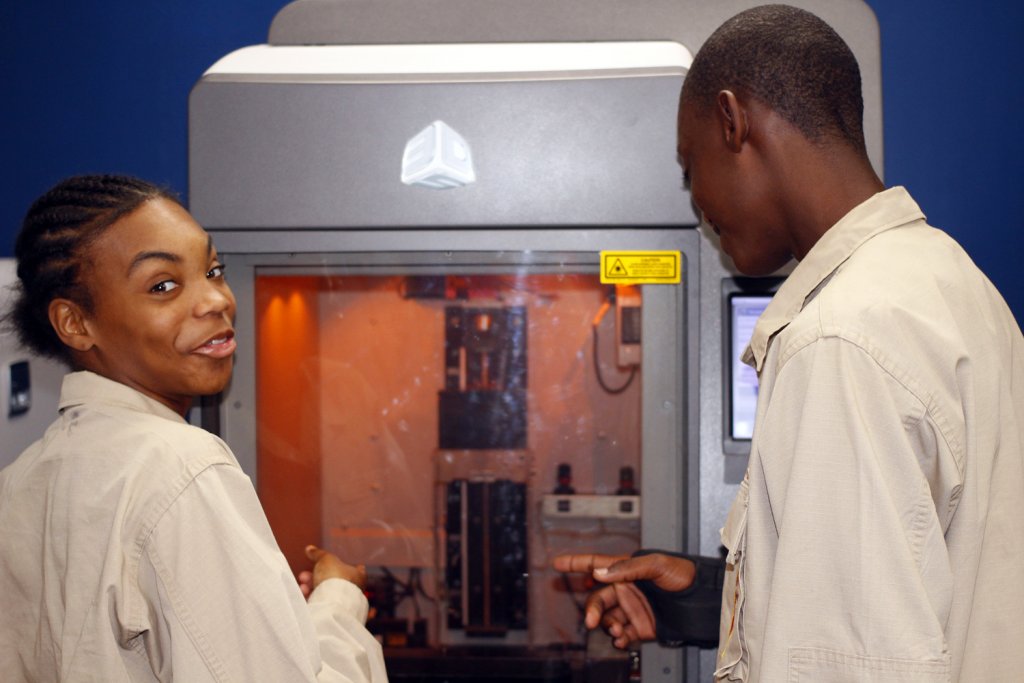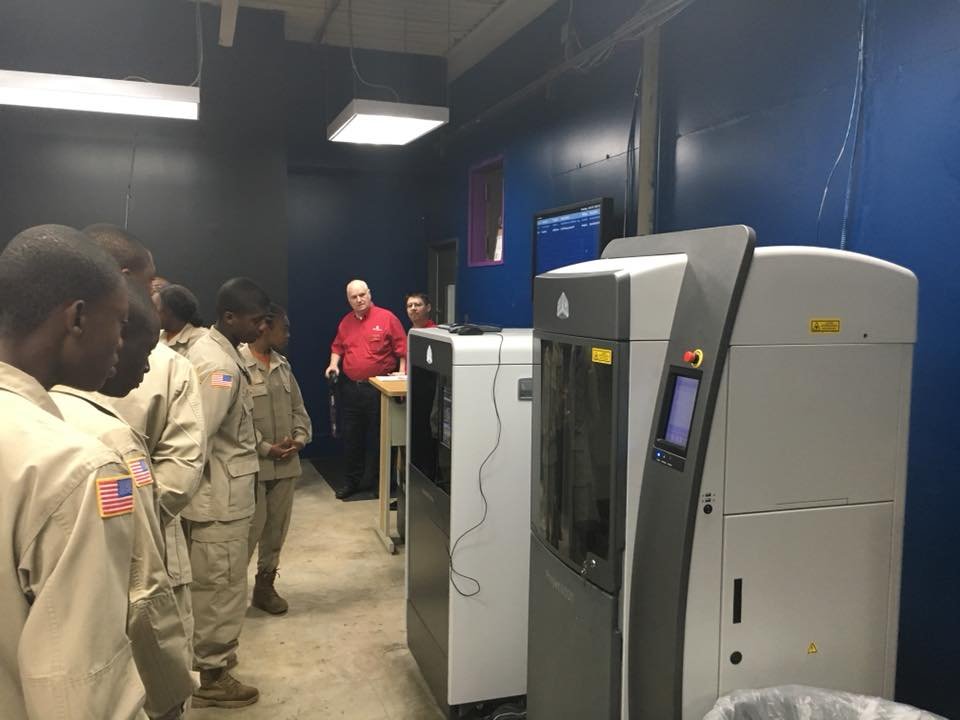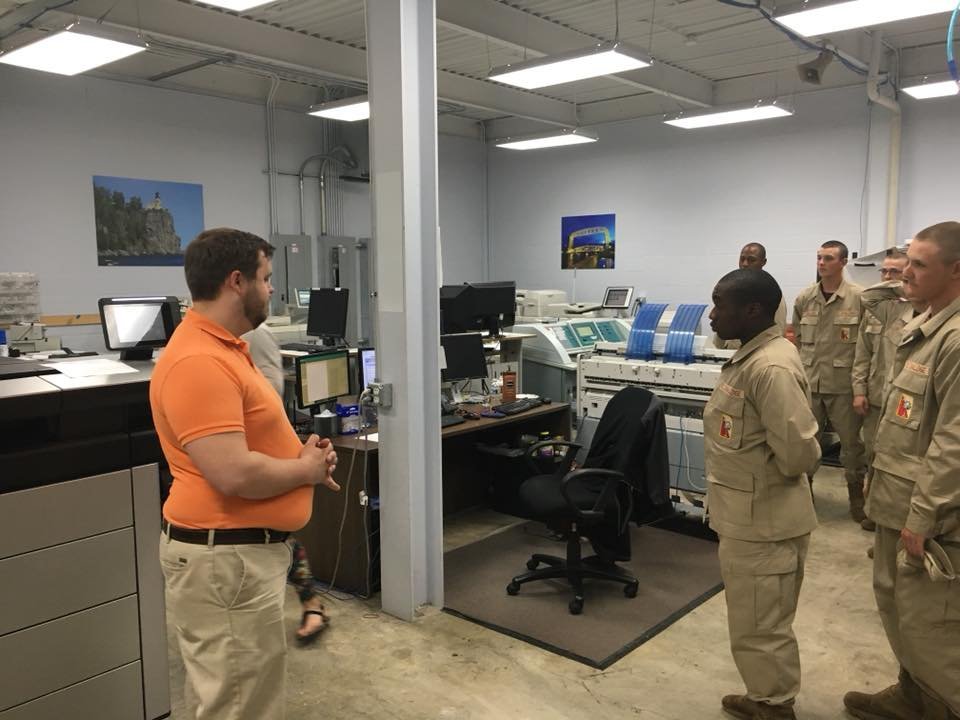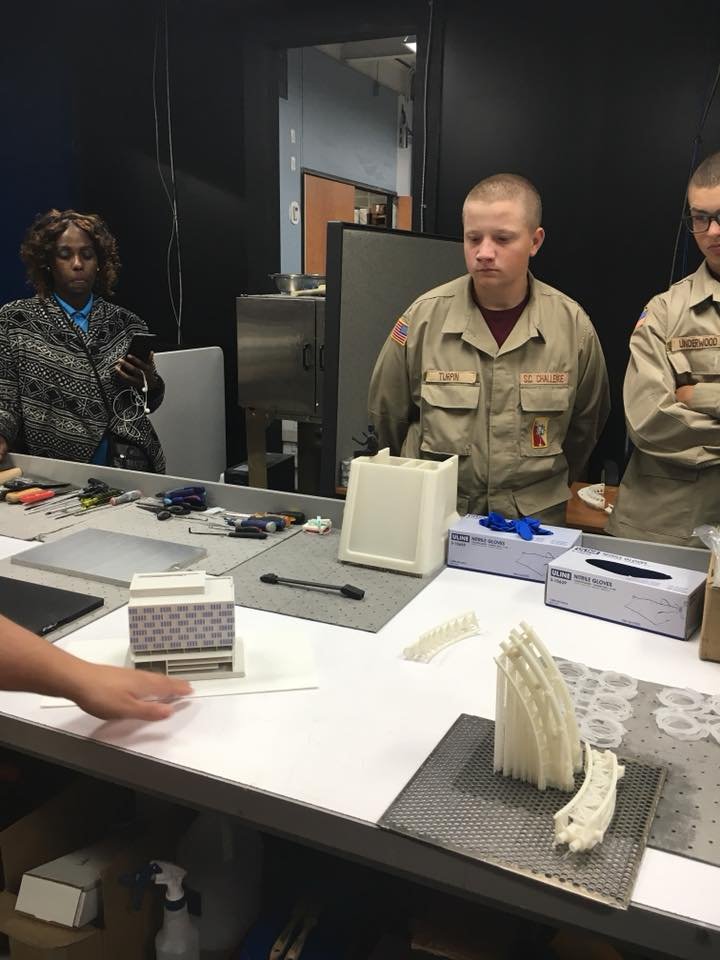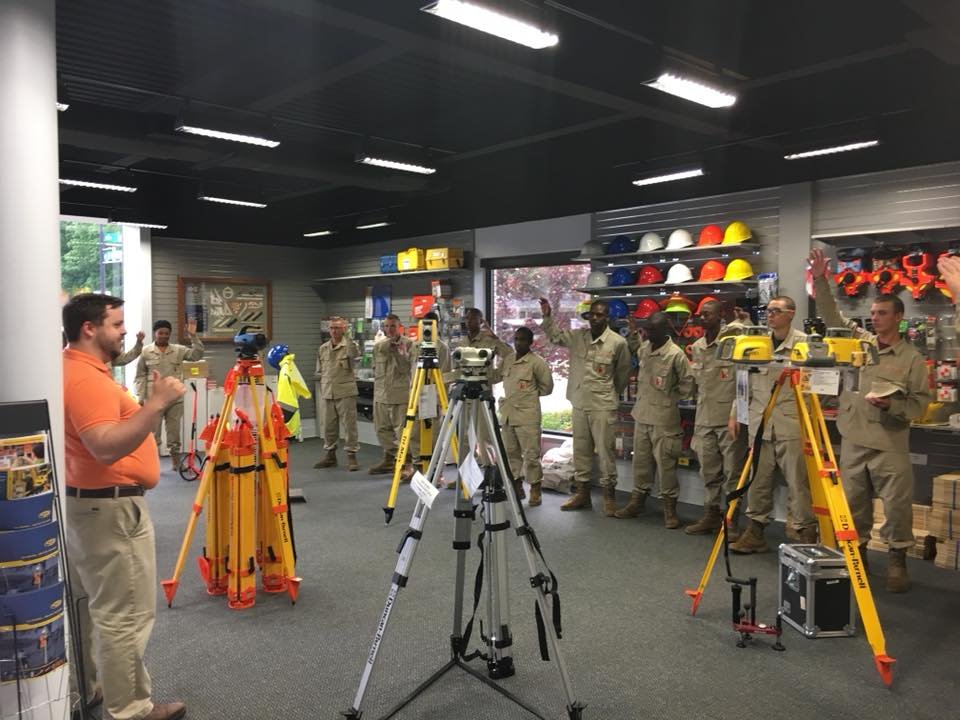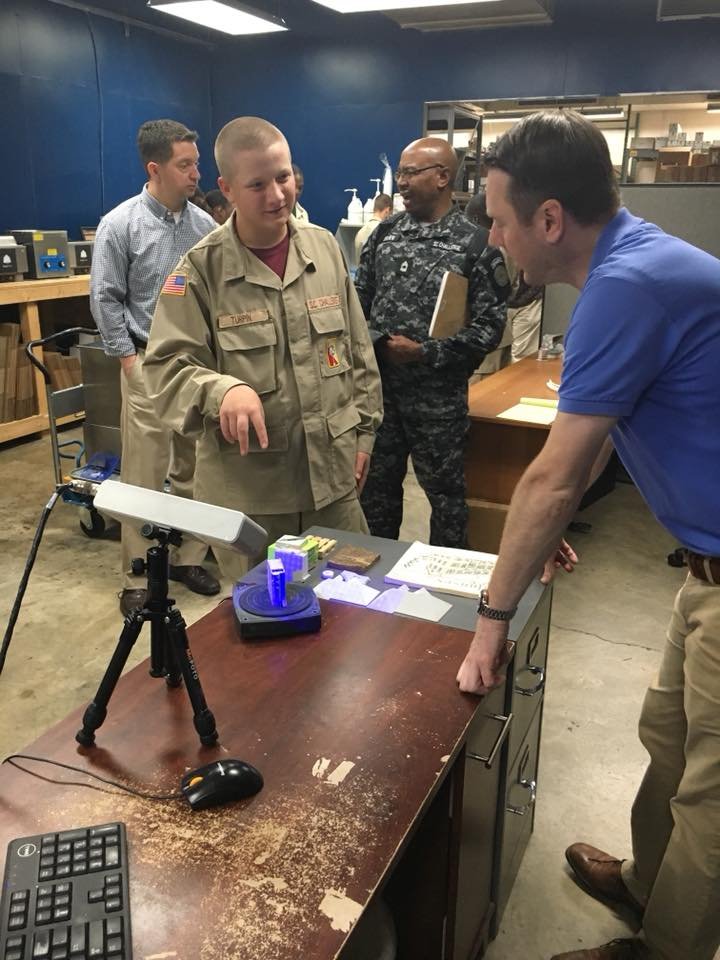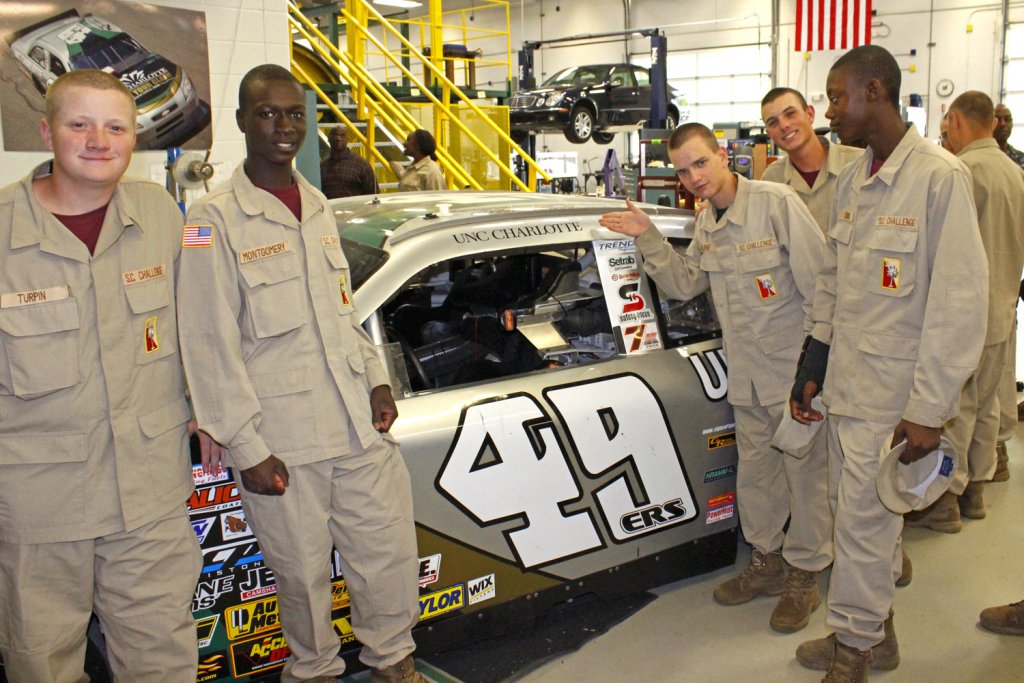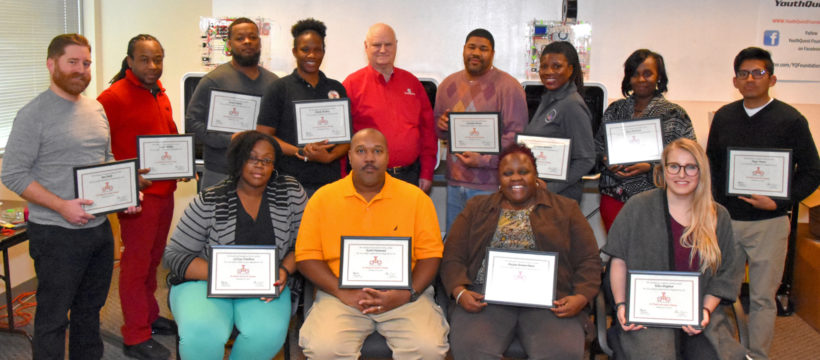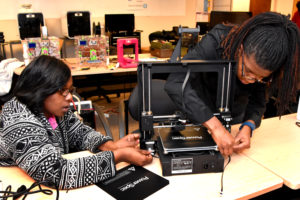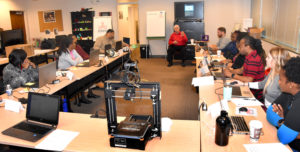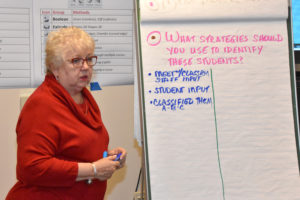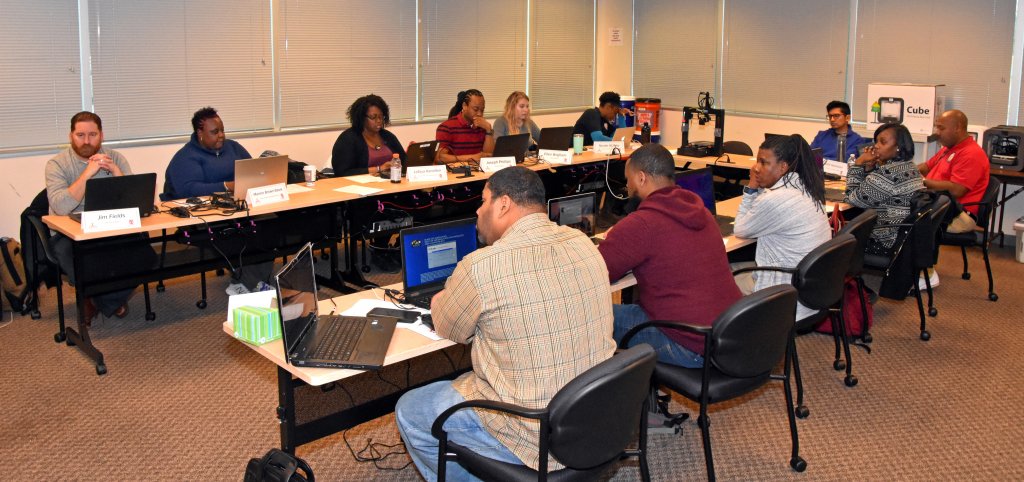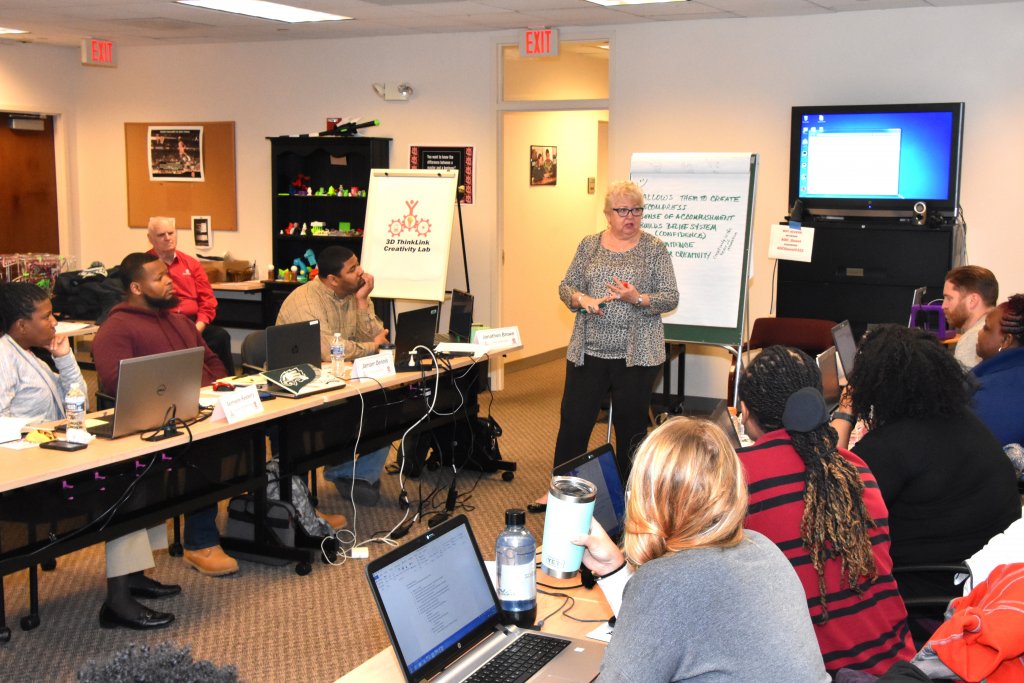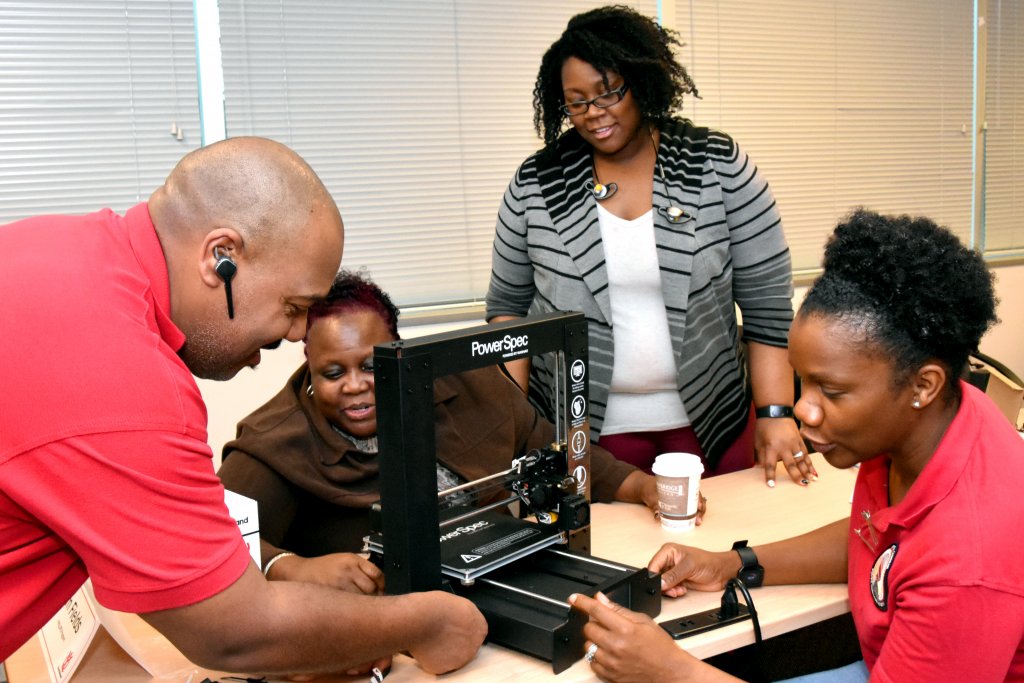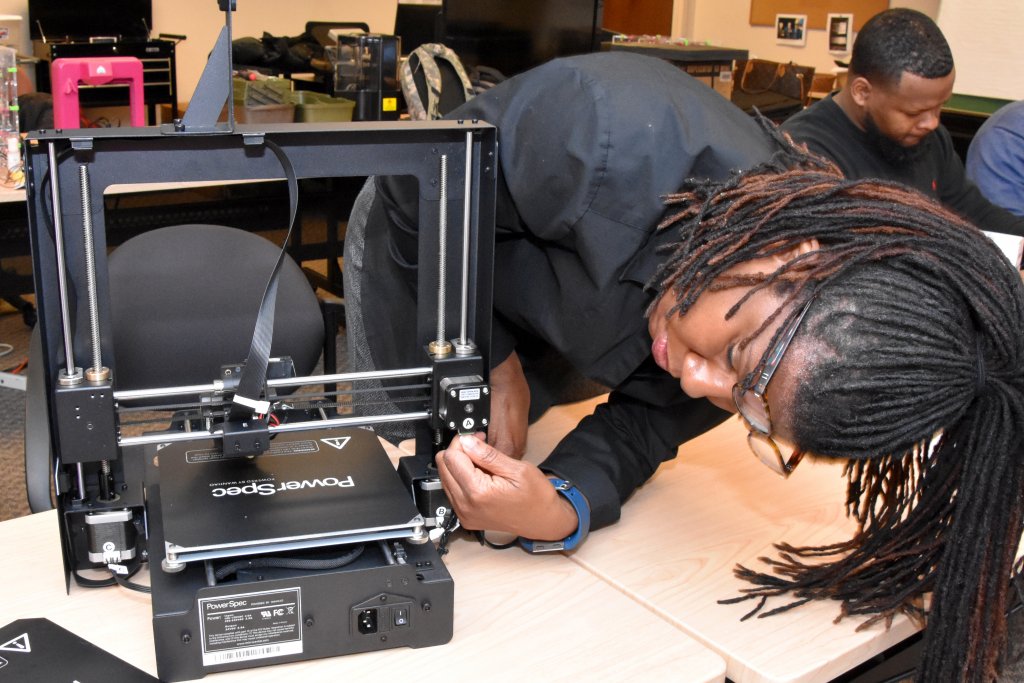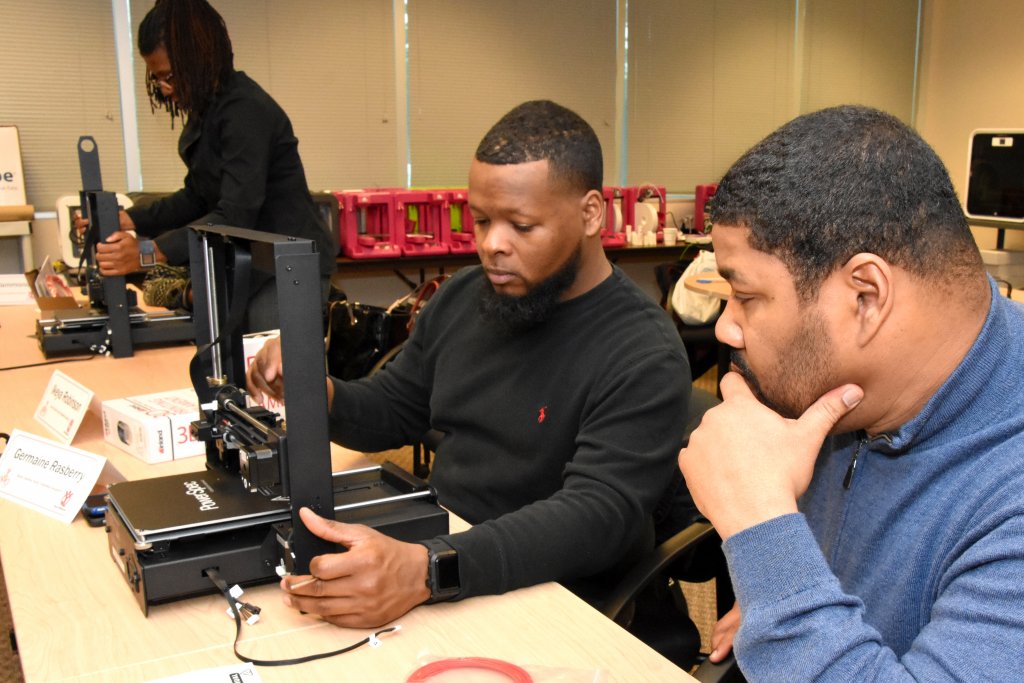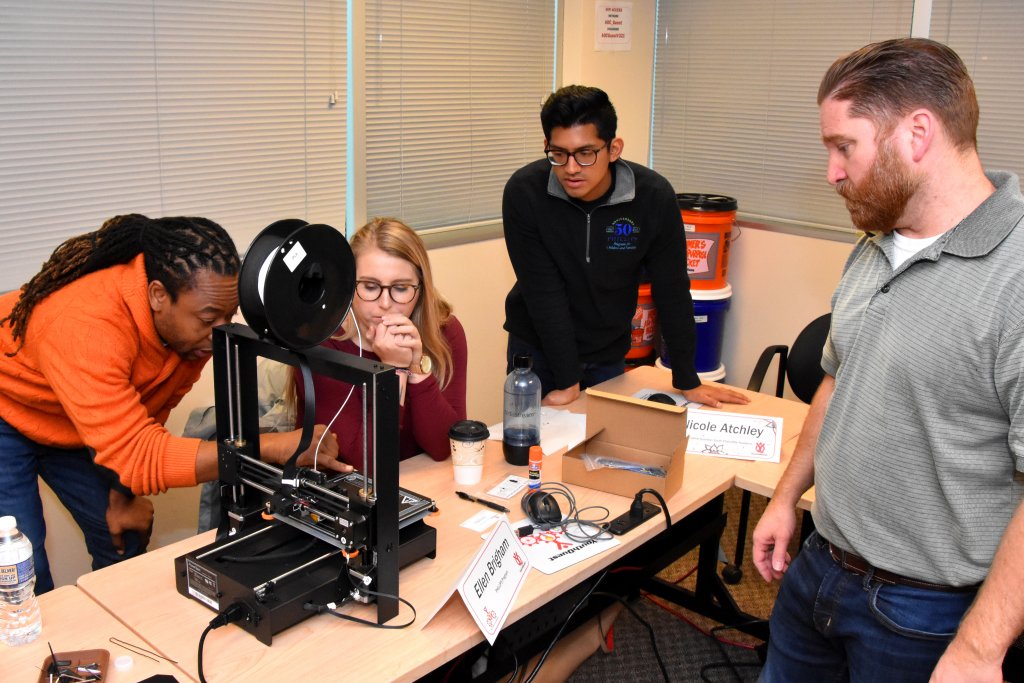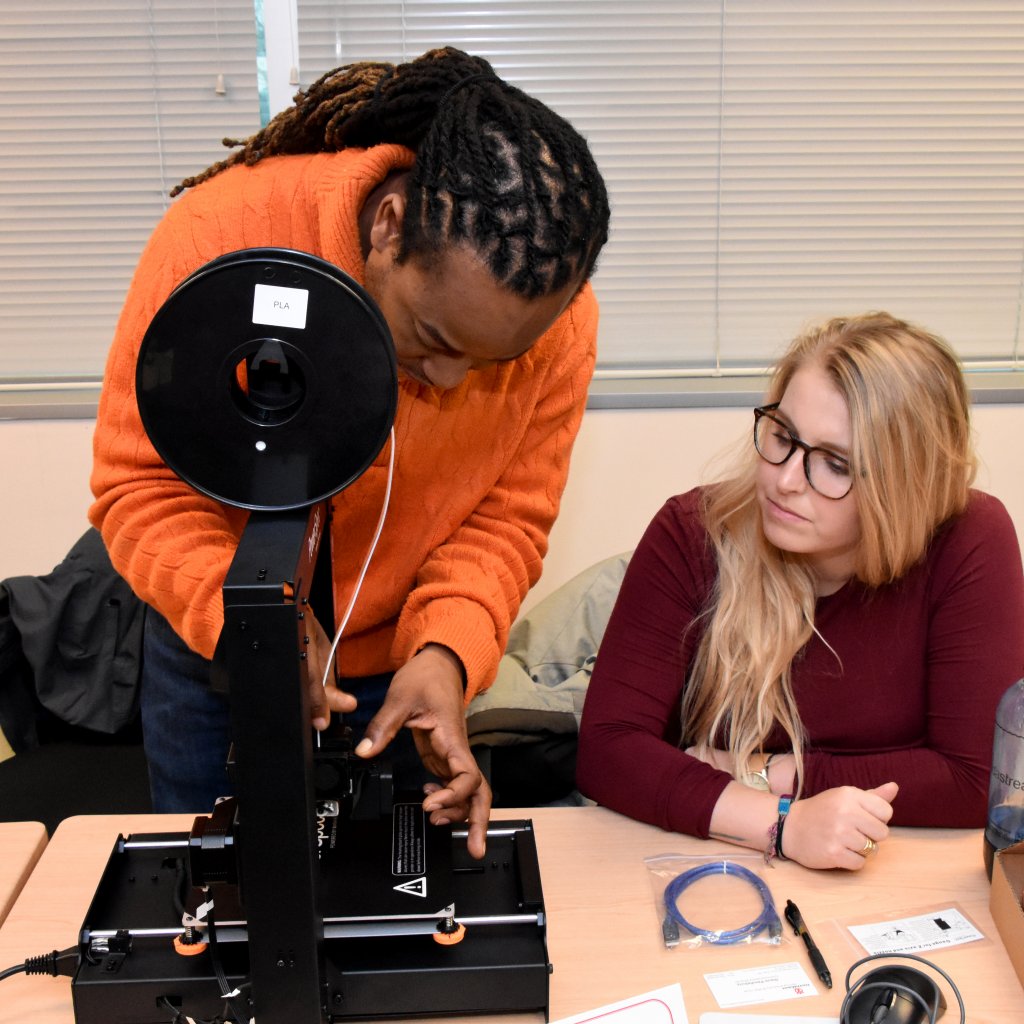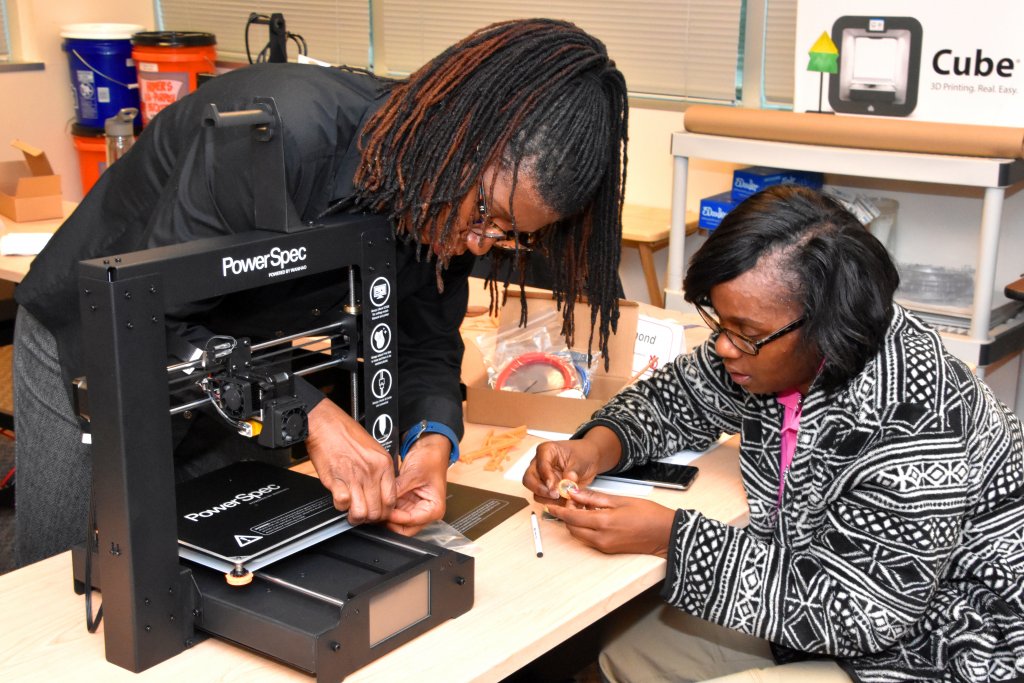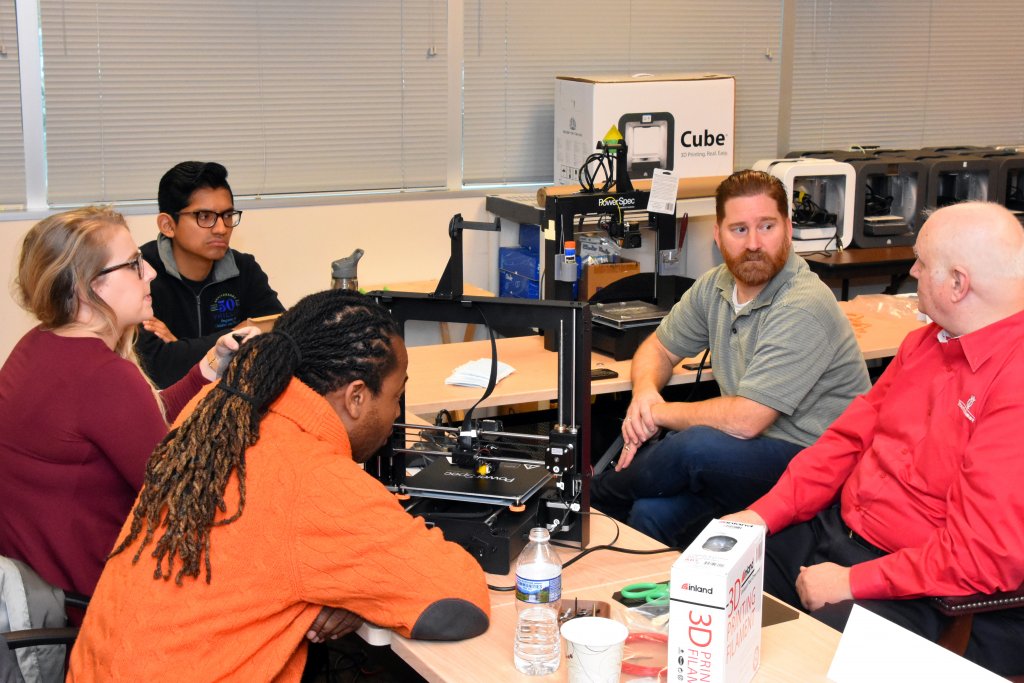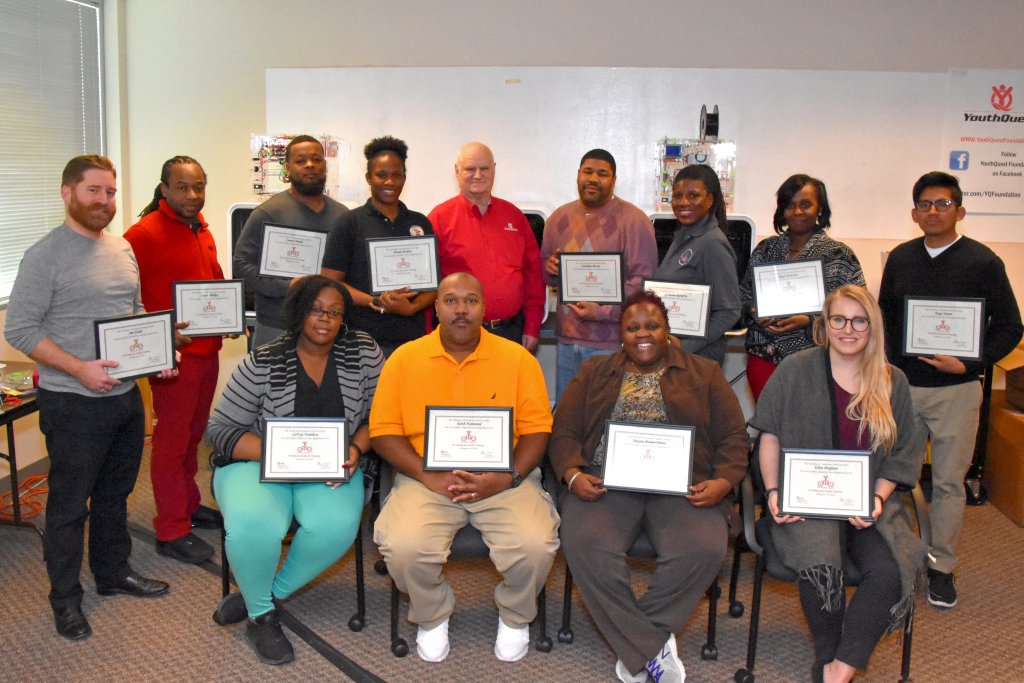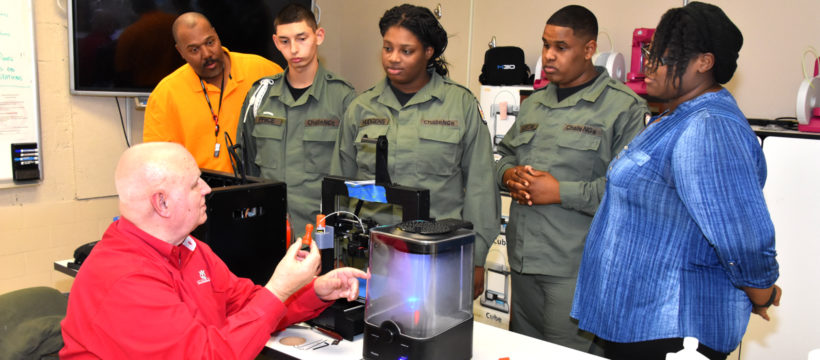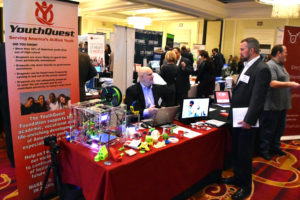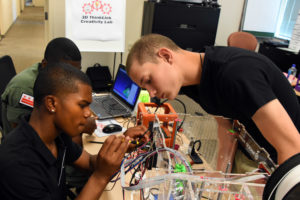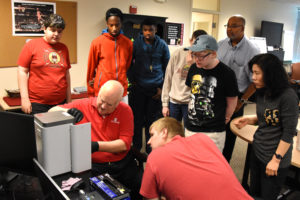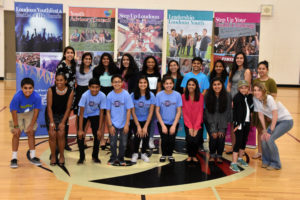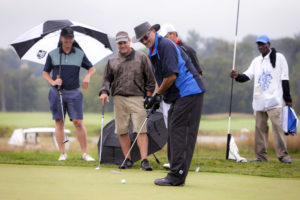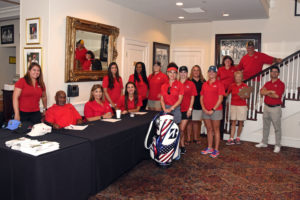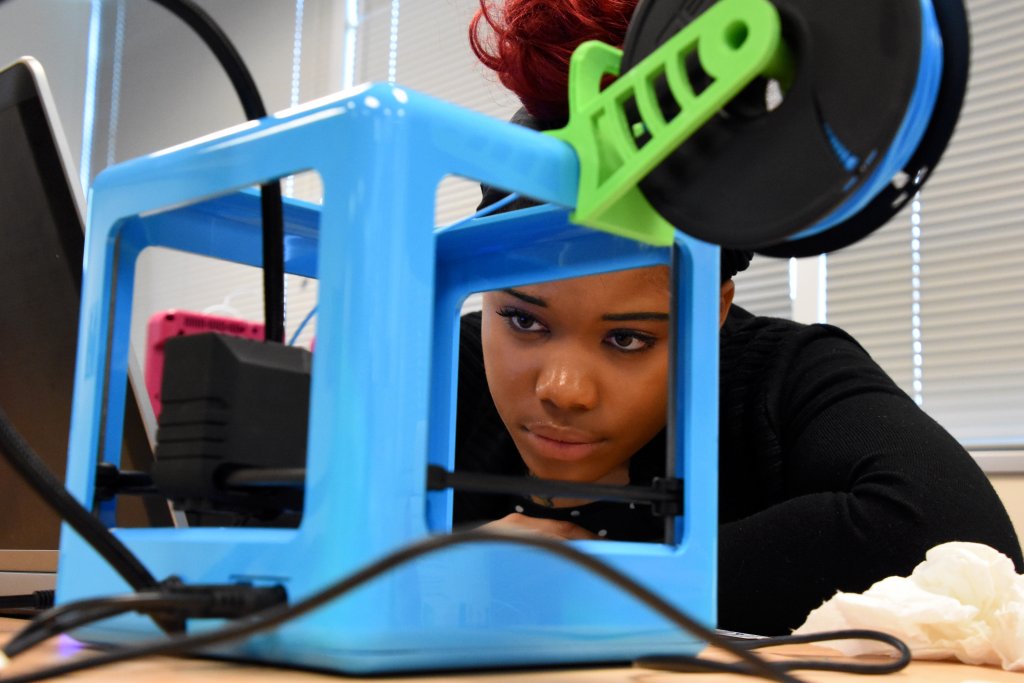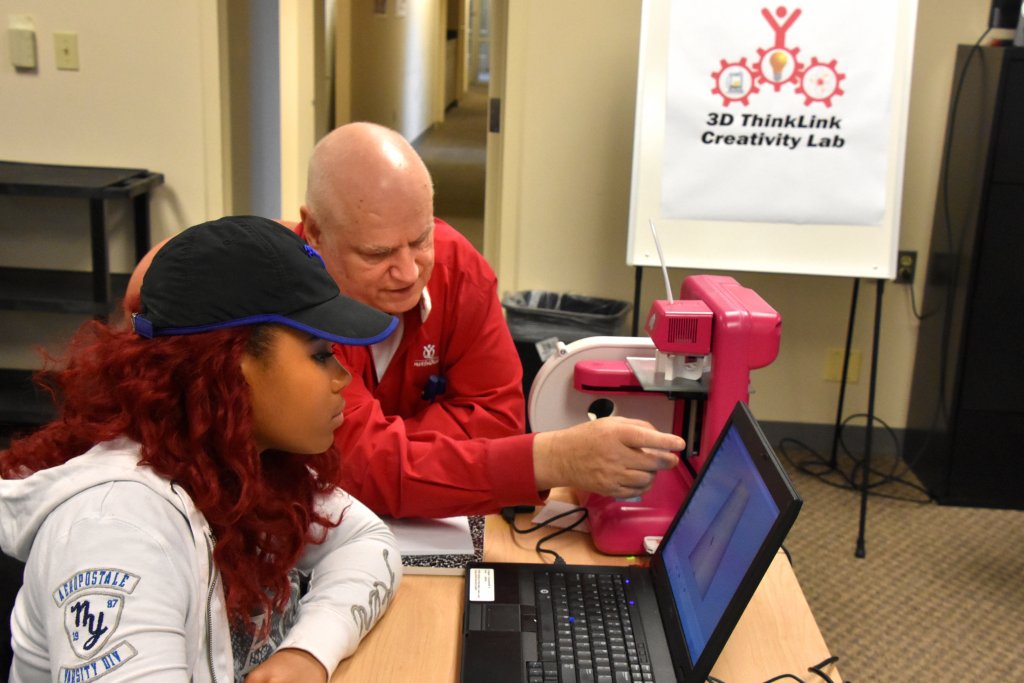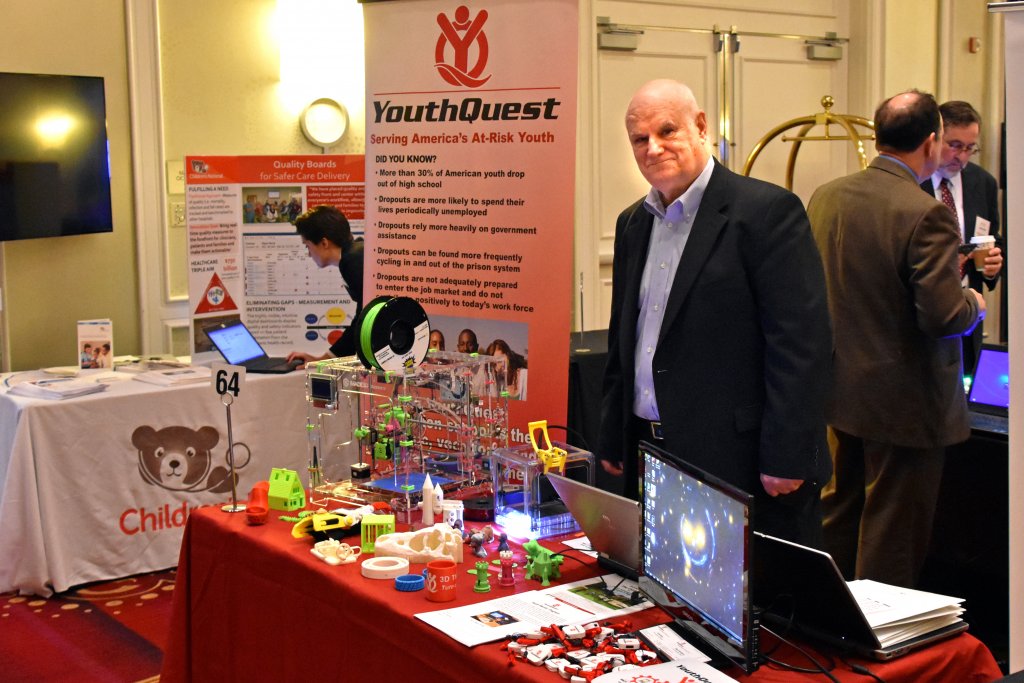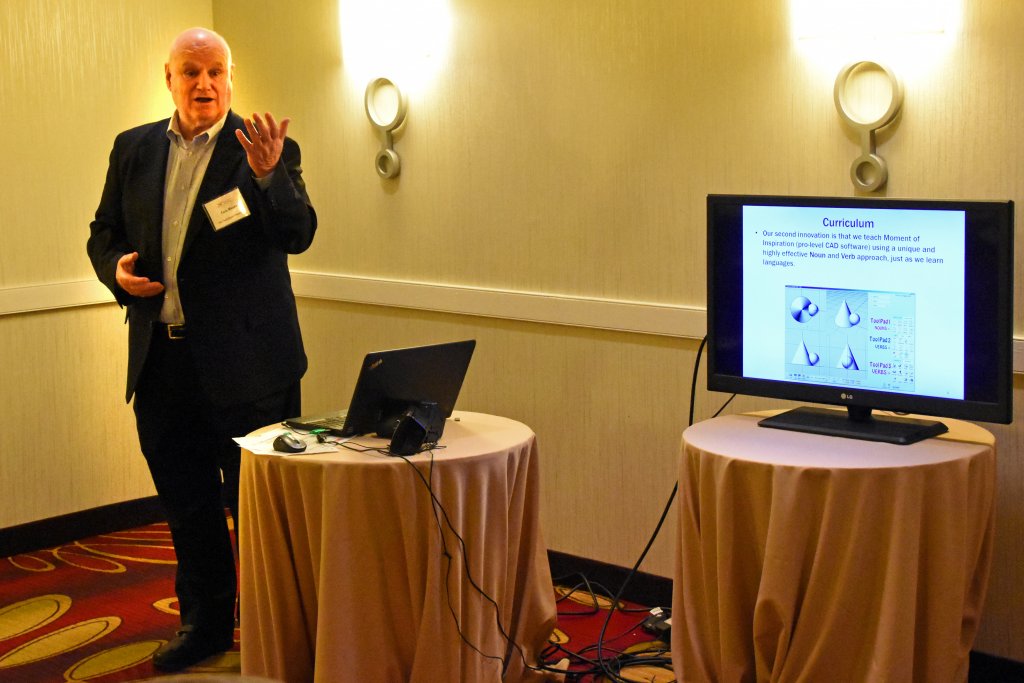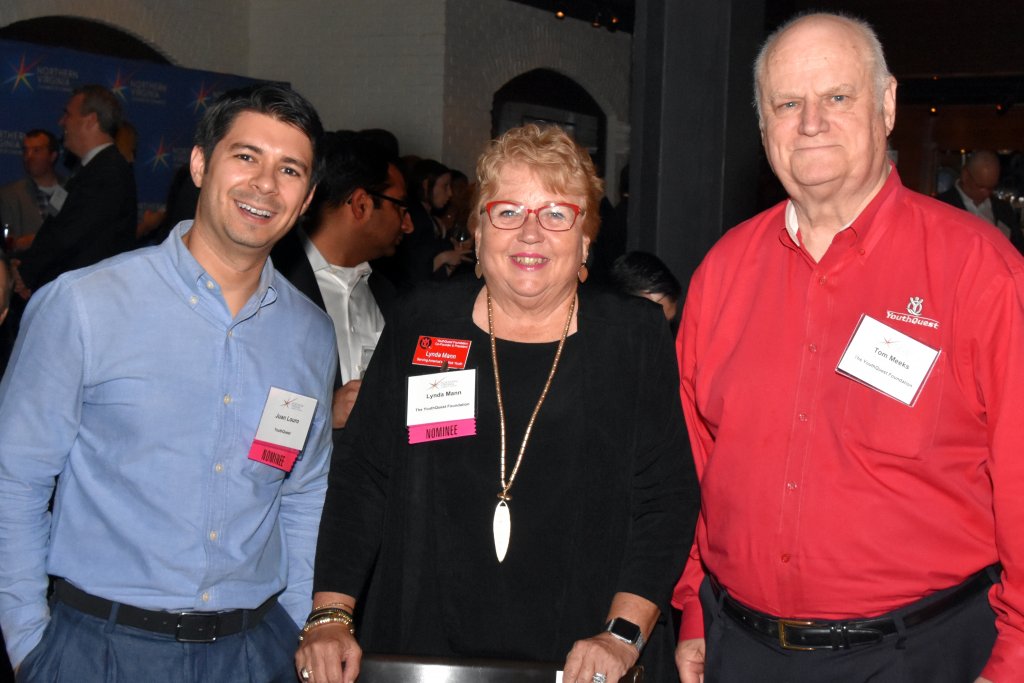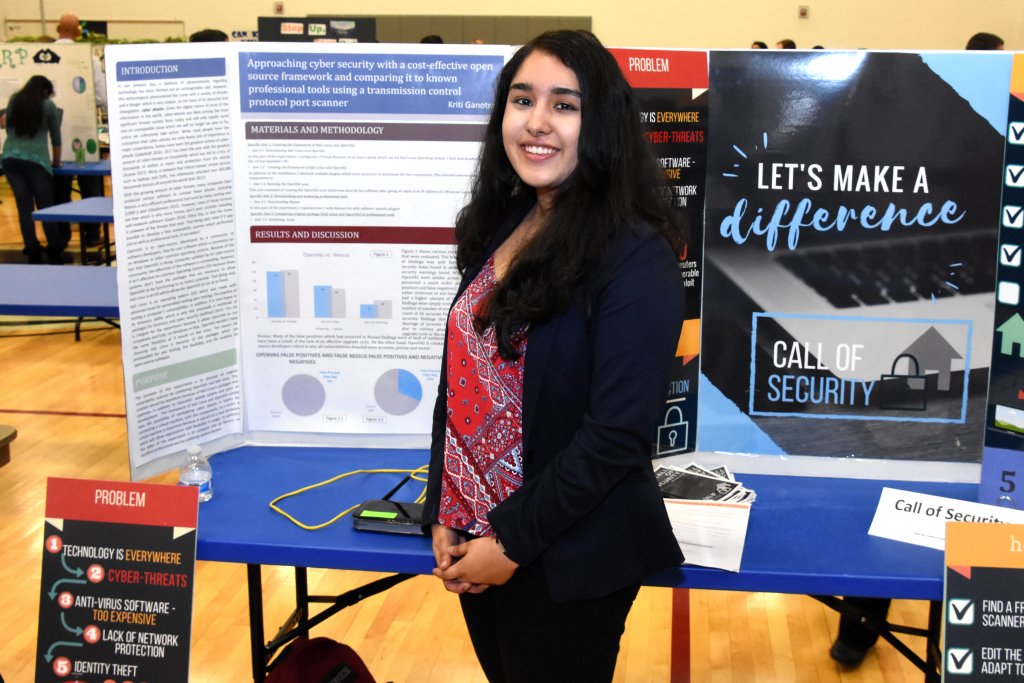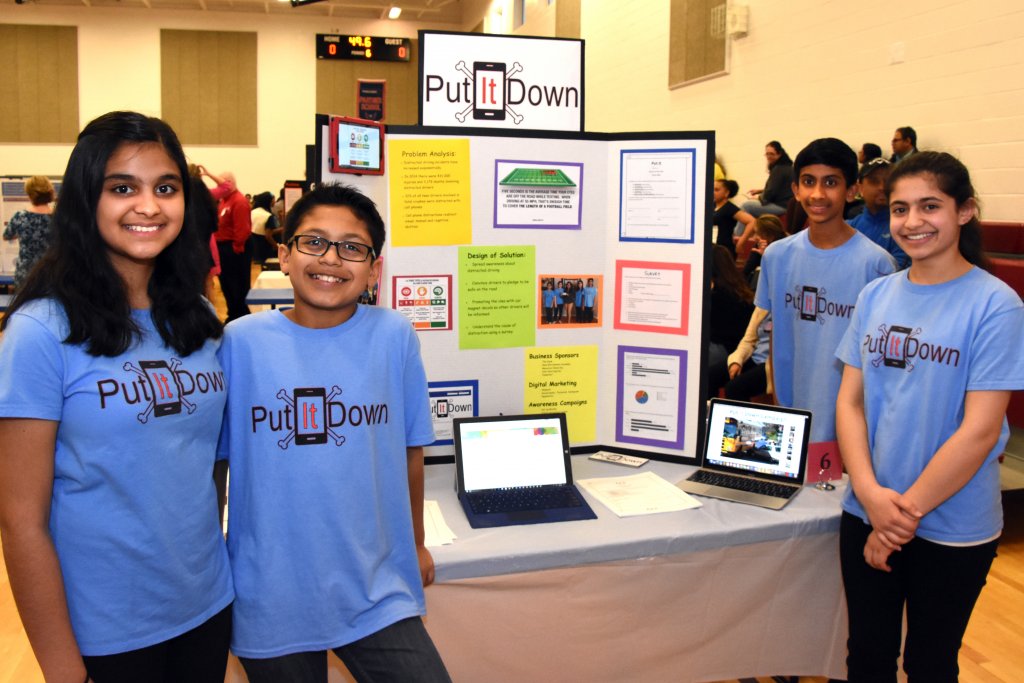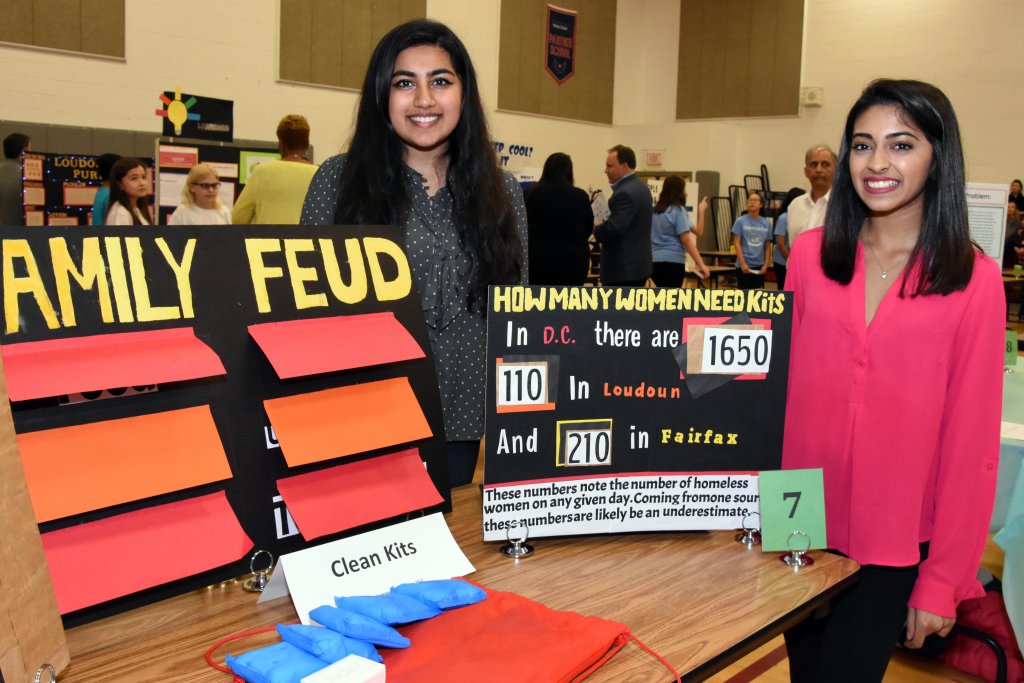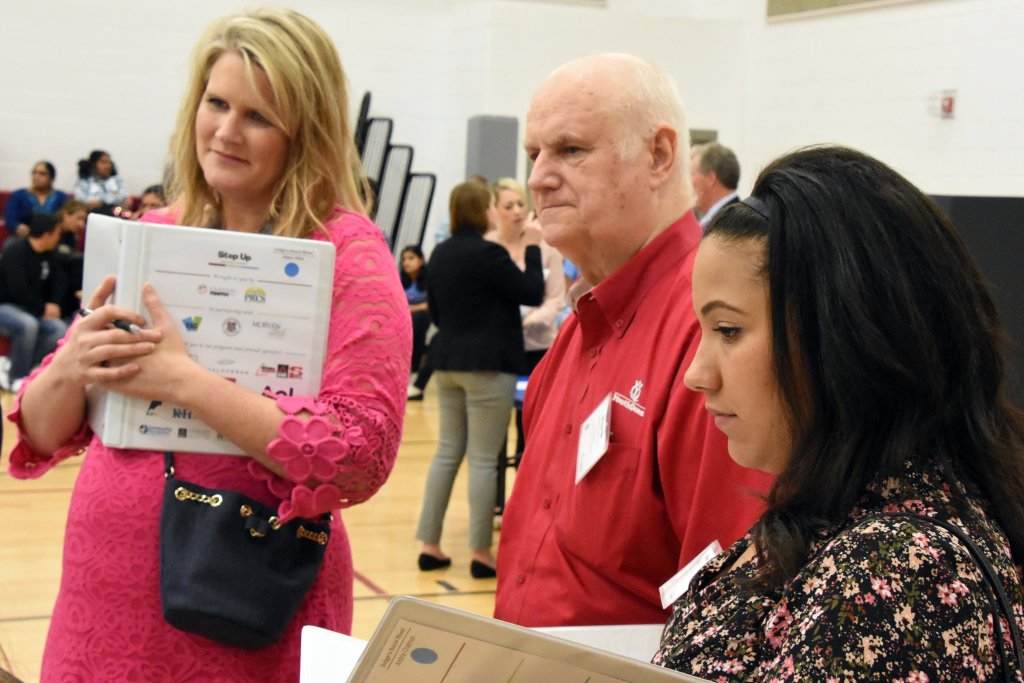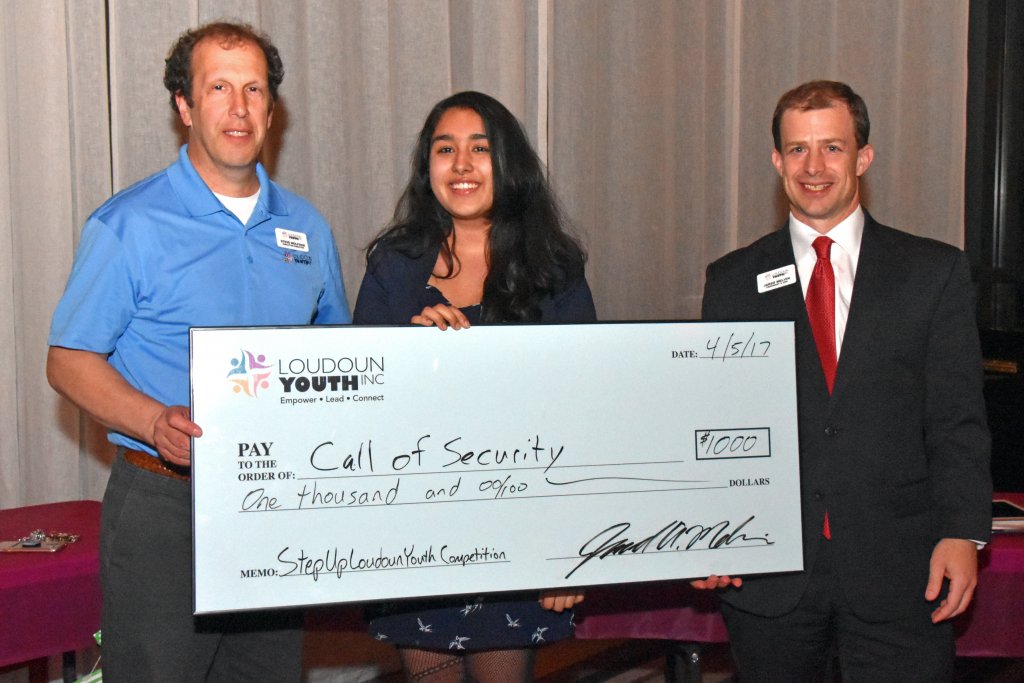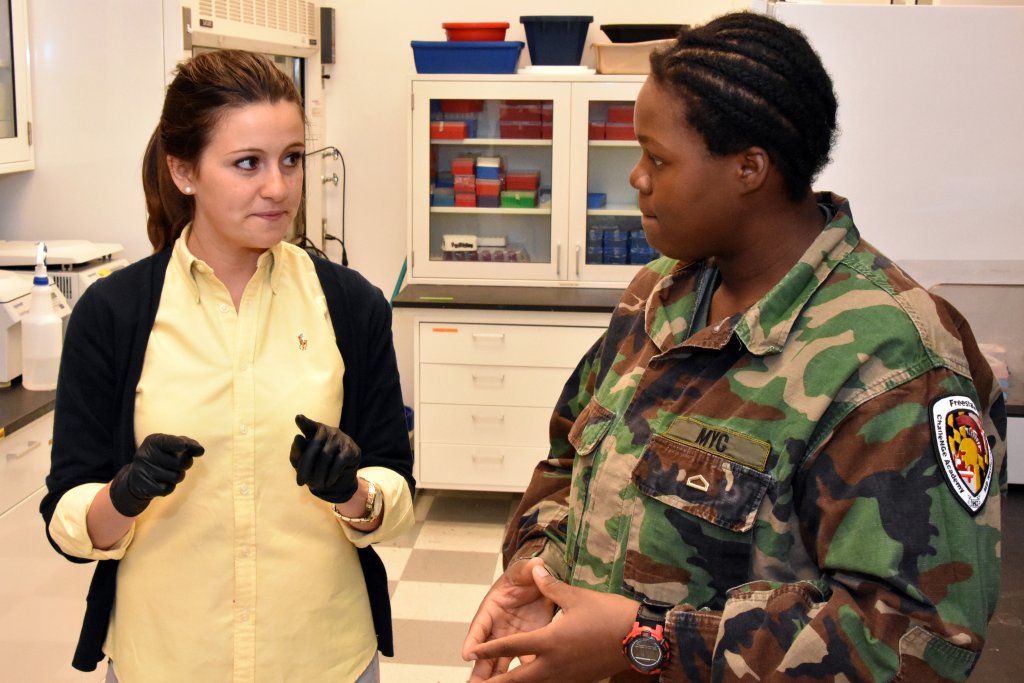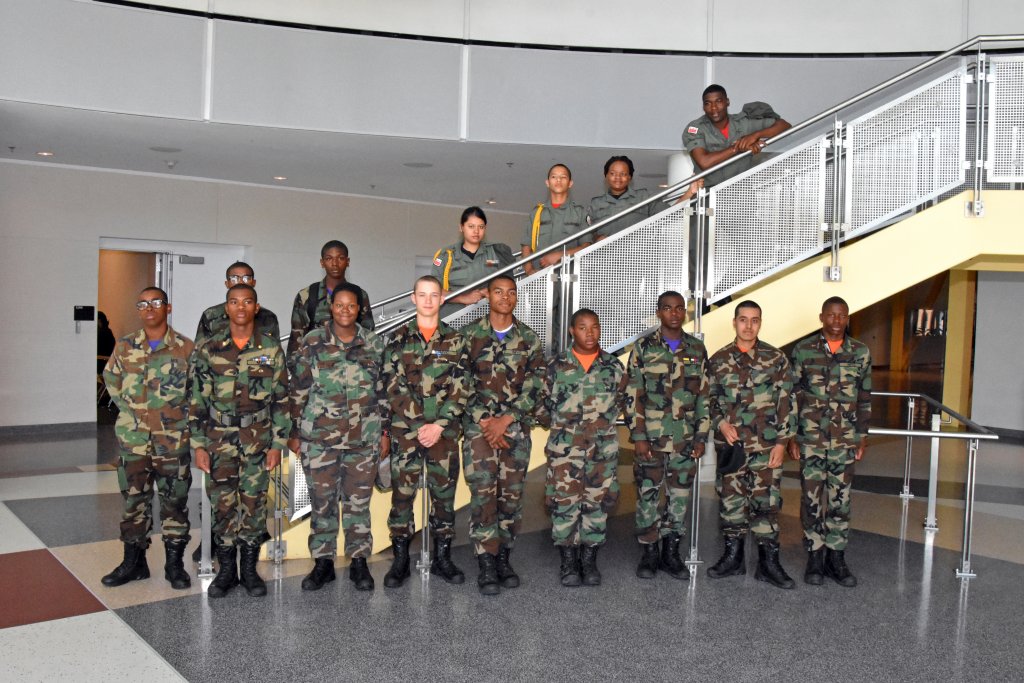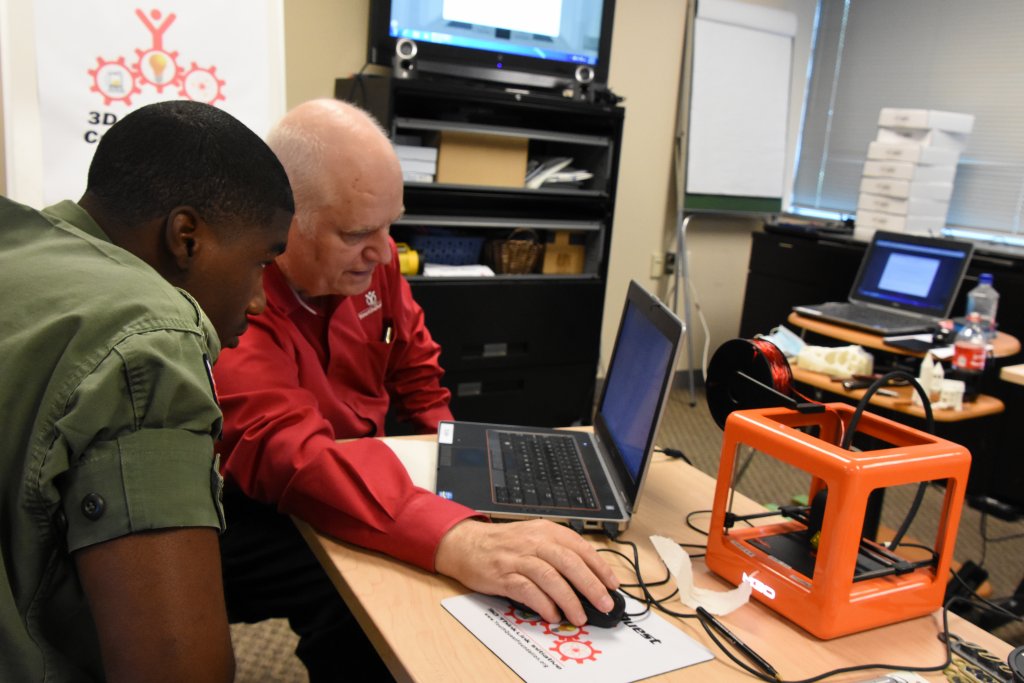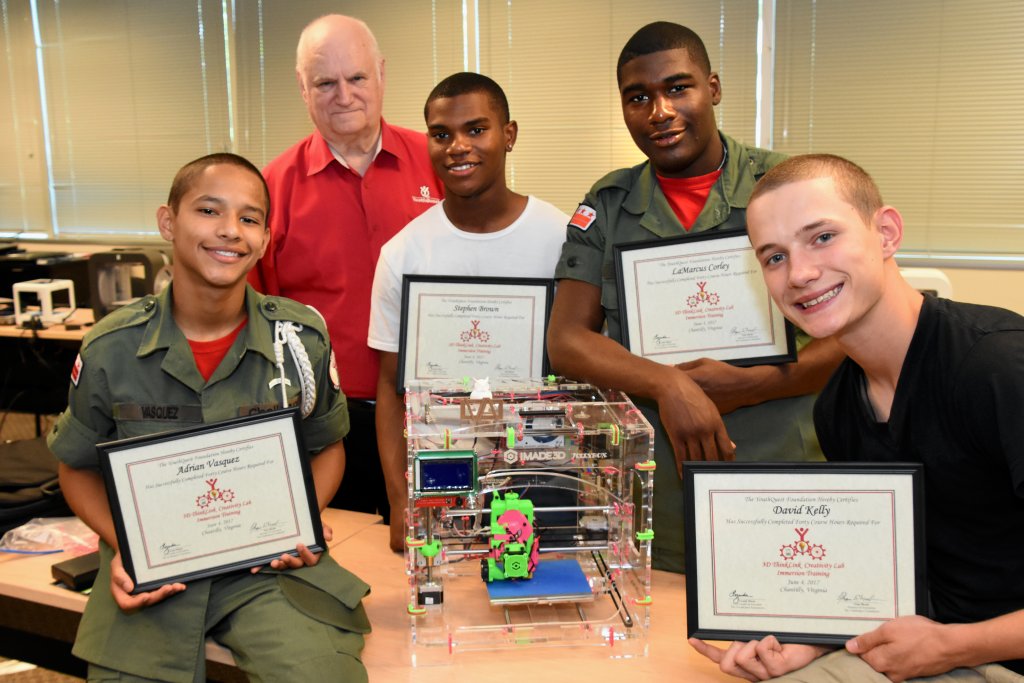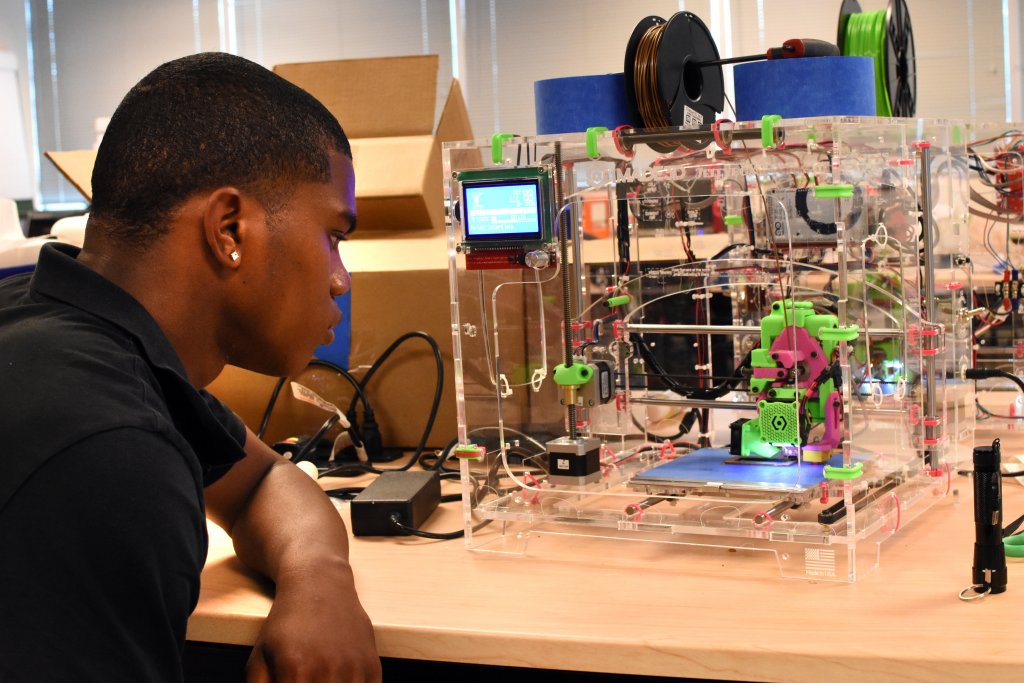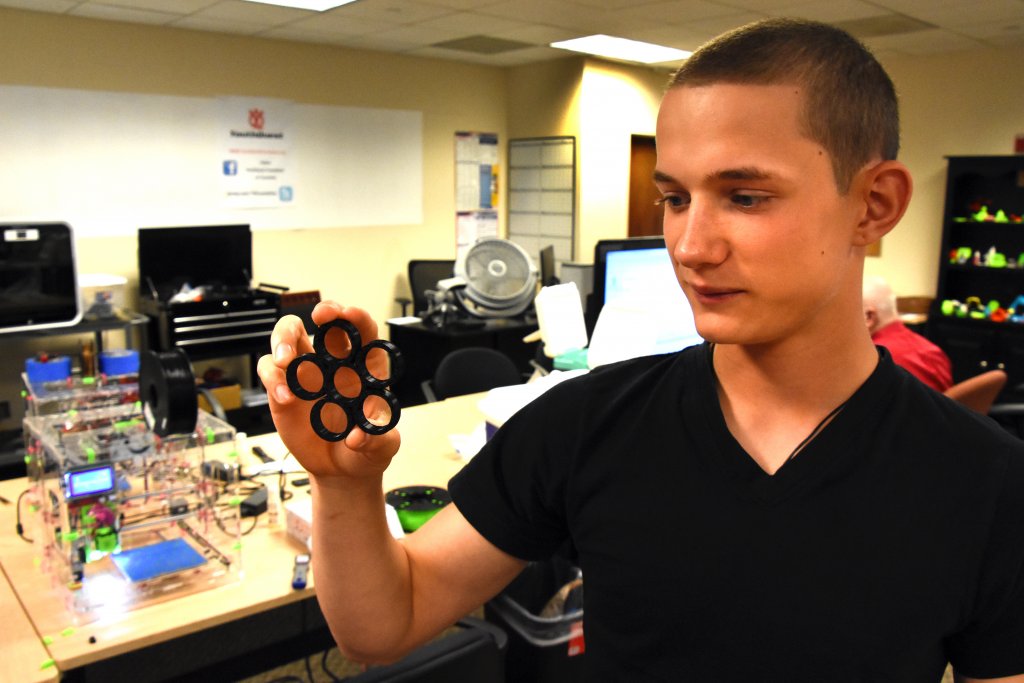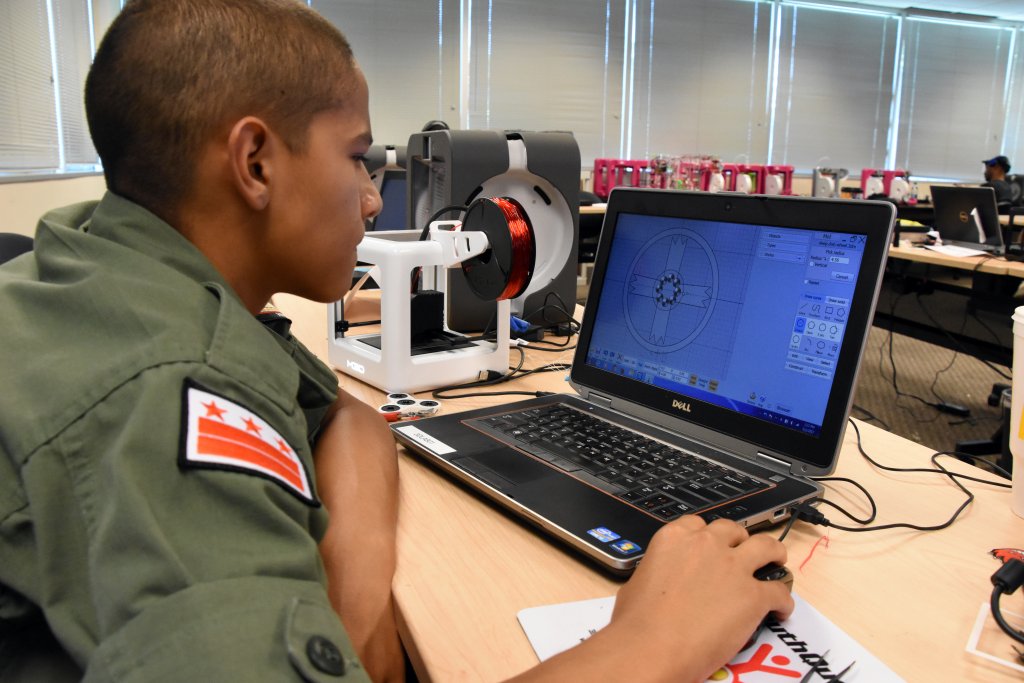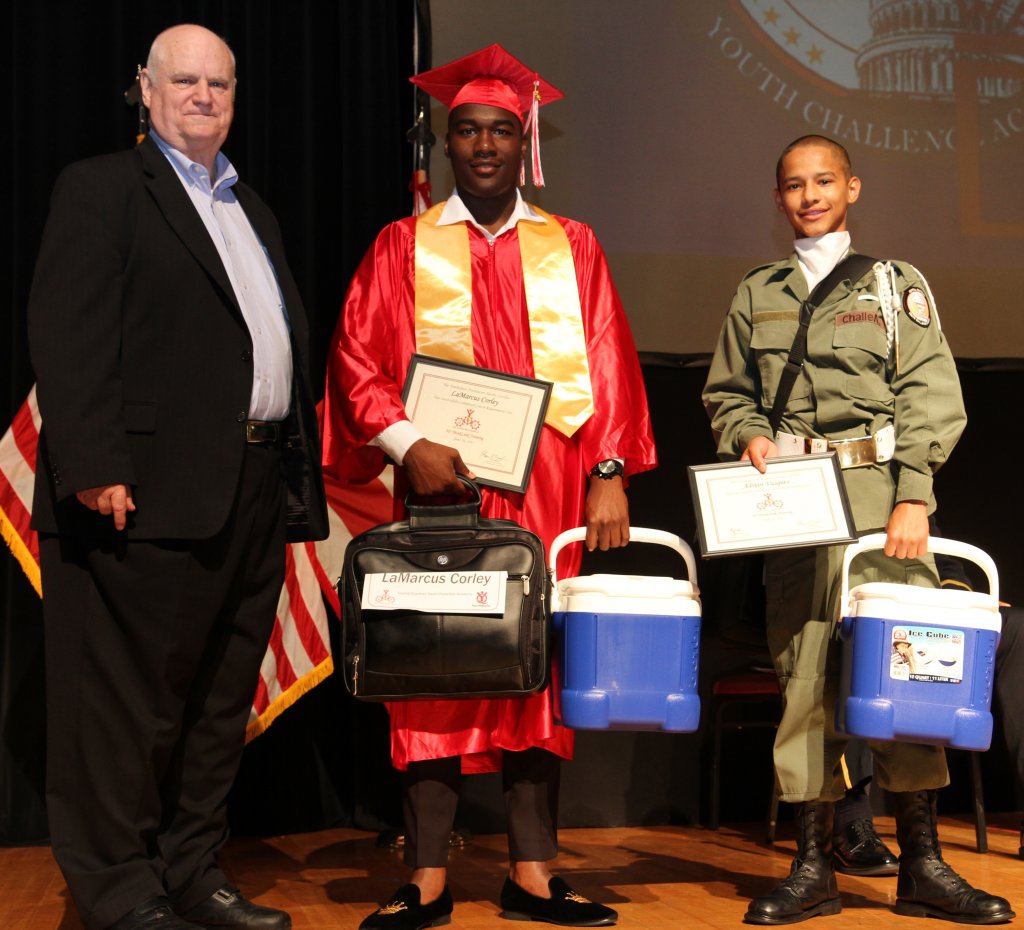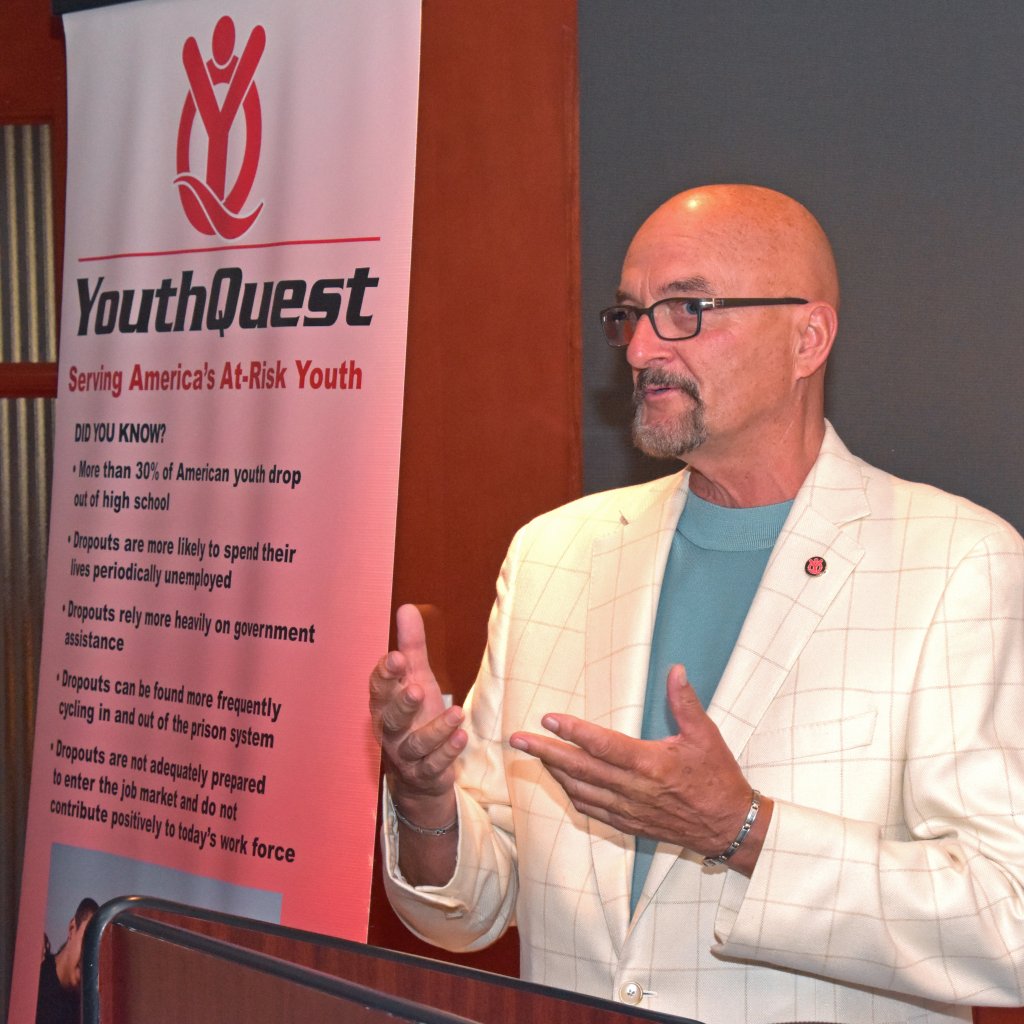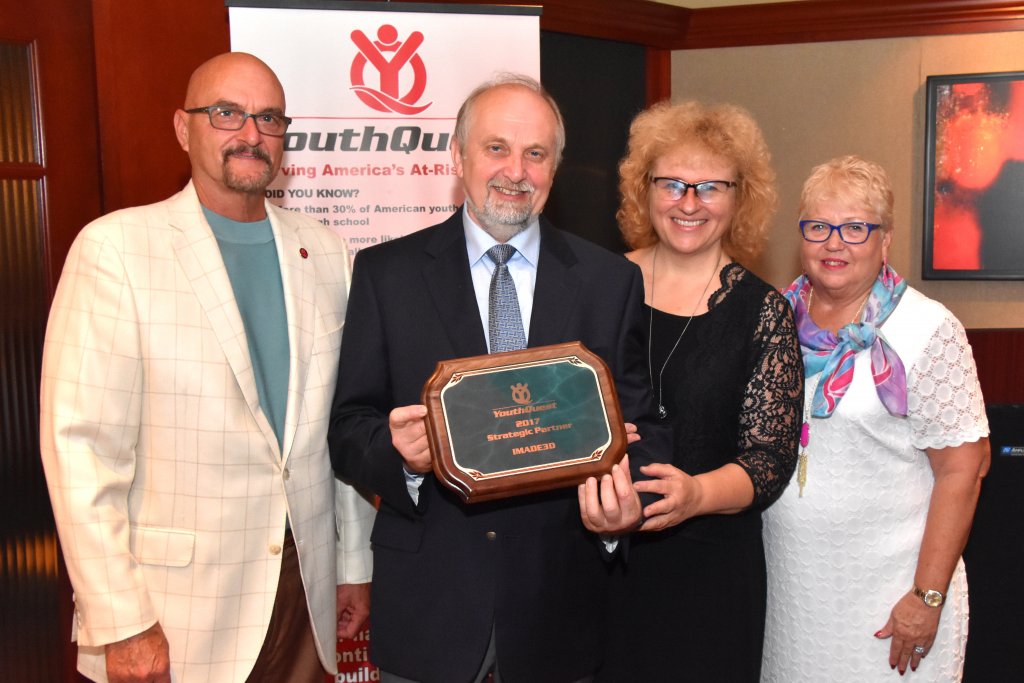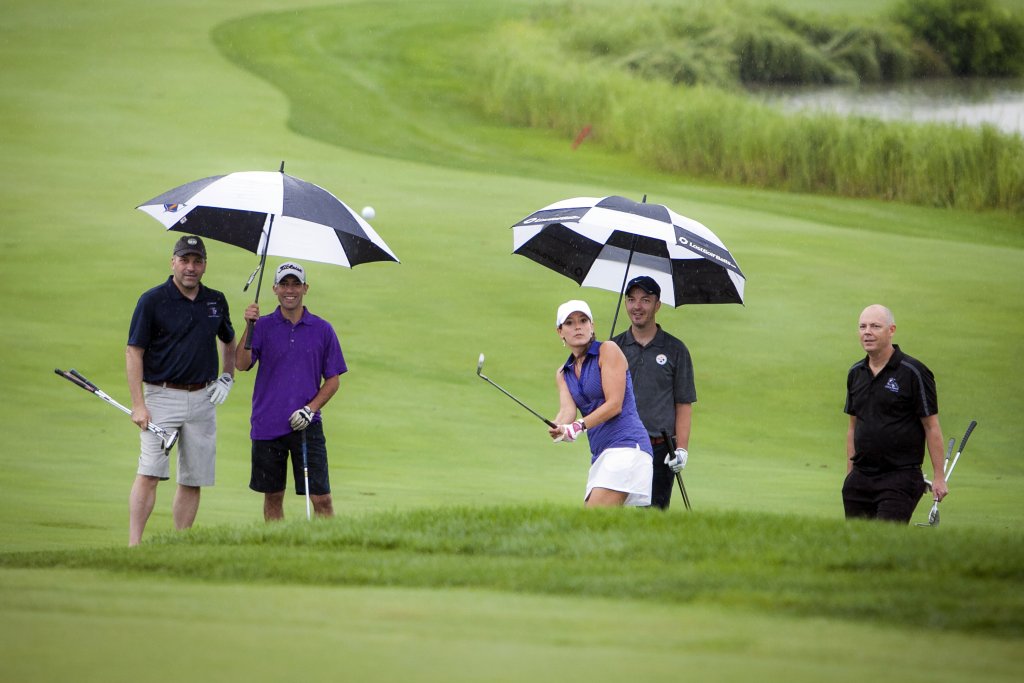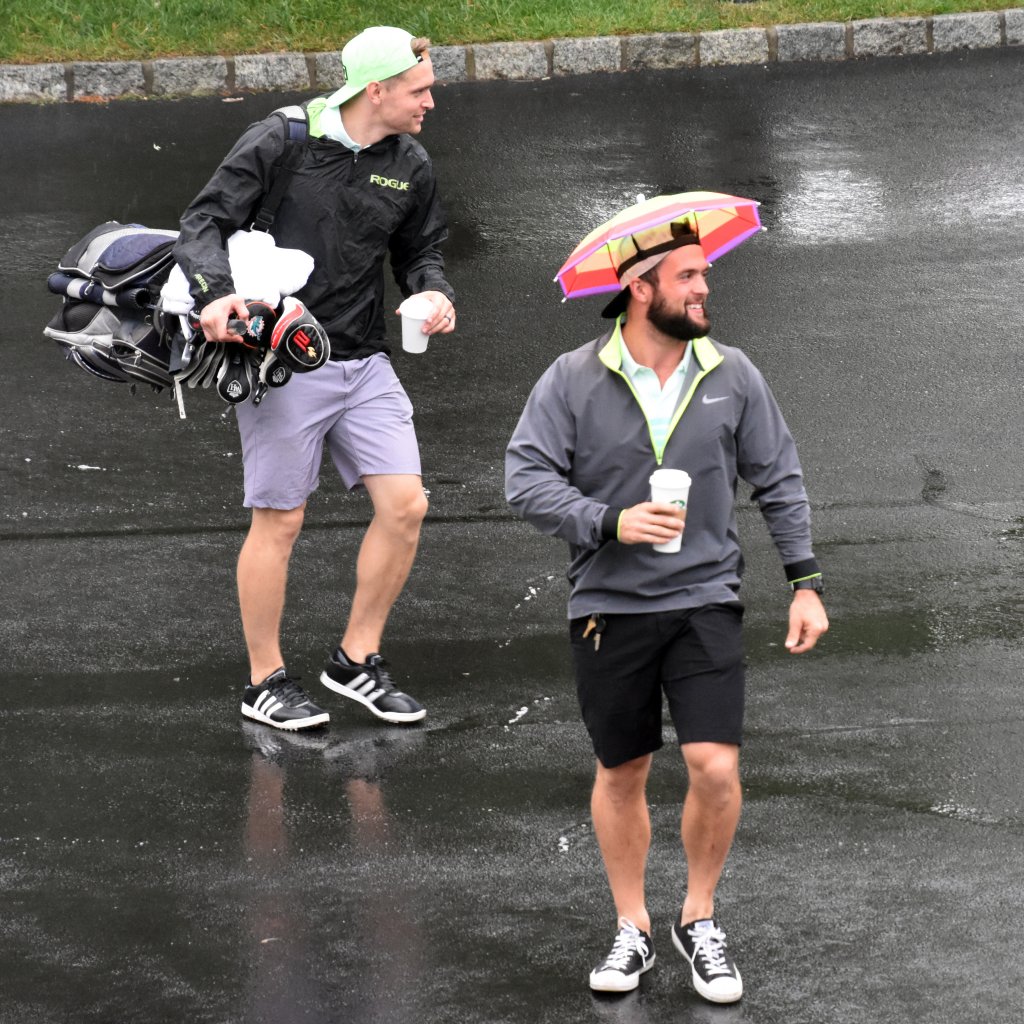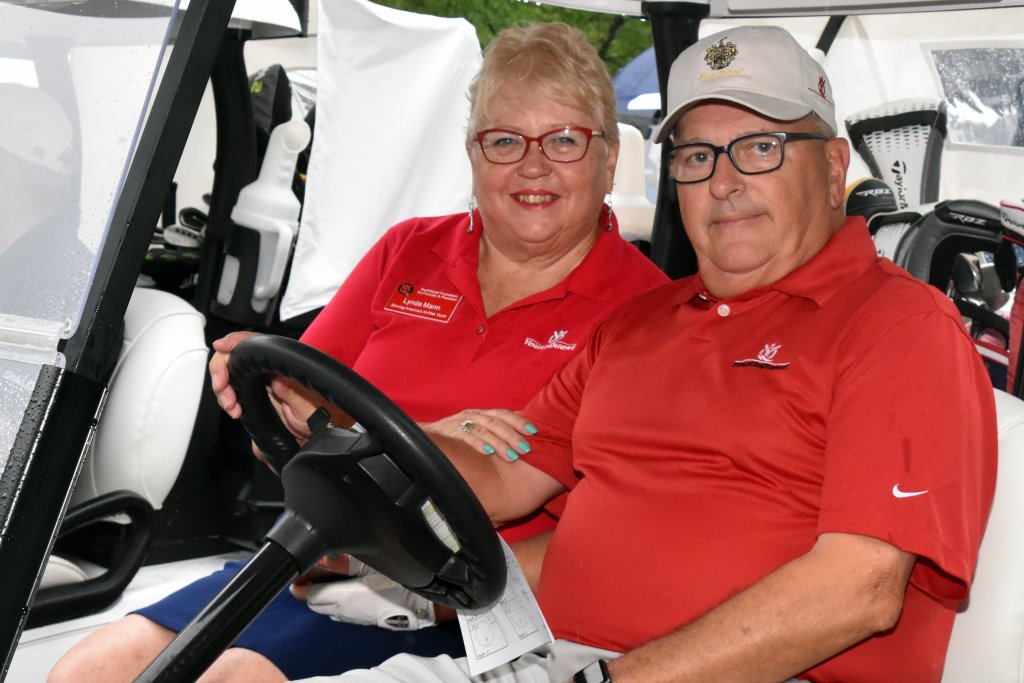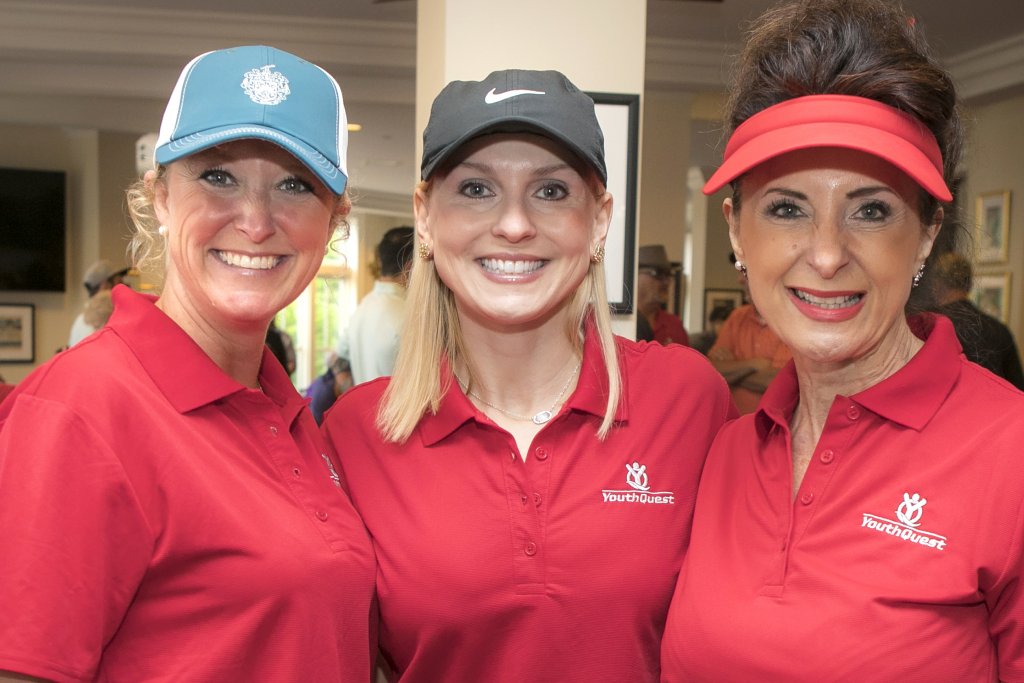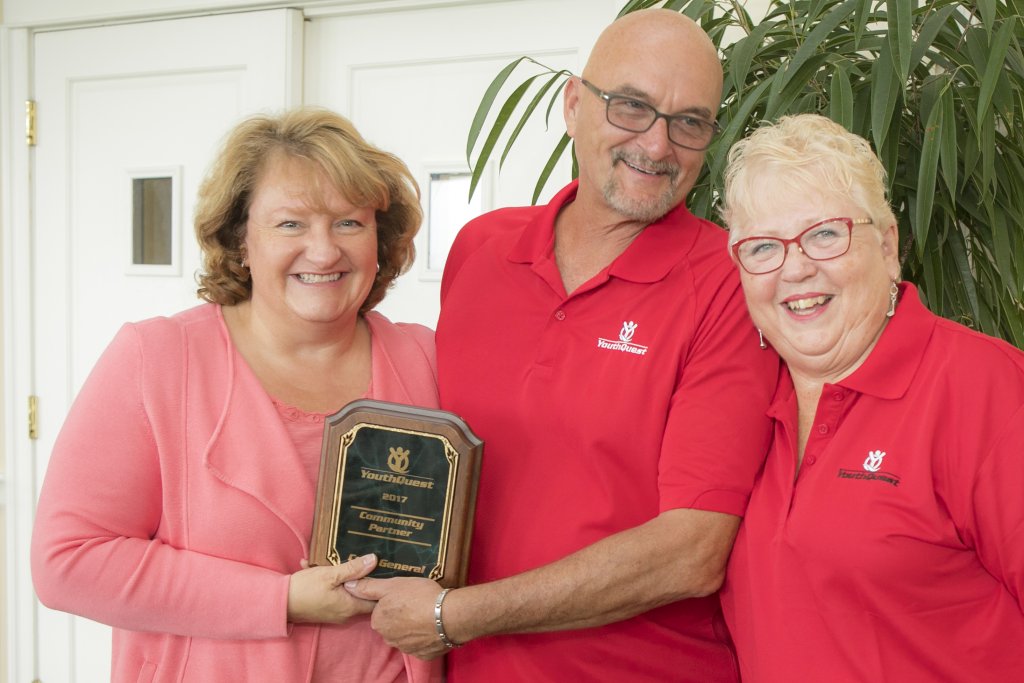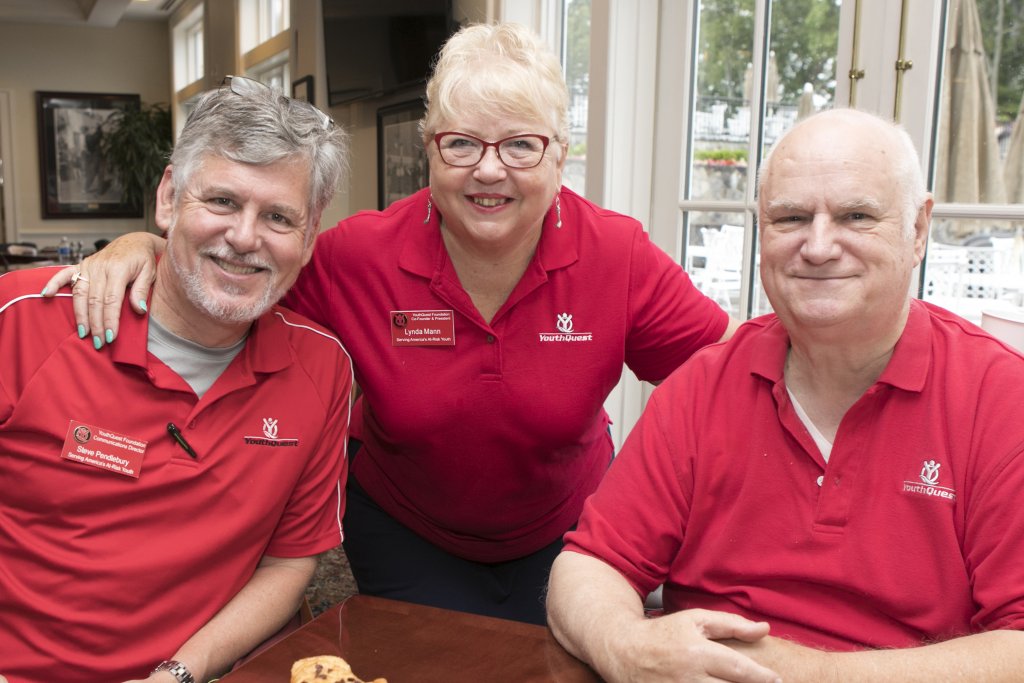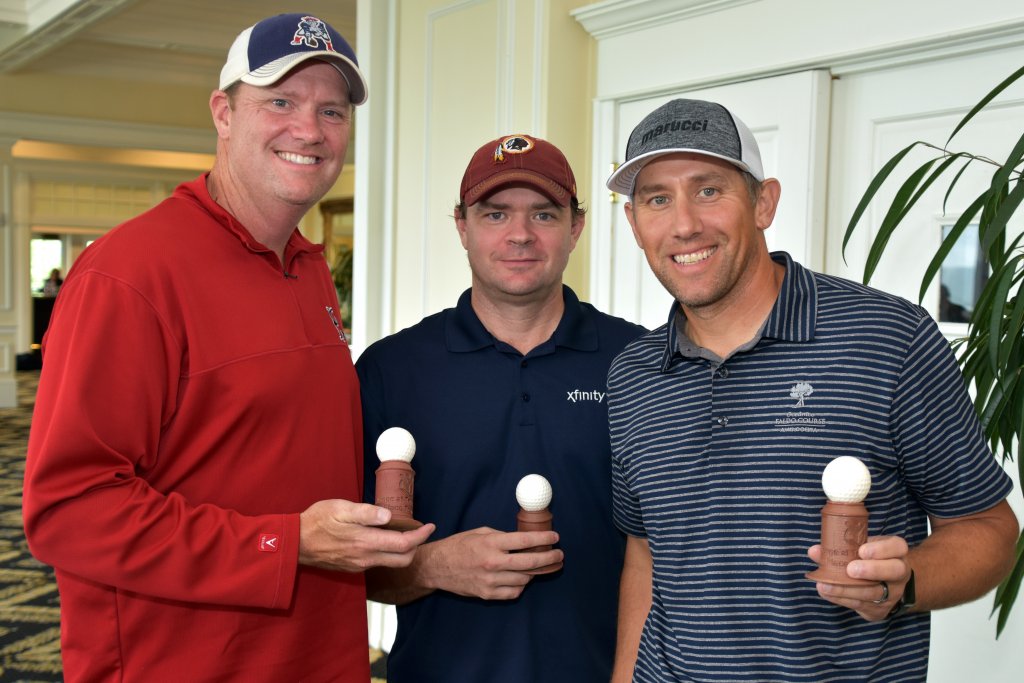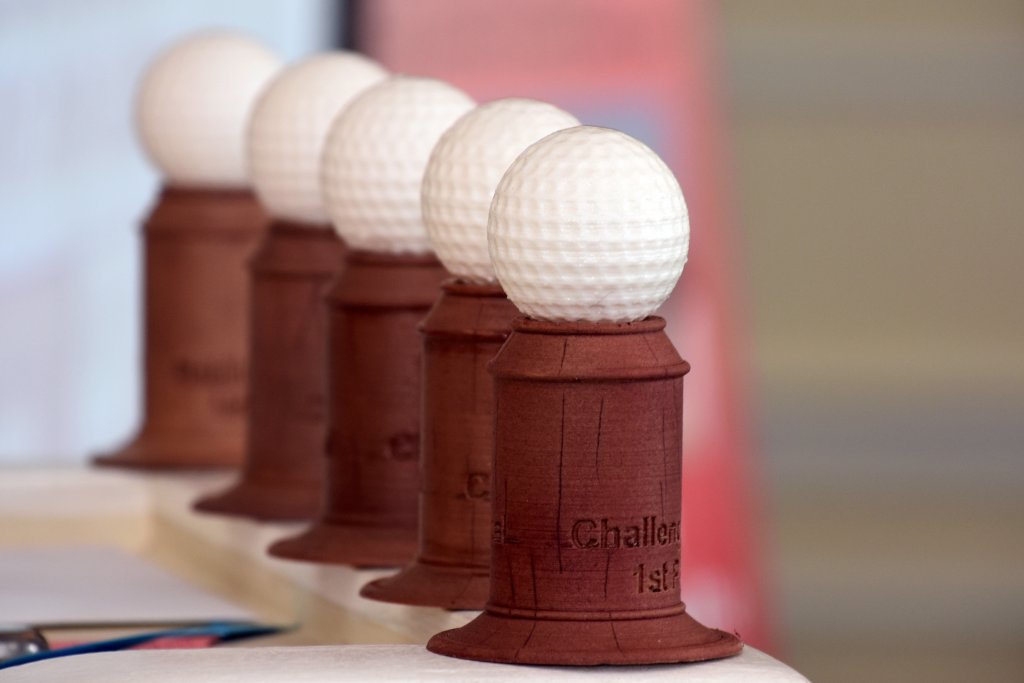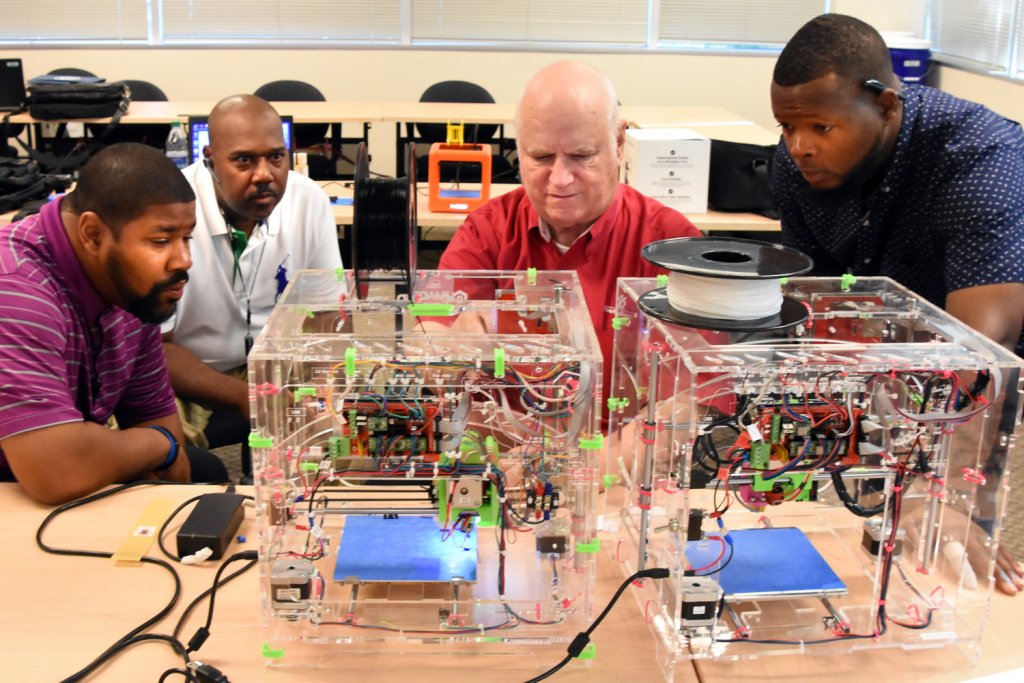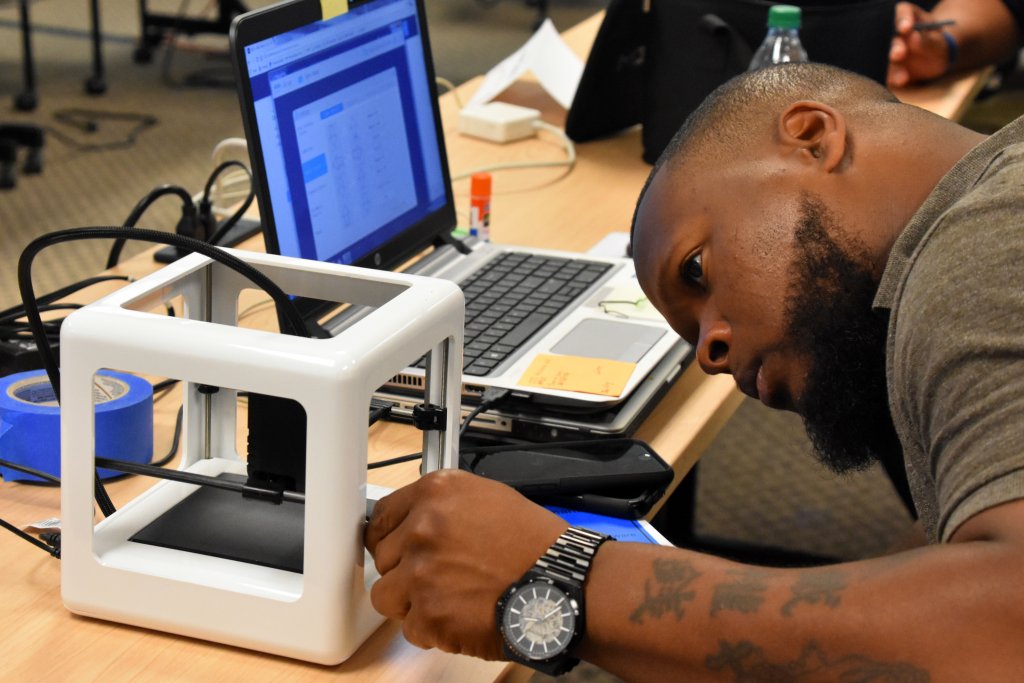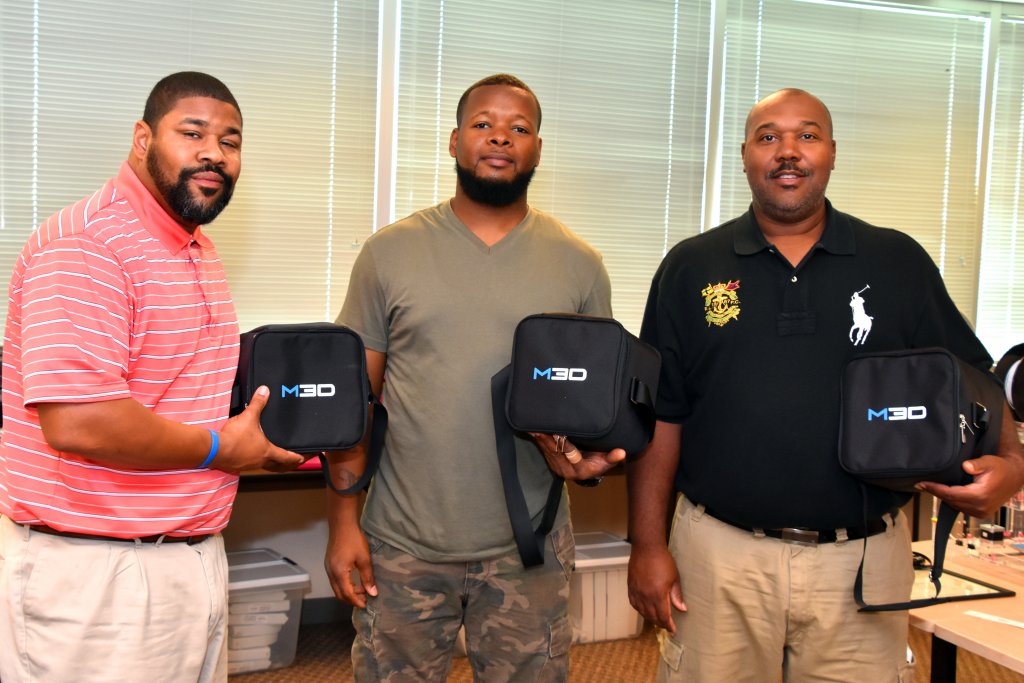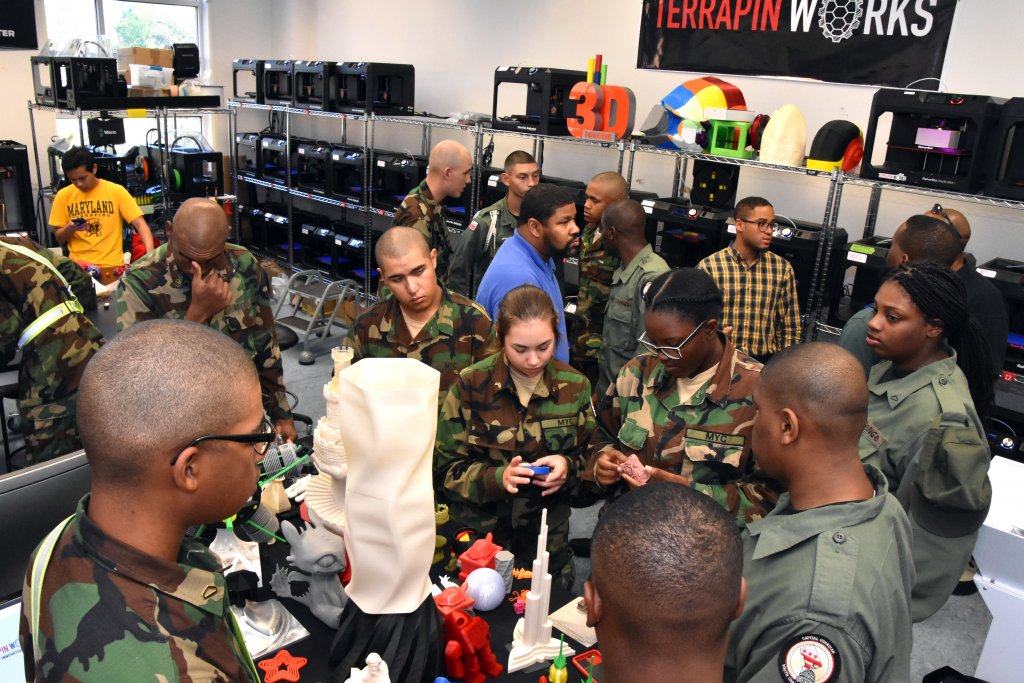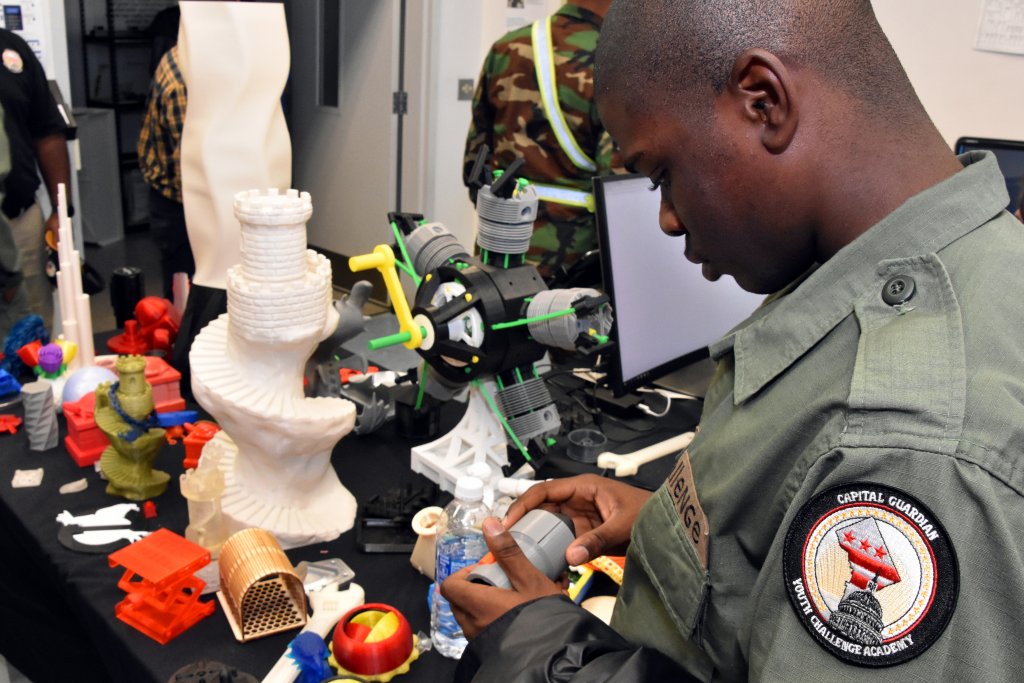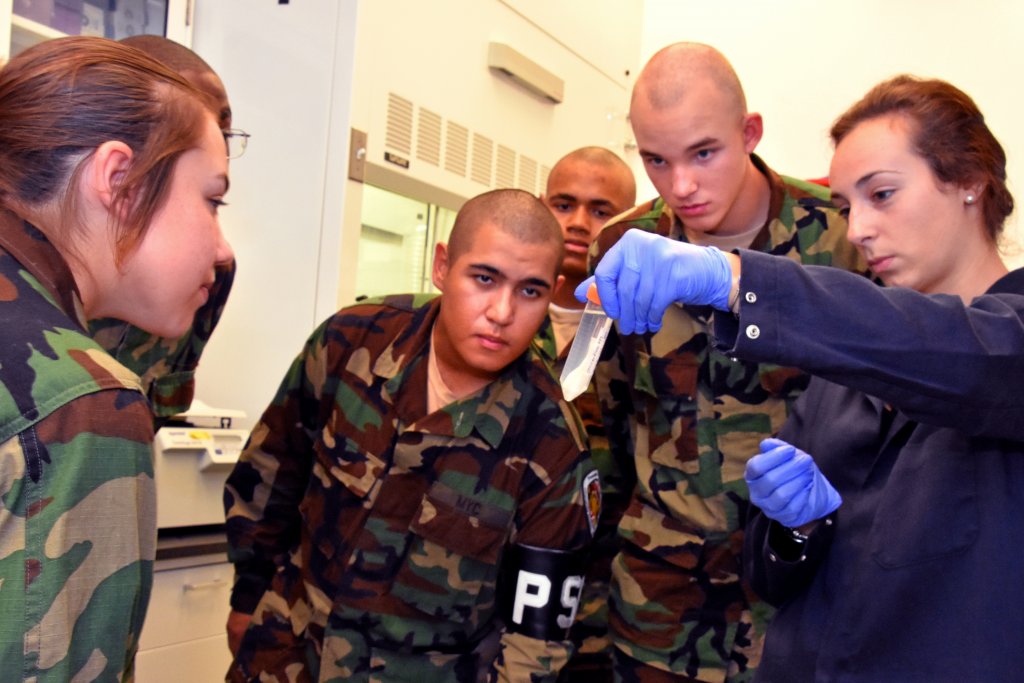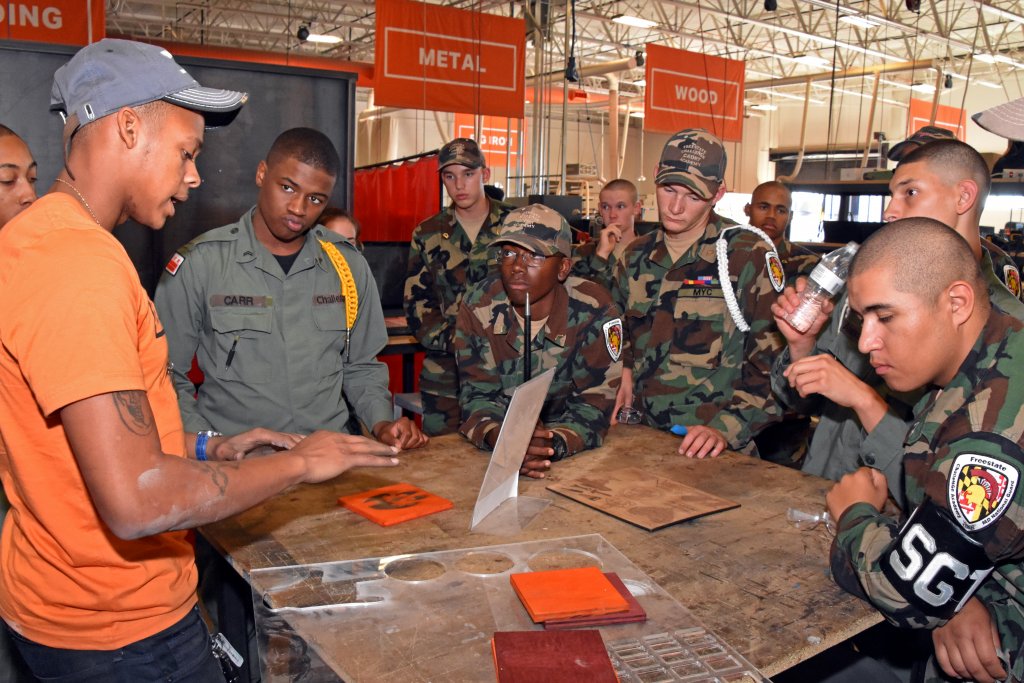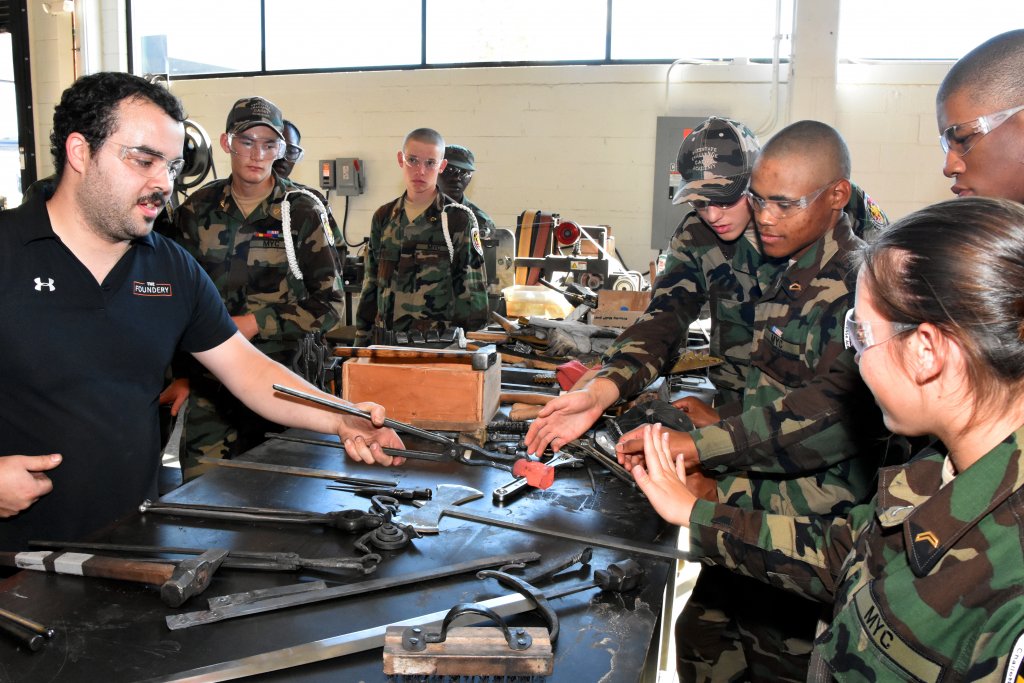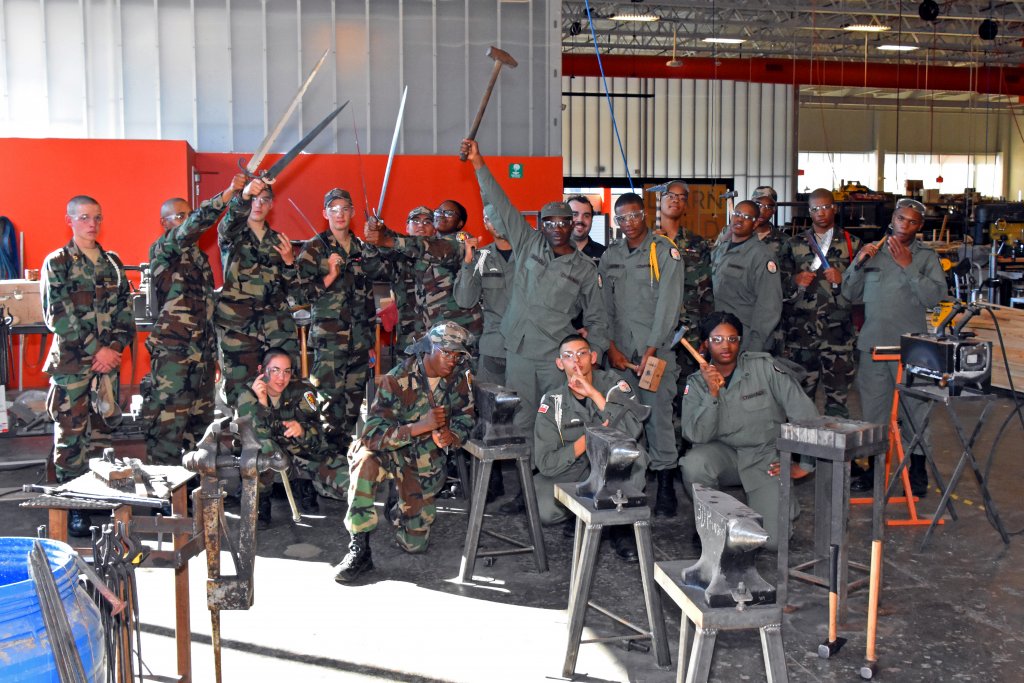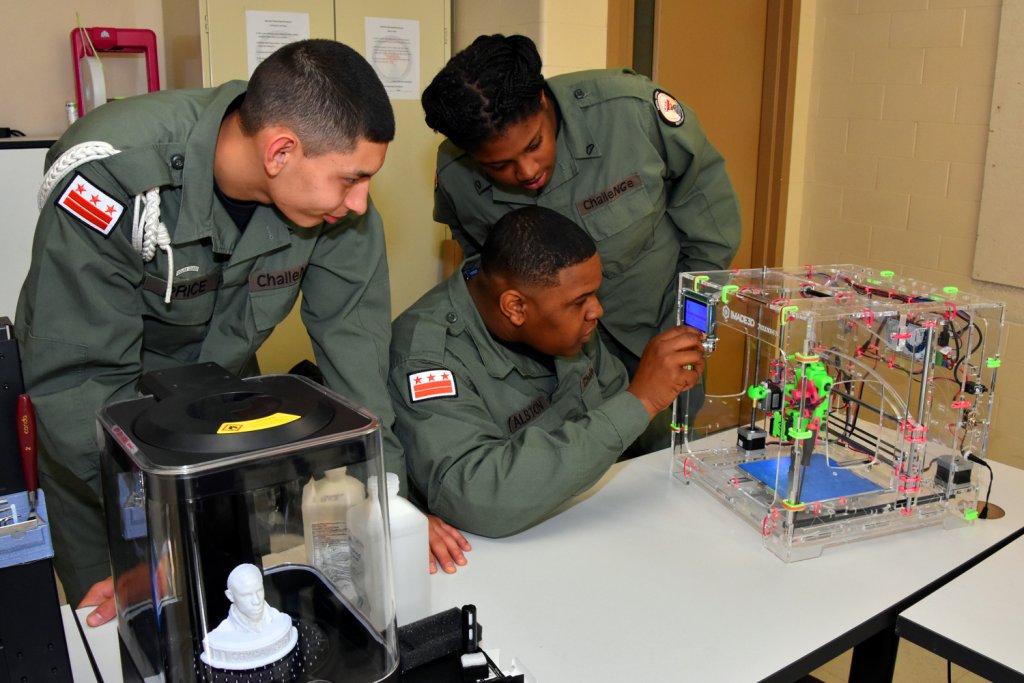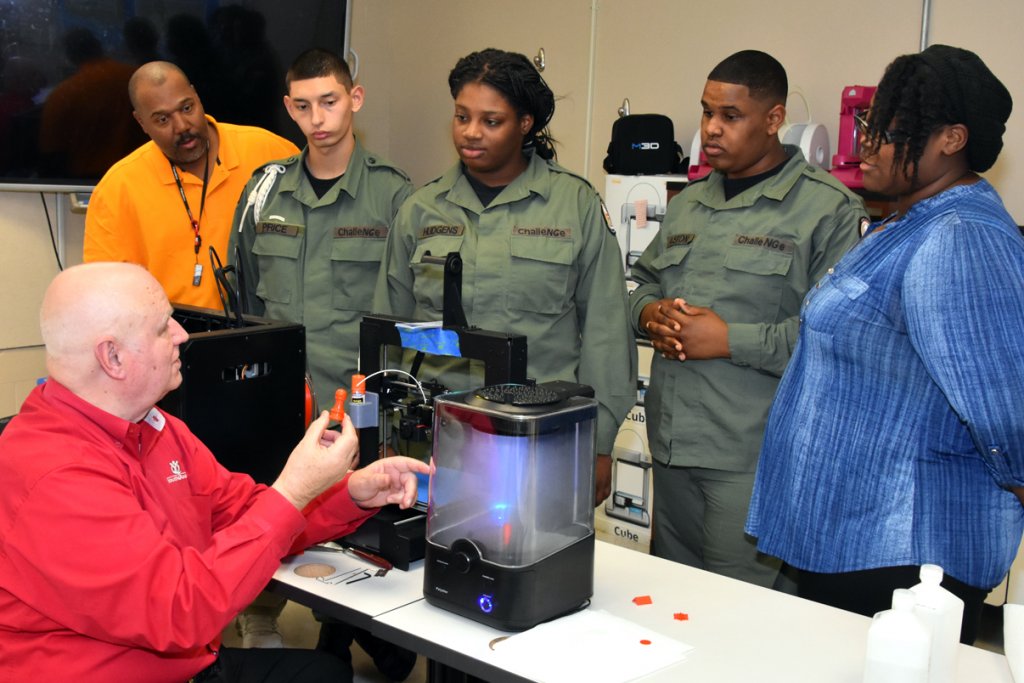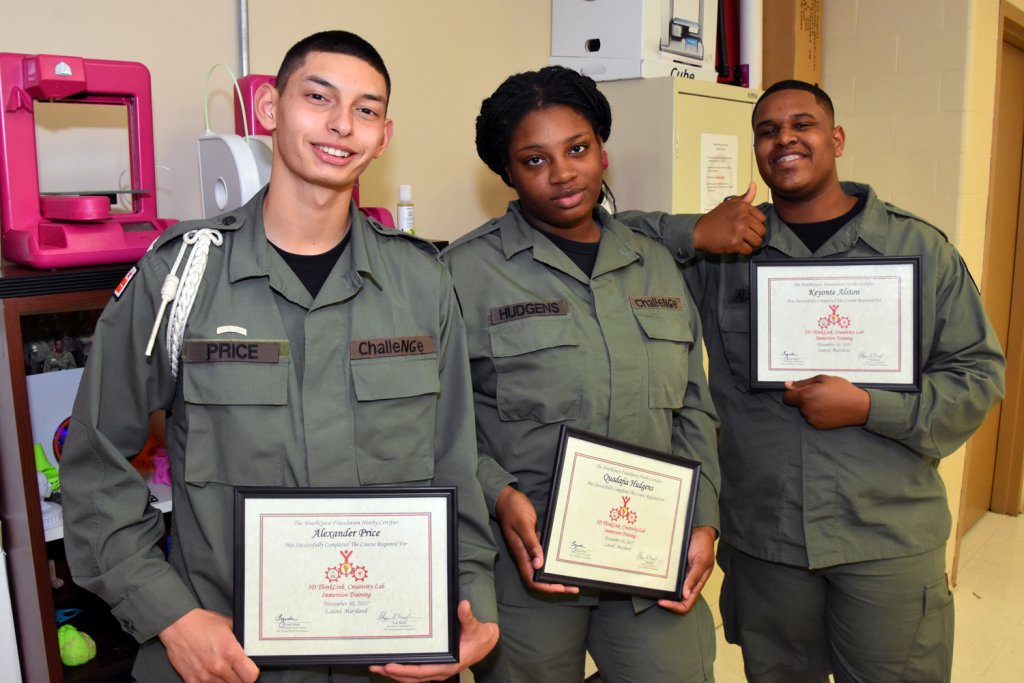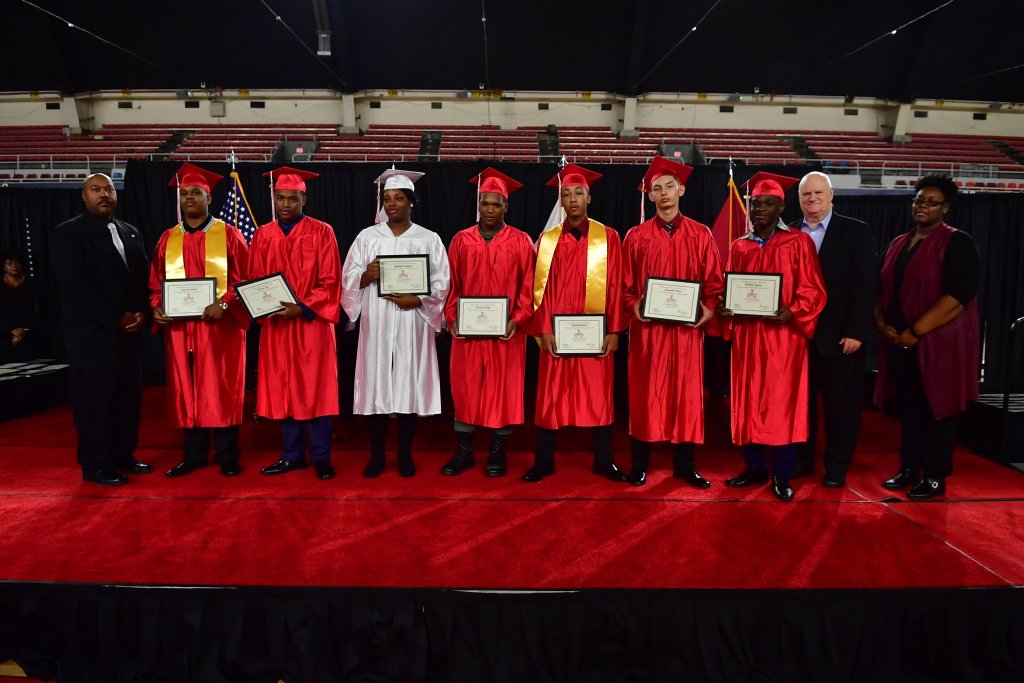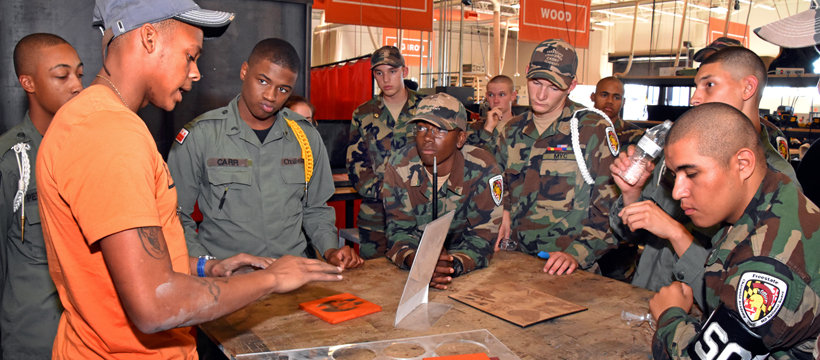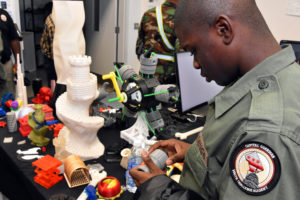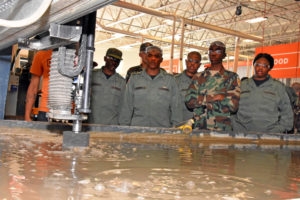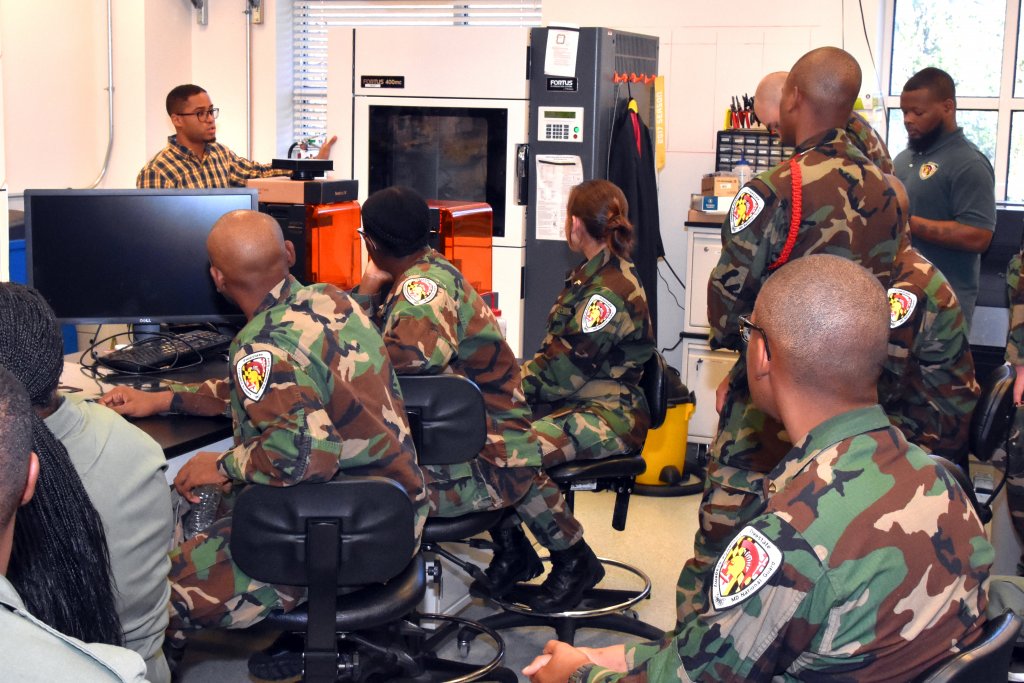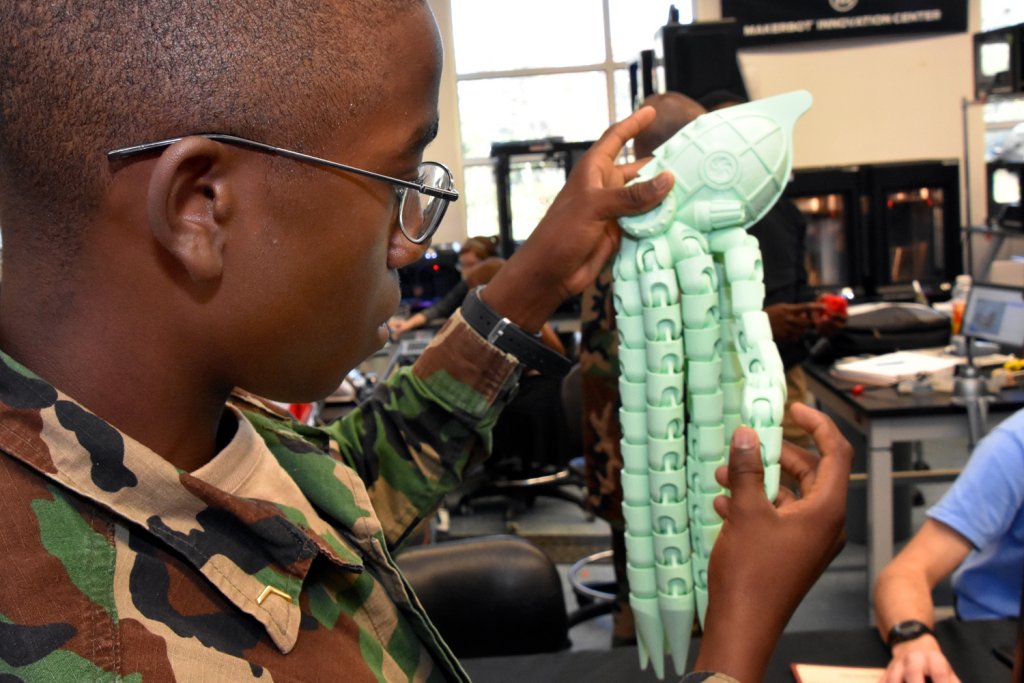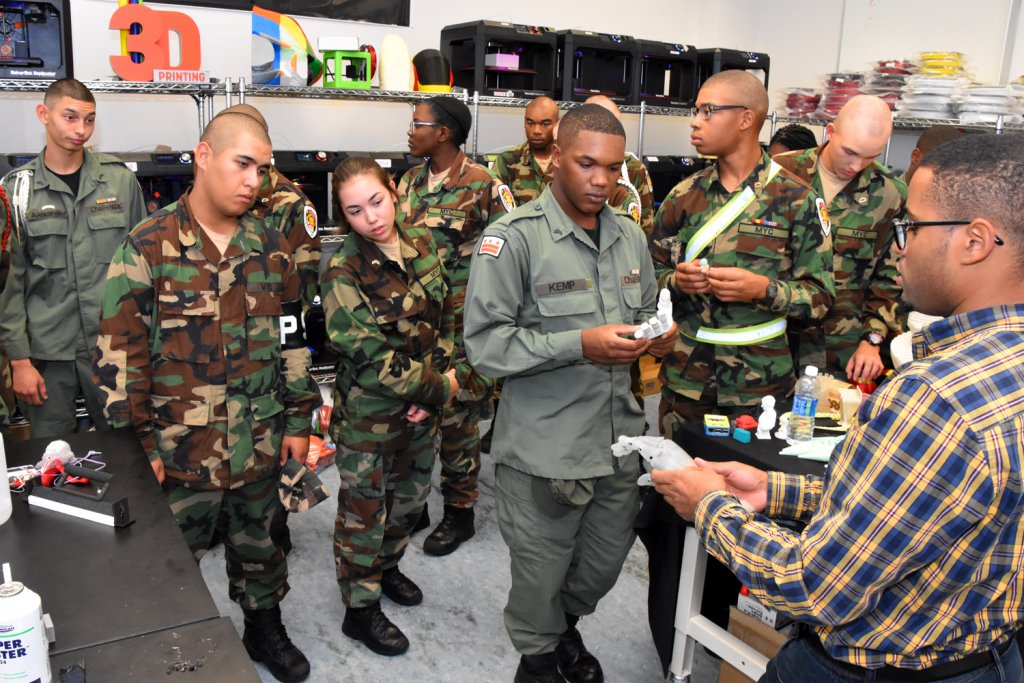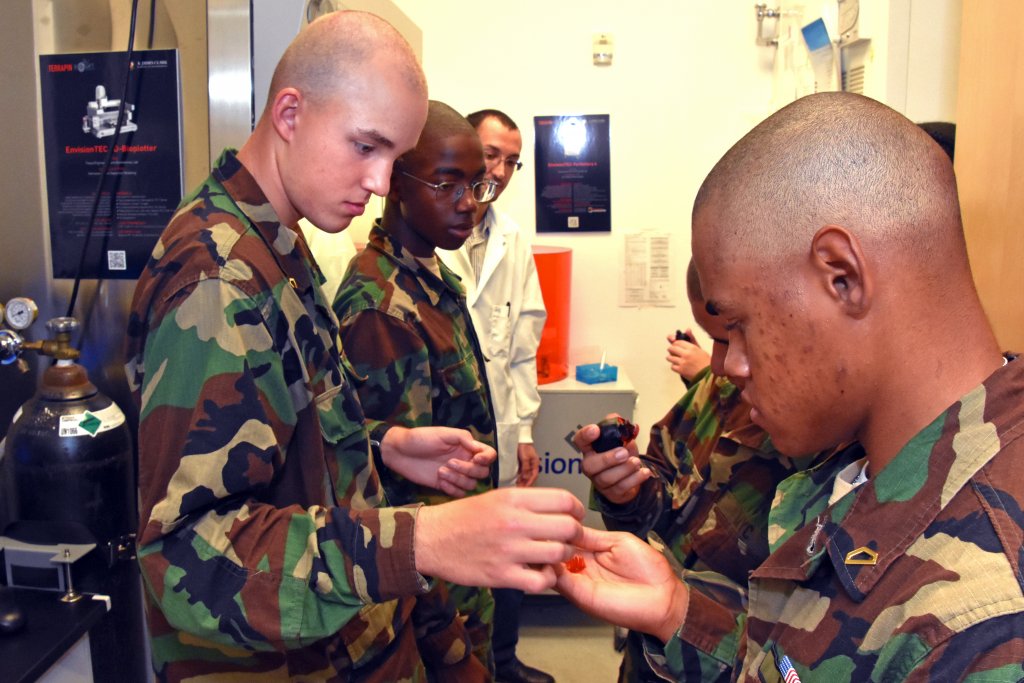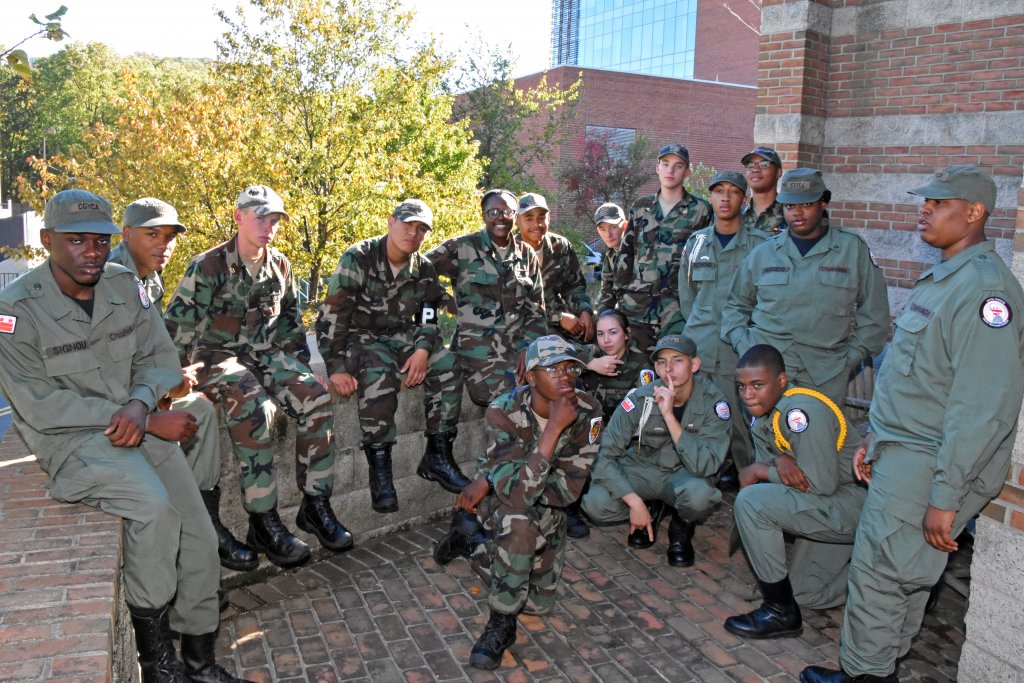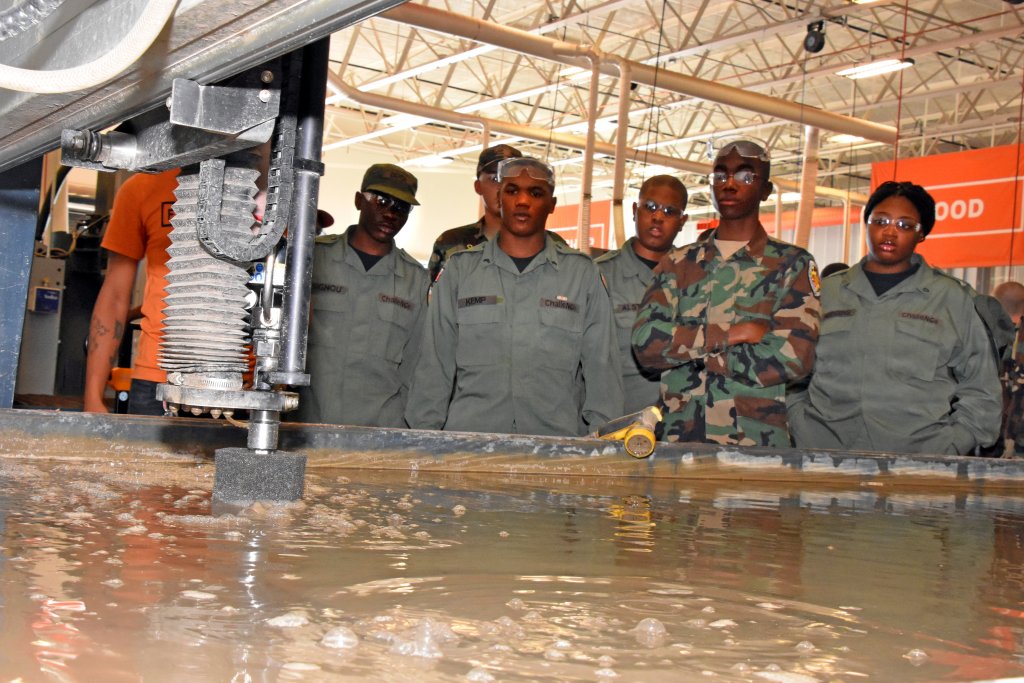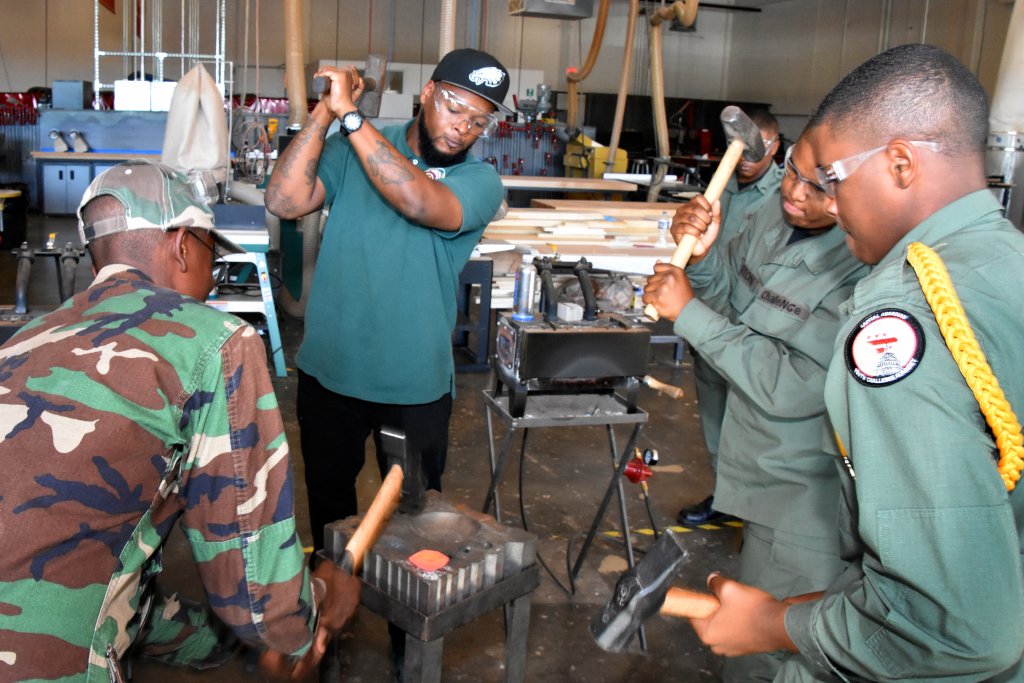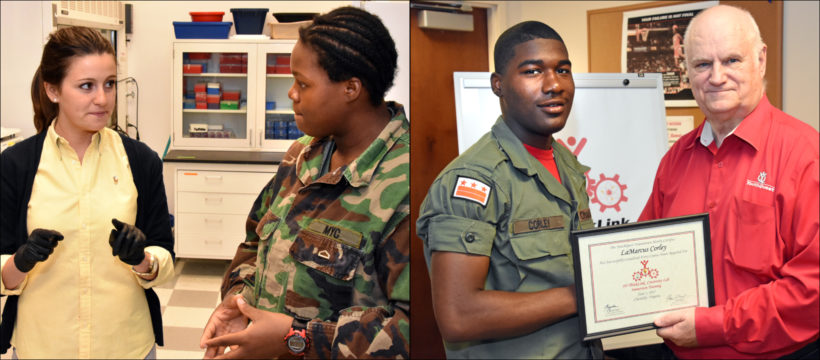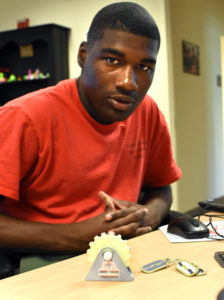These students from the 2018 spring class cycle earned $500 scholarships for these essays about their 3D ThinkLink experience.
By Bradley Berry
Freestate ChalleNGe Academy
3D printing has taught me how pressing a couple buttons can create a masterpiece. I’m very eager to see how I can apply 3D printing to real world careers. I feel that in a decade or two, every family in the United States will have a 3D printer inside their household. Many new jobs are surfacing due to 3D printing. I learned how using certain verbs such as extrude can change a 2D object into a 3D object that you can manipulate and even print.
3D printing has taught me how programming can be used to create physical and even moving pieces of art. I have become rather fascinated by 3D printing. I am amazed at what you can accomplish with a computer, a printer and an active imagination. I truly believe that by 2020 3D printers will be a commonly used household item! This 3D printing ThinkLink class is preparing me for our future in a fun, yet challenging way. I love the fact that it gets my imagination going.
Taking 3D printing has sparked my creativity in a whole new way, not just by giving me freedom to run wild but by teaching me how to do so. This class has made me want to expand my knowledge by attending programs that teach me about 3D printers and the different parts, how to build them, take them apart, and even what the different parts’ purposes are. I would say my favorite part has been watching a small simple 3D printer print just as good as a high tech big printer. I am considering going to college at Harford Community College for an engineering associate’s degree.
I understand that this scholarship is for a select few but I feel that I will expand my connections in the realm of programs and 3D printing itself that I couldn’t find elsewhere. I feel that I actually excel at 3D printing at the point to where I’ve become passionate about this and want to go far in this field. I have learned a lot and still have much to learn and I feel that this scholarship will benefit me greatly.
I have used some different techniques to see what possibilities may arise and I have often found myself creating new, crazier things. This program has changed my mind on what I want to do after Freestate. I never had an actual passion in life but I want this to be my career. I want to create and show others the possibility of 3D printing.
In conclusion, 3D printing has changed my life forever by opening doors that otherwise would’ve remain closed. It’s crazy how a few months can affect the rest of your life. For that I would like to thank Freestate and the YouthQuest Foundation’s 3D ThinkLink program. Even if I don’t get picked I will still hold the knowledge obtained so far.
________________________________________
By Trevor Haney
Freestate ChalleNGe Academy
The 3D ThinkLink experience has had a very positive impact on my time at Freestate. It has helped me in the program and taught me valuable skills. The 3D printing program has encouraged me and helped give me an extra reason to stay in this program. The 3D ThinkLink program is a great experience for the teens in this program.
Being in the 3D printing program has given me great encouragement about the Freestate program and my future with 3D printing. When I started Freestate I didn’t have enthusiasm about my life. Getting accepted into 3D printing was one of the first things that brought me hope at Freestate. In every class we have, I learn something new, which makes me very intrigued about the next class.
The class/program has helped me in many ways. Its helped time go by faster in Freestate by being in class every week and going on fun trips. It’s also helped me stay positive and push forward while I am here. Making good decisions in Freestate and staying on track has helped me to be able to remain in the 3D printing program. It has also helped me escape the boring life of the barracks. These are just a few of the ways this program has helped me through these past months.
I have learned many valuable skills while using the 3D ThinkLink software. I learned things like how to simply draw a circle or any 2D shape and then extrude it to make it 3D. I also learned more complicated things like taking the 3D circle (cylinder) and using offset to make it hollow. With these skills I have learned, I plan to one day hopefully own my own 3D printer and make many things. I also want to join the military and possibly find a job there that uses the special skills ThinkLink has taught me.
When the cadets and I first started the 3D classes, many people thought they were “dumb” or “boring”, but now everyone is interested and loves going to 3D class. It has improved their lives by teaching them that using their imagination and taking many steps while being creative can slowly, but surely, turn into something that was just an image in their mind at first, into something greater. It also showed them that hard work pays off and that being good in Freestate can get them accepted into a program like 3D. They can remember that and use it in their everyday lives.
In conclusion, 3D printing has greatly affected my life. It has taught me valuable skills that I’ll use in the future. It also has helped me remain positive and given me another reason to push forward with Freestate. This does not only help me, but any at-risk youth the 3D ThinkLink program serves.
________________________________________
By Dante Isom
Freestate ChalleNGe Academy
Coming into the room I thought that 3D printing would be very simplistic and easy. It was quite the opposite. There were so many things that I had to remember. There were all sorts of things I needed to know like how big the object was, how the object would look when it was printed, and what the proportions were. The thing that I thought would be so easy turned into one of the hardest things I had to do in a while.
3D printing isn’t something that everyone can master right off the bat. When we started with the simple stuff like making a single circle and naming it so that we could make it hide or show back up on the screen it seemed simple until you started to have a lot of objects and you forgot which object was what. The main problem I kept running into was forgetting to name the object that I needed to color or move and I would have to go back a few steps to make it work the way it was supposed to.
The personal impact that 3D printing had on me is that it made me challenge myself to not only think about what I had to do but to envision it in my head and make it a reality on the program Moment of Inspiration. Moment of Inspiration (MoI for short) is a program that you can use to make blueprints of 3D objects and make them move or design them in any way that you need them to look. 3D printing made me think about my future in the terms that I am thinking of taking up Graphic Design as a career and I could implement the things that I learned here in the future.
While I was in 3D printing, we went to a Science Expo in DC and I helped show how a 3D scanner worked and how you could scan an object and it would show up in the screen the way it would appear any other way as a solid. While we were at the expo I had the opportunity to walk around and observe the other booths that were there. My favorite booth was when we used chemicals to separate the genes from a strawberry in a test tube container and we could see the process happening and it was really cool. Another thing that I did at the expo was I went to a booth involving the science of taste and how your sensory organs worked together. In the experiment I ate a cinnamon flavored jelly bean while holding my nose. When I was holding my nose it tasted like a gooey mess and then when I removed my hand from my nose and took a breath it actually had a taste and it wasn’t as bad anymore.
In the end my 3D ThinkLink experience was a positive experiment for me because it shone some light of a future opportunity for me working in the graphic design industry or something that could involve 3D printing because I would already know how to work with the 3D printers.
________________________________________
By Jacob Foote
Capital Guardian Youth ChalleNGe Academy
My experience in 3D printing this year at the Capital Guardian Youth ChalleNGe Academy was awesome. On the first trip to the USA Science and Engineering Festival at the Washington, DC Convention Center, I learned a lot about 3D printing and myself. You can scan anything with the 3D camera and the software and put that on the computer to virtually print it. Then you can adjust it and make it look like a replica or add anything you like to change the design. I thought that was kind of amazing. It was also amazing that I learned all this very quickly before the guests arrived.
I also learned that you can make a lot of cool stuff for people with disabilities to help them out with their everyday needs. If I am selected to continue in the 3D printing post-residential program after I graduate, I will work to create a 3D printed wheelchair that is electric and easy for people to get around in. It will be lighter and cheaper so more people can afford to have the best quality things. At Local Motors they showed me a lot of stuff. It was fun to learn and see what they created. I had a lot of fun at Local Motors. They have a very large 3D printer big enough to make a car, a bus, a scooter, and even a chair. Basically I now know you can really create anything from a 3D printer. I saw them at Local Motors creating their electric bus named Olli. They added lots of technology to help the disabled people be more independent and safe.
The 3D ThinkLink class helped me a lot with my stay at the Capital Guardian Youth ChalleNGe Academy. It showed me how to present my work and show little kids in a way that they will understand 3D printing. At the science festival it felt good to show the kids and their parents how to scan shoes and the stuffed animals. Learning about the “smooth” printers at the University of Maryland was cool too. If I go to school there I am thinking of a lot of things I can print.
In conclusion, I think this class was excellent and it showed me that I have the skills to continue my education and use it in my future as a 3D designer.
